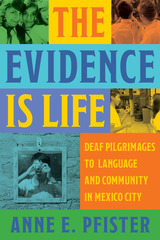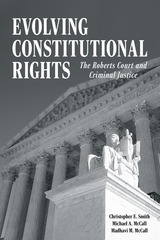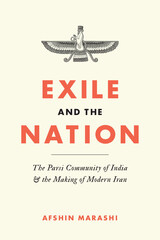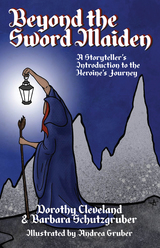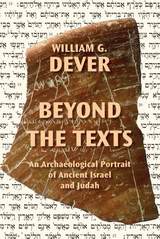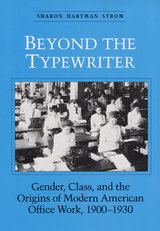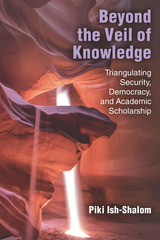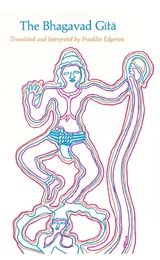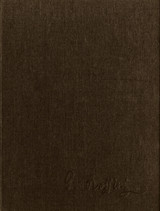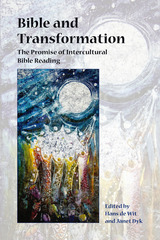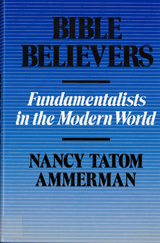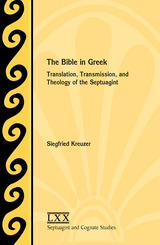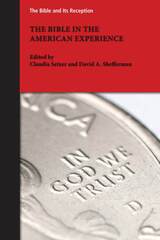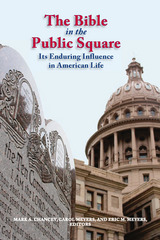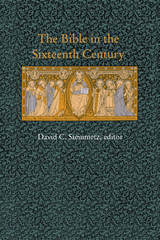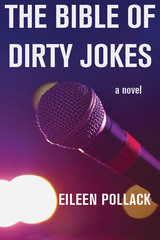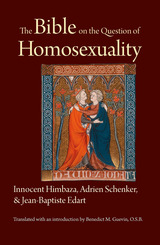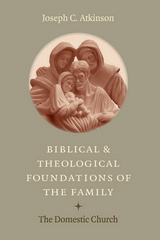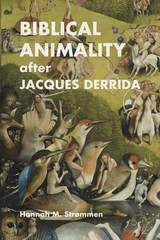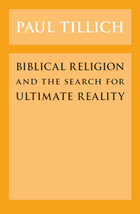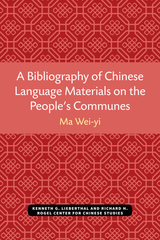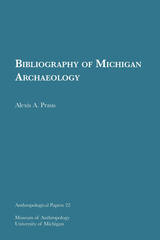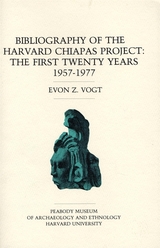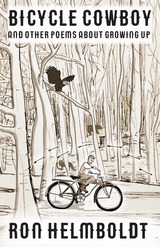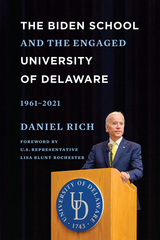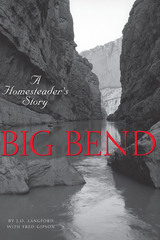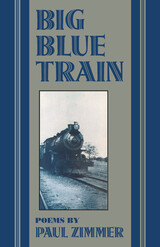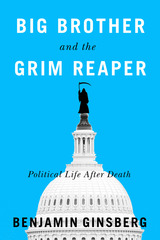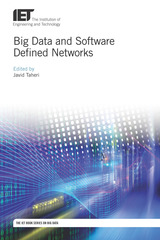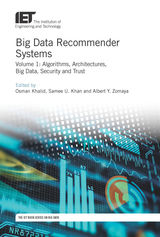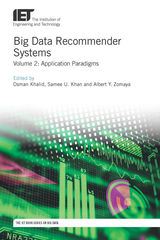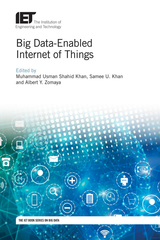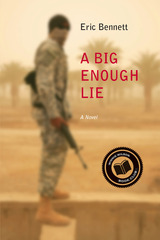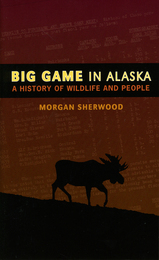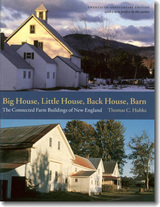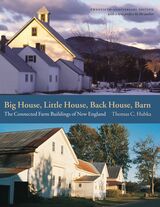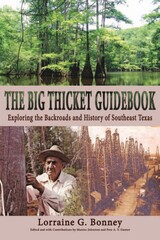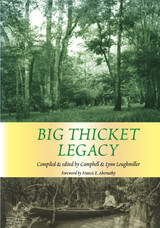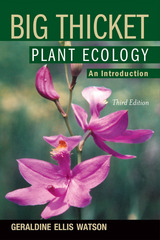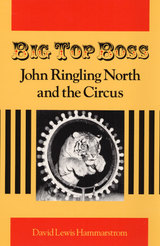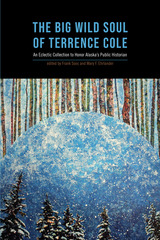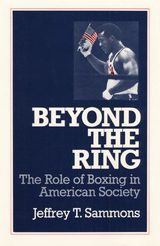 Beyond the Ring: The Role of Boxing in American Society
Jeffrey T. Sammons
University of Illinois Press, 1988 Primitive, dangerous, low-paying, crooked, exploitive--boxing, in all but a few cases, offered its athletes very little while taking everything. Why does boxing exist? What accounted for its decades-long popularity? What does its presence on the sport history landscape say about America? Jeffrey T. Sammons looks at how boxing reflected the society that fostered it at different points in history. In the time of John L. Sullivan, the sport provided an arena for testing law, order, and social growth. Jack Johnson's career reflected the racism, nationalism, and xenophobia of the Progressive era. At its popular peak in the 1920s, boxing expressed tensions as disparate as the tug-of-war between modernism and tradition and the women's rights movement. From there, Sammons traces how the sport intertwined with Nazi antisemitism, reflected the hopes of the New Deal, produced the seminal figure Joe Louis, and stood at the nexus of the union of organized crime with business and television. Finally, he shows how Muhammad Ali and reactions to him exposed the shifting tides of racial issues and American involvement in Vietnam.
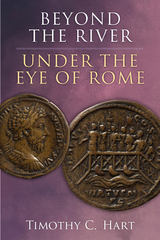 Beyond the River, Under the Eye of Rome
Timothy C. Hart
University of Michigan Press, 2024 Beyond the River, Under the Eye of Rome presents the Danube frontier of the Roman empire as the central stage for many of the most important political and military events of Roman history, from Trajan’s invasion of Dacia and the Marcomannic Wars, to the humbling of the Roman state power at the hands of the Goths and Huns. Hart delves into the cultural and political impacts of Rome’s interactions with Transdanubian peoples, emphasizing the Sarmatians of the Hungarian Plain, whose long encounter with the Roman Empire, he argues, created a problematic template for later dealings with Goths and Huns based on misapplied ethnographic and ecological tropes. Beyond the River, Under the Eye of Rome explores how Roman stereotypical perceptions of specific Danubian peoples directly influenced some of the most politically significant events of Roman antiquity.
Drawing on textual, inscriptional, and archaeological evidence, Hart illustrates how Roman ethnic and ecological stereotypes were employed in the Danubian borderland to support the imperial frontier edifice fundamentally at odds with the region’s natural topography. Distorted Roman perceptions of these Danubian neighbors resulted in disastrous mismanagement of border wars and migrant crises throughout the first five centuries CE. Beyond the River demonstrates how state-supported stereotypes, when coupled with Roman military and economic power, exerted strong influences on the social structures and evolving group identities of the peoples dwelling in the borderland.
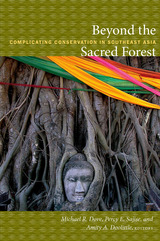 Beyond the Sacred Forest: Complicating Conservation in Southeast Asia
Michael R. Dove, Percy E. Sajise, and Amity A. Doolittle, eds.
Duke University Press, 2011 Reflecting new thinking about conservation in Southeast Asia, Beyond the Sacred Forest is the product of a unique, decade-long, interdisciplinary collaboration involving research in Indonesia, Malaysia, and the Philippines. Scholars from these countries and the United States rethink the translation of environmental concepts between East and West, particularly ideas of nature and culture; the meaning of conservation; and the ways that conservation policy is applied and transformed in the everyday landscapes of Southeast Asia. The contributors focus more on folk, community, and vernacular conservation discourses than on those of formal institutions and the state. They reject the notion that conservation only takes place in bounded, static, otherworldly spaces such as protected areas or sacred forests. Thick with ethnographic detail, their essays move beyond the forest to agriculture and other land uses, leave behind orthodox notions of the sacred, discard outdated ideas of environmental harmony and stasis, and reject views of the environment that seek to avoid or escape politics. Natural-resource managers and policymakers who work with this more complicated vision of nature and culture are likely to enjoy more enduring success than those who simply seek to remove the influence and impact of humans from conserved landscapes. As many of the essays suggest, this requires the ability to manage contradictions, to relinquish orthodox ideas of what conservation looks like, and to practice continuously adaptive management techniques. Contributors. Upik Djalins, Amity A. Doolittle, Michael R. Dove, Levita Duhaylungsod, Emily E. Harwell, Jeyamalar Kathirithamby-Wells, Lye Tuck-Po, Percy E. Sajise, Endah Sulistyawati, Yunita T. Winarto
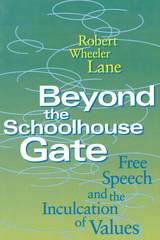 Beyond the Schoolhouse Gate: Free Speech and the Inculcation of Values
Robert Wheeler Lane
Temple University Press, 1995 Outstanding Academic Title, Choice, 1995
"What makes Lane's approach unique is that he weaves together different perspectives on the nature of school into a very colorful but informative and lucid tapestry that seeks the outer limits of free expression within the boundaries of the school context, always with an eye toward promoting the goal of inculcation of values, a worthy end for students and school officials alike."
--Samuel M. Davis, Allen Post Professor of Law, University of Georgia
*In a 1969 landmark case, the U.S. Supreme Court ruled that the suspension of student for protesting the Vietnam War violated the First Amendment.
*In 1972, the U.S. court of appeals upheld the suspension of black high school students for protesting the playing of "Dixie" at a pep rally.
*In 1986, a U.S. district court ruled that the suspension of a student for directing a vulgar gesture at one of his school teachers in a fast-food restaurant was unconstitutional.
On what grounds do public school students merit First Amendment protection? These three examples illustrate the broad range of litigation that has attempted to answer this question. Robert Wheeler Lane reviews the obstacles of this important issue and suggests a mix of protection and autonomy for students.
Pulling together evidence about the aims of public education, the changing legal status of children, and the values underlying freedom of expression, Lane debates the relationship between constitutional litigation and the dual pursuits of academic excellence and classroom order. Ultimately, utilizing both lower court and Supreme Court decisions, he finds that independent student expression deserves considerable constitutional protection; student expression assisted by school officials (such as school-funded student newspapers) should be subject to some control; and nonstudent expression (such as a school's selection of library books) should be left largely to the school's discretion. His conclusions suggest that in forging First Amendment protection for public school students, strongly held positions need not be extreme.
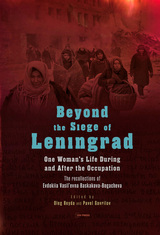 Beyond the Siege of Leningrad: One Woman’s Life during and after the Occupation: The Recollections of Evdokiia Vasil’evna Baskakova-Bogacheva
Pavel Gavrilov
Central European University Press, 2024 This memoir about the experiences of German occupation during the siege of Leningrad (now Saint Petersburg) was written by Moscow-born Evdokiia Vasil’evna Baskakova-Bogacheva (1888–1976), an émigré in Australia, at the age of eighty-one. The text had been forgotten in the Museum of Russian Culture in San Francisco since 1970 until the editors of this volume discovered it. In the memoirs, after accounting on her youth spent against the background of the First World War and of the two Russian revolutions of 1917, Evdokiia describes the inferno of the Nazi occupation as experienced in a suburb of Leningrad in 1941-43. She survived for nearly two years almost on the front line, within a few kilometers of the blockade ring. As a medical practitioner, she became useful for the occupational authorities and the ever-shrinking town population, until her family was evacuated to the west in October 1943. Besides hunger, discord, disease, the hunt for food and firewood, along with violence and death, Evdokiia’s account deals with various forms of cooperation between Soviet citizens and the new authorities. All the events she recalls can be confirmed through other sources. The introduction and the detailed notes to the text help the reader to locate Evdokiia’s recollections in time and place, and situate them in their historical context.
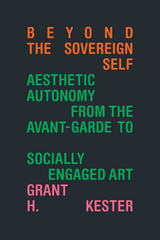 Beyond the Sovereign Self: Aesthetic Autonomy from the Avant-Garde to Socially Engaged Art
Grant H. Kester
Duke University Press, 2024 In Beyond the Sovereign Self Grant H. Kester continues the critique of aesthetic autonomy begun in The Sovereign Self, showing how socially engaged art provides an alternative aesthetic with greater possibilities for critical practice. Instead of grounding art in its distance from the social, Kester shows how socially engaged art, developed in conjunction with forms of social or political resistance, encourages the creative capacity required for collective political transformation. Among others, Kester analyzes the work of conceptual artist Adrian Piper, experimental practices associated with the escrache tradition in Argentina, and indigenous Canadian artists such as Nadia Myre and Michèle Taïna Audette, showing how socially engaged art catalyzes forms of resistance that operate beyond the institutional art world. From the Americas and Europe to Iran and South Africa, Kester presents a historical genealogy of recent engaged art practices rooted in a deep history of cultural production, beginning with nineteenth-century political struggles and continuing into contemporary anticolonial resistance and other social movements.
Beyond the Stars 3: The Material World in American Popular Film
Paul Loukides
University of Wisconsin Press This anthology deals with such diverse conventions as the treatment of food, the iconography of weapons, the paraphernalia of baseball, the uses of clothing, tools, and technologies, and the representation of art and print media within the world of film. The essays within this collection help to reveal how the objects in American movies reflect both the fixed and changeable cultural assumptions of film makers and film audiences.
Beyond the Stars 4: Locales in American Popular Film
Paul Loukides
University of Wisconsin Press, 1990 In this volume of the Beyond the Stars series, the subject of the various individual essays are discrete conventions of movie locales, but the subject of the volume as a whole—as with the other books in the series—is the viability of film convention studies as a tool for the study of film and American culture.
 Beyond the Subtitle: Remapping European Art Cinema
Mark Betz
University of Minnesota Press, 2009 A provocative rethinking of national cinema, authorship, and the discipline of film studies Examining European art films of the 1950s and 1960s, Mark Betz argues that it is time for film analysis to move beyond prevailing New Wave historiography, mired in outdated notions of nationalism and dragged down by decades of auteurist criticism. Focusing on the cinemas of France and Italy, Betz reveals how the flowering of European art films in the postwar era is inseparable from the complex historical and political frameworks of the time. Remapping the practices and paradigms of film history, Beyond the Subtitle calls into question the concept of national cinema and explores the largely neglected subjects of subtitling, dubbing, and art film coproductions. Betz also analyzes the iconic figure of the “wandering woman,” or flanêuse, who appears in many of the films under consideration, in light of the postwar boom, modernization, and decolonization. Finally, he rescues the omnibus films to show the need for a new film studies approach. Beyond the Subtitle demonstrates how the geopolitical and institutional contexts that gave rise to these films and to academic film studies should be incorporated into future analysis in order to gain new insight into debates on race, gender, and imperialism.
Beyond the Sword Maiden: A Storyteller's Introduction to the Heroine's Journey
Dorothy Cleveland & Barbara Schutzgruber
Parkhurst Brothers, Inc., 2017 "All too often both traditional storytellers and the media regard the Hero's Journey as the "one true recipe for a good story." In this well-researched and clearly written book, Dorothy Cleveland and Barbara Schutzgruber prove that there are other kinds of stories that are just as essential to the human experience: tales of survival and transformation that we may encounter at any point in our lives. With deep knowledge and personal honesty, these two incredible women bring us the Heroine's Journey, tracing its origins and possibilities from the oldest folktales to life in the 21st century. This book is a much-needed addition to any storyteller's resource library."
---Csenge Virág Zalka, storyteller, author of Tales of Superhuman Powers and Dancing on Blades
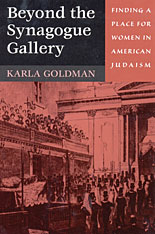 Beyond the Synagogue Gallery: Finding a Place for Women in American Judaism
Karla Goldman
Harvard University Press, 2000 Beyond the Synagogue Gallery recounts the emergence of new roles for American Jewish women in public worship and synagogue life. Karla Goldman's study of changing patterns of female religiosity is a story of acculturation, of adjustments made to fit Jewish worship into American society.
Goldman focuses on the nineteenth century. This was an era in which immigrant communities strove for middle-class respectability for themselves and their religion, even while fearing a loss of traditions and identity. For acculturating Jews some practices, like the ritual bath, quickly disappeared. Women's traditional segregation from the service in screened women's galleries was gradually replaced by family pews and mixed choirs. By the end of the century, with the rising tide of Jewish immigration from Russia and Eastern Europe, the spread of women's social and religious activism within a network of organizations brought collective strength to the nation's established Jewish community. Throughout these changing times, though, Goldman notes persistent ambiguous feelings about the appropriate place of women in Judaism, even among reformers.
This account of the evolving religious identities of American Jewish women expands our understanding of women's religious roles and of the Americanization of Judaism in the nineteenth century; it makes an essential contribution to the history of religion in America.
Beyond the Texts: An Archaeological Portrait of Ancient Israel and Judah
William G. Dever
SBL Press, 2017 A handbook for biblical scholars and historians of the Ancient Near East
William G. Dever offers a welcome perspective on ancient Israel and Judah that prioritizes the archaeological remains to render history as it was—not as the biblical writers argue it should have been. Drawing from the most recent archaeological data as interpreted from a nontheological point of view and supplementing that data with biblical material only when it converges with the archaeological record, Dever analyzes all the evidence at hand to provide a new history of ancient Israel and Judah that is accessible to all interested readers.
Features
- A new approach to the history of ancient Israel
- Extensive bibliography
- More than eighty maps and illustrations
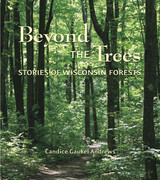 Beyond the Trees: Stories of Wisconsin Forests
Candice Gaukel Andrews
Wisconsin Historical Society Press, 2011 Nature writer Candice Andrews weaves together contemporary observations and historical reminisces in Beyond the Trees: Stories of Wisconsin Forests. Readers will journey to some of the most pristine and notable places in the Upper Midwest—Wisconsin’s state and national forests. The diversity of landscapes evoked in Beyond the Trees is matched only by the characters who inhabit them. Traverse the footsteps of Ojibwe hunters and early explorers in the remote woods of Brule River State Forest. Trek past the remains of bygone logging and CCC camps in the Chequamegon-Nicolet National Forest. Glimpse into the world of Great Lakes shipping in Point Beach State Forest. Walk on trails named after John Muir and Increase Lapham in the Kettle Moraine State Forest, and experience urban green space at Milwaukee’s Havenwoods State Forest. From orchids to oak savanna, beaver to brook trout, and white-tailed deer to timber wolves, discover Wisconsin’s wildlife and flora and fauna. Archival images, informative sidebars, locator maps, and contact information for Wisconsin state and national forests round out this unique book.
Beyond the Typewriter: Gender, Class, and the Origins of Modern American Office Work, 1900-1930
Sharon Hartman Strom
University of Illinois Press, 1992 In the early twentieth century, office jobs allowed increasing numbers of women a new option for careers. Sharon Hartman Strom's detailed account of early office working conditions and practices draws on archival and anecdotal data to analyze women office workers' ambitions. She also explores how the influences of scientific management, personnel management, and secondary vocational education affected office workplaces and hierarchies.
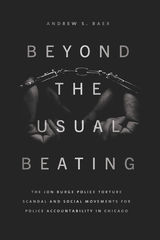 Beyond the Usual Beating: The Jon Burge Police Torture Scandal and Social Movements for Police Accountability in Chicago
Andrew S. Baer
University of Chicago Press, 2020 The malign and long-lasting influence of Chicago police commander Jon Burge cannot be overestimated, particularly as fresh examples of local and national criminal-justice abuse continue to surface with dismaying frequency. Burge’s decades-long tenure on the Chicago police force was marked by racist and barbaric interrogation methods, including psychological torture, burnings, and mock executions—techniques that went far “beyond the usual beating.” After being exposed in 1989, he became a symbol of police brutality and the unequal treatment of nonwhite people, and the persistent outcry against him led to reforms such as the abolition of the death penalty in Illinois.
But Burge hardly developed or operated in a vacuum, as Andrew S. Baer explores to stark effect here. He identifies the darkness of the Burge era as a product of local social forces, arising from a specific milieu beyond the nationwide racialized reactionary fever of the 1960s and 1970s. Similarly, the popular resistance movements that rallied in his wake actually predated Burge’s exposure but cohered with unexpected power due to the galvanizing focus on his crimes and abuses. For more than thirty years, a shifting coalition including torture survivors, their families, civil rights attorneys, and journalists helped to corroborate allegations of violence, free the wrongfully convicted, have Burge fired and incarcerated, and win passage of a municipal reparations package, among other victories. Beyond the Usual Beating reveals that though the Burge scandal underscores the relationship between personal bigotry and structural racism in the criminal justice system, it also shows how ordinary people held perpetrators accountable in the face of intransigent local power.
Beyond the Veil of Knowledge: Triangulating Security, Democracy, and Academic Scholarship
Piki Ish-Shalom
University of Michigan Press, 2019 Is there a need to remodel constructivism to be more politically attuned? Author Piki Ish-Shalom calls for an activist academy that engages society and the polity to prevent the watering down of democracy, while helping to create a space for criticism. In this book, he suggests several concrete measures for this engagement within three spheres: individual theoretical work, the academic community as a whole, and within society and the polity. Beyond the Veil of Knowledge suggests that essentially contested concepts are a key medium that politicians use to try to minimize public resistance to their political goals. For constructivists, this means that the social construction of both social knowledge and the social world can be understood as the sociopolitical construction of knowledge and the sociopolitical world.
Beyond the Visual: Multisensory Modes of Beholding Art
Edited by Ken Wilder and Aaron McPeake
University College London, 2025 A groundbreaking volume on the role of the non-visual in art and the emerging field of blindness arts.
In what ways can visual art be enjoyed beyond sight? Bringing together leading international scholars and artists in the emerging field of “blindness arts”—including blind and partially blind artists, curators, advocates for inclusive practices and models of audio description, cognitive psychologists, and theorists of installation, performance, and sound art—Beyond the Visual seeks to broaden the discussion of multisensory ways of beholding contemporary art, with a particular emphasis on modes that transcend a dependency upon sight. Through diverse examples of multisensory engagement, it contributes to ongoing conversations around accessibility and blindness in art while also challenging and expanding our understanding of how art is experienced.
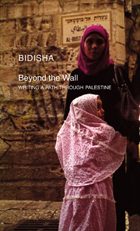 Beyond the Wall: Writing a Path through Palestine
Bidisha
Seagull Books, 2012 Their voices come from Bethlehem and Hebron. You can hear them from Jerusalem to Nazareth, and witness their protests in Gaza and Ramallah. From the refugee camps in the West Bank, you can hear the voices of the Palestinian people call out to demand self-determination and a better quality of life. But outside of Israel and the occupied territories, these individual voices are rarely heard—until now. In Beyond the Wall: Writing a Path through Palestine, internationally renowned feminist critic and writer Bidisha collects the testimonies of an occupied people—ordinary citizens, activists, children—alongside those of international aid workers and foreign visitors for a revelatory look at a population on the margins. Called “beautifully belligerent, [and] fiercely intelligent” by The Independent and a “dazzlingly creative writer” by the LondonTimes, Bidisha amplifies the voices of the Palestinian people in this book and lends to them her own considerable strength.
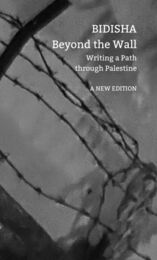 Beyond the Wall: Writing a Path through Palestine
Bidisha
Seagull Books, 2025 Through the voices of those who live it, Beyond the Wall unveils the everyday realities of occupation, resilience, and the fight for dignity in Palestine.
Their voices come from Bethlehem and Hebron. You can hear them from Jerusalem to Nazareth, and witness their protests in Gaza and Ramallah. From the refugee camps in the West Bank, you can hear the voices of the Palestinian people call out to demand self-determination and a better quality of life. But outside of Israel and the occupied territories, these individual voices are rarely heard—until now.
In Beyond the Wall: Writing a Path through Palestine, internationally renowned feminist critic and writer Bidisha collects the testimonies of an occupied people—ordinary citizens, activists, and children—alongside those of international aid workers and foreign visitors for a revelatory look at a population on the margins.
Called “beautifully belligerent, [and] fiercely intelligent” by The Independent and a “dazzlingly creative writer” by the London Times, Bidisha amplifies the voices of the Palestinian people in this book and lends them her own considerable strength.
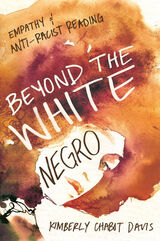 Beyond the White Negro: Empathy and Anti-Racist Reading
Kimberly Chabot Davis
University of Illinois Press, 2014 Critics often characterize white consumption of African American culture as a form of theft that echoes the fantasies of 1950s-era bohemians, or "White Negroes," who romanticized black culture as anarchic and sexually potent. In Beyond the White Negro, Kimberly Chabot Davis claims such a view fails to describe the varied politics of racial crossover in the past fifteen years.
Davis analyzes how white engagement with African American novels, film narratives, and hip-hop can help form anti-racist attitudes that may catalyze social change and racial justice. Though acknowledging past failures to establish cross-racial empathy, she focuses on examples that show avenues for future progress and change. Her study of ethnographic data from book clubs and college classrooms shows how engagement with African American culture and pedagogical support can lead to the kinds of white self-examination that make empathy possible. The result is a groundbreaking text that challenges the trend of focusing on society's failures in achieving cross-racial empathy and instead explores possible avenues for change.
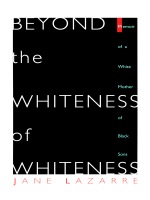 Beyond The Whiteness of Whiteness: Memoir of a White Mother of Black Sons
Jane Lazarre
Duke University Press, 1997 “I am Black,” Jane Lazarre’s son tells her. “I have a Jewish mother, but I am not ‘biracial.’ That term is meaningless to me.” She understands, she says—but he tells her, gently, that he doesn’t think so, that she can’t understand this completely because she is white. Beyond the Whiteness of Whiteness is Jane Lazarre’s memoir of coming to terms with this painful truth, of learning to look into the nature of whiteness in a way that passionately informs the connections between herself and her family. A moving account of life in a biracial family, this book is a powerful meditation on motherhood and racism in America, the story of an education into the realities of African American culture.
Lazarre has spent over twenty-five years living in a Black American family, married to an African American man, birthing and raising two sons. A teacher of African American literature, she has been influenced by an autobiographical tradition that is characterized by a speaking out against racism and a grounding of that expression in one’s own experience—an overlapping of the stories of one’s own life and the world. Like the stories of that tradition, Lazarre’s is a recovery of memories that come together in this book with a new sense of meaning. From a crucial moment in which consciousness is transformed, to recalling and accepting the nature and realities of whiteness, each step describes an aspect of her internal and intellectual journey. Recalling events that opened her eyes to her sons’ and husband’s experience as Black Americans—an operation, turned into a horrific nightmare by a doctor’s unconscious racism or the jarring truths brought home by a visit to an exhibit on slavery at the Richmond Museum of the Confederacy—or her own revealing missteps, Lazarre describes a movement from silence to voice, to a commitment to action, and to an appreciation of the value of a fluid, even ambiguous, identity. It is a coming of age that permits a final retelling of family history and family reunion.
With her skill as a novelist and her experience as a teacher, Jane Lazarre has crafted a narrative as compelling as it is telling. It eloquently describes the author’s delight at being accepted into her husband’s family and attests to the power of motherhood. And as personal as this story is, it is a remarkably incisive account of how perceptions of racial difference lie at the heart of the history and culture of America.
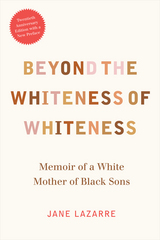 Beyond the Whiteness of Whiteness: Memoir of a White Mother of Black Sons
Jane Lazarre
Duke University Press, 1996 "I am Black," Jane Lazarre's son tells her. "I have a Jewish mother, but I am not 'biracial.' That term is meaningless to me." In this moving memoir, Jane Lazarre, the white Jewish mother of now adult Black sons, offers a powerful meditation on motherhood and racism in America as she tells the story of how she came to understand the experiences of her African American husband, their growing sons, and their extended family. Recounting her education, as a wife, mother, and scholar-teacher, into the realities of African American life, Lazarre shows how although racism and white privilege lie at the heart of American history and culture, any of us can comprehend the experience of another through empathy and learning. This Twentieth Anniversary Edition features a new preface, in which Lazarre's elegy for Mother Emanuel AME in Charleston, South Carolina, Michael Brown, Eric Garner, and so many others, reminds us of the continued resonance of race in American life. As #BlackLivesMatter gains momentum, Beyond the Whiteness of Whiteness is more urgent and essential than ever.
 Beyond the Wire: Former Prisoners and Conflict Transformation in Northern Ireland
Peter Shirlow and Kieran McEvoy
Pluto Press, 2008 This book provides the first detailed examination of the role played by former loyalist and republican prisoners in grass roots conflict transformation work in the Northern Ireland peace process. It challenges the assumed passivity of former prisoners and ex-combatants. Instead, it suggests that such individuals and the groups which they formed have been key agents of conflict transformation. They have provided leadership in challenging cultures of violence, developed practical methods of resolving inter-communal conflict and found ways for communities to explore their troubled past. In analysing this, the authors challenge the sterile demonisation of former prisoners and the processes that maintain their exclusion from normal civic and social life.
The book is a constructive reminder of the need for full participation of both former combatants and victims in post-conflict transformation. It also lays out a new agenda for reconciliation which suggests that conflict transformation can and should begin ‘from the extremes’.
The book will be of interest to students of criminology, peace and conflict studies, law and politics, geography and sociology as well as those with a particular interest in the Northern Ireland conflict.
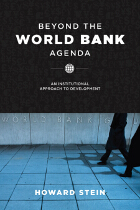 Beyond the World Bank Agenda: An Institutional Approach to Development
Howard Stein
University of Chicago Press, 2008 Despite massive investment of money and research aimed at ameliorating third-world poverty, the development strategies of the international financial institutions over the past few decades have been a profound failure. Under the tutelage of the World Bank, developing countries have experienced lower growth and rising inequality compared to previous periods. In Beyond the World Bank Agenda, Howard Stein argues that the controversial institution is plagued by a myopic, neoclassical mindset that wrongly focuses on individual rationality and downplays the social and political contexts that can either facilitate or impede development.
Drawing on the examples of Africa, Asia, Latin America, and transitional European economies, this revolutionary volume proposes an alternative vision of institutional development with chapter-length applications to finance, state formation, and health care to provide a holistic, contextualized solution to the problems of developing nations. Beyond the World Bank Agenda will be essential reading for anyone concerned with forging a new strategy for sustainable development.
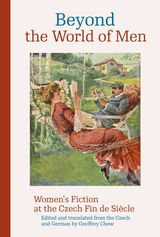 Beyond the World of Men: Women’s Fiction at the Czech Fin de Siècle
Edited by Geoffrey Chew
Karolinum Press, 2024 An inclusive collection of modern Czech short fiction that features overlooked women writers.
Bringing together Czech fiction published by women between 1890 and 1910, Beyond the World of Men presents works that confront pivotal issues of the time, including the “woman question” and women’s rights, class conflict, lesbian love, and the relationship between the aristocracy and the Czech peasantry (as in two stories originally written in German by the aristocrat Marie von Ebner-Eschenbach). The collection contains stories that are of literary merit, but also hold historical value. In these works, the authors offer trenchant social commentary while injecting both comic and sentimental elements into their writing, employing humanity and subtlety.
As a whole, the collection suggests a revision of the critical understanding of Czech literary modernism; these writers represent voices that were not usually heard in the male writing of the period. They also demand evaluation in their differing (but constant) reactions to earlier women’s writing in Czech and in other European languages, but particularly that of the central figure of Božena Nemcová, to whose canonic novel Babicka they constantly return.
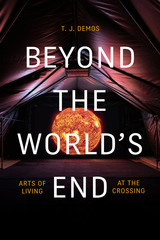 Beyond the World's End: Arts of Living at the Crossing
T. J. Demos
Duke University Press, 2020 In Beyond the World's End T. J. Demos explores cultural practices that provide radical propositions for living in a world beset by environmental and political crises. Rethinking relationships between aesthetics and an expanded political ecology that foregrounds just futurity, Demos examines how contemporary artists are diversely addressing urgent themes, including John Akomfrah's cinematic entanglements of racial capitalism with current environmental threats, the visual politics of climate refugees in work by Forensic Architecture and Teddy Cruz and Fonna Forman, and moving images of Afrofuturist climate justice in projects by Arthur Jafa and Martine Syms. Demos considers video and mixed-media art that responds to resource extraction in works by Angela Melitopoulos, Allora & Calzadilla, and Ursula Biemann, as well as the multispecies ecologies of Terike Haapoja and Public Studio. Throughout Demos contends that contemporary intersections of aesthetics and politics, as exemplified in the Standing Rock #NoDAPL campaign and the Zad's autonomous zone in France, are creating the imaginaries that will be crucial to building a socially just and flourishing future.
 Beyond the Zonules of Zinn: A Fantastic Journey Through Your Brain
David Bainbridge
Harvard University Press, 2008 In his latest book, David Bainbridge combines an otherworldly journey through the central nervous system with an accessible and entertaining account of how the brain's anatomy has often misled anatomists about its function. Bainbridge uses the structure of the brain to set his book apart from the many volumes that focus on brain function. He shows that for hundreds of years, natural philosophers have been interested in the gray matter inside our skulls, but all they had to go on was its structure. Almost every knob, protrusion, canal, and crease was named before anyone had an inkling of what it did--a kind of biological terra incognita with many weird and wonderful names: the zonules of Zinn, the obex ("the most Scrabble-friendly word in all of neuroanatomy"), the aqueduct of Sylvius, the tract of Goll.
This uniquely accessible approach lays out what is known about the brain (its structure), what we can hope to know (its function), and what we may never know (its evolution). Along the way Bainbridge tells lots of wonderful stories about the "two pounds of blancmange" within our skulls, and tells them all with wit and style.
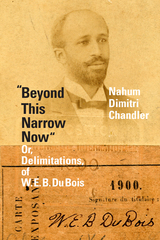 "Beyond This Narrow Now": Or, Delimitations, of W. E. B. Du Bois
Nadhum Dimitri Chandler
Duke University Press, 2022 In “Beyond This Narrow Now” Nahum Dimitri Chandler shows that the premises of W. E. B. Du Bois's thinking at the turn of the twentieth century stand as fundamental references for the whole itinerary of his thought. Opening with a distinct approach to the legacy of Du Bois, Chandler proceeds through a series of close readings of Du Bois's early essays, previously unpublished or seldom studied, with discrete annotations of The Souls of Black Folk: Essays and Sketches of 1903, elucidating and elaborating basic epistemological terms of his thought. With theoretical attention to how the African American stands as an example of possibility for Du Bois and renders problematic traditional ontological thought, Chandler also proposes that Du Bois's most well-known phrase—“the problem of the color line”—sustains more conceptual depth than has yet been understood, with pertinence for our accounts of modern systems of enslavement and imperial colonialism and the incipient moments of modern capitalization. Chandler's work exemplifies a more profound engagement with Du Bois, demonstrating that he must be re-read, appreciated, and studied anew as a philosophical writer and thinker contemporary to our time.
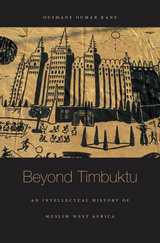 Beyond Timbuktu: An Intellectual History of Muslim West Africa
Ousmane Oumar Kane
Harvard University Press, 2016 Renowned for its madrassas and archives of rare Arabic manuscripts, Timbuktu is famous as a great center of Muslim learning from Islam’s Golden Age. Yet Timbuktu is not unique. It was one among many scholarly centers to exist in precolonial West Africa. Beyond Timbuktu charts the rise of Muslim learning in West Africa from the beginning of Islam to the present day, examining the shifting contexts that have influenced the production and dissemination of Islamic knowledge—and shaped the sometimes conflicting interpretations of Muslim intellectuals—over the course of centuries.
Highlighting the significant breadth and versatility of the Muslim intellectual tradition in sub-Saharan Africa, Ousmane Kane corrects lingering misconceptions in both the West and the Middle East that Africa’s Muslim heritage represents a minor thread in Islam’s larger tapestry. West African Muslims have never been isolated. To the contrary, their connection with Muslims worldwide is robust and longstanding. The Sahara was not an insuperable barrier but a bridge that allowed the Arabo-Berbers of the North to sustain relations with West African Muslims through trade, diplomacy, and intellectual and spiritual exchange.
The West African tradition of Islamic learning has grown in tandem with the spread of Arabic literacy, making Arabic the most widely spoken language in Africa today. In the postcolonial period, dramatic transformations in West African education, together with the rise of media technologies and the ever-evolving public roles of African Muslim intellectuals, continue to spread knowledge of Islam throughout the continent.
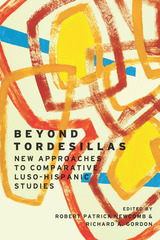 Beyond Tordesillas: New Approaches to Comparative Luso-Hispanic Studies
Edited by Robert Patrick Newcomb and Richard A. Gordon
Ohio State University Press, 2017 Beyond Tordesillas: New Approaches to Comparative Luso-Hispanic Studies is the first volume of its kind to be published in English. Bringing together young and established scholars, it seeks to consolidate the vital work being done on the connections between the Spanish- and Portuguese-speaking worlds on both sides of the Atlantic. The volume builds from an understanding that Iberian and Latin American cultures are inherently transoceanic—having engaged in earlier eras in parallel, and sometimes interconnected, colonization projects around the world and more recently in postcolonial evaluations of these practices and their legacies.
The jumping-off point for Beyond Tordesillas is the critic Jorge Schwartz’s evocative call to arms, “Down with Tordesillas!” In this groundbreaking essay, Schwartz looks to the imaginary line created by the Treaty of Tordesillas (1494), which divided the known world into Spanish and Portuguese spheres of influence, to stand in for generations of literary and cultural noncommunication between the Spanish- and Portuguese-speaking spheres, and their attendant academic disciplines. This volume’s contributions range topically across continents, from the Iberian Peninsula to Latin American countries. They also range across genres, with studies that analyze fictional narrative, music, performance, and visual culture. Beyond Tordesillas forcefully challenges the disciplinary—and indeed, arbitrary—boundaries that for too long have separated Hispanic and Luso-Brazilian studies.
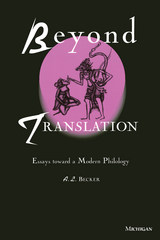 Beyond Translation: Essays toward a Modern Philology
A. L. Becker
University of Michigan Press, 2000 "This is not only a new philology but a new American linguistic philology. . . . Becker's harvest over a lifetime will be widely welcomed and respected." -Paul Friedrich, University of Chicago
". . . a book of extraordinary quality and importance." -James Boyd White, University of Michigan
How does Ralph Waldo Emerson sound in Kawi?
In this collection of essays A. L. Becker develops a new approach to translation he calls modern philology, an approach that insists, beyond translation, on the sorting out of ambiguities and contexts of meaning. Becker describes how texts in Burmese, Javanese, and Malay differ profoundly from English in all the ways they have meaning: in the games they play, the worlds they constitute, the memories they evoke, and the silences they maintain. In each of these dimensions there are excesses and inadequacies of meaning that make a difference across languages.
Drawn from over three decades of studying, teaching, translating and writing about Southeast Asian languages and literatures, the essays collected here for the first time are particular accounts of Becker's experiences in attempting to translate into or out of Burmese, Javanese, and Malay a variety of texts. They describe such things as the building of a Javanese shadowplay, how a Sanskrit story about the language of animals has been used in Indonesia, and some of the profound semantic silences a translator faces in taking an anecdote by Gregory Bateson from English into Malay.
In linguistics, the essays emphasize important kinds of nonuniversality in all aspects of language and look toward a new theory of language grounded in American pragmatism. In anthropology, the essays demonstrate that much of culture can be described in terms of text-building strategies. And for the comparativist, whether in literature, history, rhetoric, music, or psychology, the essays provide a new array of tools of comparison across distant languages and cultures.
A. L. Becker is Professor Emeritus of Linguistics and Anthropology, University of Michigan.
 Beyond Universal Reason
Emmanuel Katongole
University of Notre Dame Press, 2000 Stanley Hauerwas begins Peaceable Kingdom with the claim that "to begin by asking what is the relation between theology and ethics is to have already made a mistake." This socially constituted and historically embodied account of the moral life is often met with criticisms of sectarianism, relativism, and tribalism. Emmanuel Katongole offers a defense of Hauerwas's position by showing how the problem of ethics and religion is created and sustained by the ahistorical conception of the moral life in general, and moral rationality in particular, assumed within the dominant Kantian moral tradition.
Beyond Universal Reason presents the reader with the Hauerwas who has challenged the main foundations of modern ethical and political theory. Katongole develops a comprehensive, theoretical framework for a better appreciation of Hauerwas's work, and demonstrates that Hauerwas's claim about the relation between religion and ethics makes sense only within the wider framework of his attempt to set aside Kantian moral tradition.
This volume is a testimony to the scholarship of Stanley Hauerwas and an invaluable resource for understanding his work, as well as a rewarding addition to the study of moral reason.
Emmanuel Katongole is Lecturer in the Ethics and African Studies Department at Katigondo National Seminary and Assistant Professor at Uganda Martyrs University in Uganda.
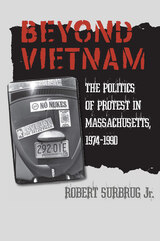 Beyond Vietnam: The Politics of Protest in Massachusetts, 1974-1990
Robert Surbrug
University of Massachusetts Press, 2009 Narratives of the 1960s typically describe an ascending arc of political activism that peaked in 1968, then began a precipitous descent as the revolutionary dreams of the New Left failed to come to fruition. The May 1970 killings at Kent State often stand as an epitaph to a decade of protest, after which the principal story becomes the resurgence of the right.
In Beyond Vietnam: The Politics of Protest in Massachusetts, 1974–1990, Robert Surbrug challenges this prevailing paradigm by examining three protest movements that were direct descendants of Vietnam-era activism: the movement against nuclear energy; the nuclear weapons freeze movement; and the Central American solidarity movement. Drawing lessons from the successes and failures of the preceding era, these movements had a significant impact on the liberal wing of the Democratic Party, which itself had been undergoing major transformations in the wake of the 1960s.
By focusing on one state—Massachusetts—Surbrug is able to illuminate the interaction between the activist left and mainstream liberalism, showing how each influenced the other and how together they helped shape the politics of the 1970s and 1980s. During these years, Massachusetts emerged as a center of opposition to nuclear power, the continuing Cold War arms race, and Ronald Reagan's interventionist policies in Central America. The state's role in national policy was greatly enhanced by prominent political figures such as Senator Edward Kennedy, Speaker of the House Thomas "Tip" O'Neill, presidential candidate Governor Michael Dukakis, Vietnam veteran Senator John Kerry, and moderate Republican Silvio Conte.
What Beyond Vietnam shows is that the rise of the right in the aftermath of the 1960s was by no means a unilateral ascendancy. Instead it involved a bifurcation of American politics in which an increasingly strong conservative movement was vigorously contested by an activist left and a reinvigorated mainstream liberalism.
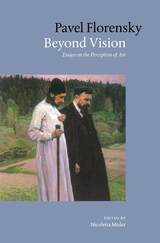 Beyond Vision: Essays on the Perception of Art
Pavel Florensky
Reaktion Books, 2004 Beyond Vision is the first English-language collection of essays on art by Pavel Florensky (1882–1937), Russian philosopher, priest, linguist, scientist, mathematician – and art historian. In addition to seven essays by Florensky, the book includes a biographical introduction and an examination of Florensky’s contribution as an art historian by Nicoletta Misler. Beyond Vision reveals Florensky’s fundamental attitudes to the vital questions of construction, composition, chronology, function and destination in the fields of painting, sculpture and design. His reputation as a theologian and philosopher is already established in the English-speaking world, but this first collection in English of his art essays (translated by Wendy Salmond) will be a revelation to those in the field.
Pavel Florensky was a true polymath: trained in mathematics and philosophy at Moscow University, he rejected a scholarship in advanced mathematics in order to study theology at the Moscow Theological Academy. He was also an expert linguist, scientist and art historian. A victim of the Soviet government’s animosity towards religion, he was condemned to a Siberian labor camp in 1933 where he continued his work under increasingly difficult circumstances. He was executed in 1937.
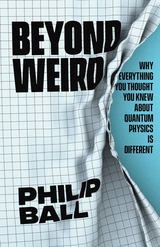 Beyond Weird: Why Everything You Thought You Knew about Quantum Physics Is Different
Philip Ball
University of Chicago Press, 2018 “Anyone who is not shocked by quantum theory has not understood it.”
Since Niels Bohr said this many years ago, quantum mechanics has only been getting more shocking. We now realize that it’s not really telling us that “weird” things happen out of sight, on the tiniest level, in the atomic world: rather, everything is quantum. But if quantum mechanics is correct, what seems obvious and right in our everyday world is built on foundations that don’t seem obvious or right at all—or even possible.
An exhilarating tour of the contemporary quantum landscape, Beyond Weird is a book about what quantum physics really means—and what it doesn’t. Science writer Philip Ball offers an up-to-date, accessible account of the quest to come to grips with the most fundamental theory of physical reality, and to explain how its counterintuitive principles underpin the world we experience. Over the past decade it has become clear that quantum physics is less a theory about particles and waves, uncertainty and fuzziness, than a theory about information and knowledge—about what can be known, and how we can know it. Discoveries and experiments over the past few decades have called into question the meanings and limits of space and time, cause and effect, and, ultimately, of knowledge itself. The quantum world Ball shows us isn’t a different world. It is our world, and if anything deserves to be called “weird,” it’s us.
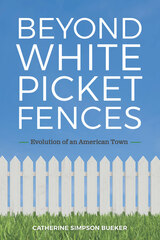 Beyond White Picket Fences: Evolution of an American Town
Catherine Simpson Bueker
Russell Sage Foundation, 2025 Wellesley, Massachusetts has long been considered the archetypal New England WASP community. However, as new groups moved in over the 20th and 21st centuries, Wellesley has undergone slow but consistent change, transforming into a more demographically diverse and multilayered town. In Beyond White Picket Fences, sociologist Catherine Simpson Bueker explores how Wellesley has been shaped—and continues to be shaped—by its diversity.
Drawing on interviews, archival data, and participant observations, Bueker examines how Italian, Jewish, and Chinese newcomers influenced and were influenced by the established Wellesley community. She examines the ways in which immigrant and ethnic groups assimilate, retain their cultural backgrounds, and respond to discrimination, sometimes simultaneously, and, in doing so, alter the mainstream. Some new residents responded to Wellesley by assimilating to it. They developed relationships with long-term resident neighbors, volunteered in their children’s schools, and ran for elected positions. In adapting themselves to their new community, however, they also influenced it by virtue of their distinct cultural backgrounds.
Other new residents worked to preserve their cultures by establishing ethnic-specific organizations, lobbying to have new holidays incorporated into the calendar, and hewing to their own ethnic culinary traditions. Their efforts also influenced the established community. When newcomers attempted to retain their culture by requesting ethnic-specific food items be stocked at the local grocery store, opening ethic restaurants, or renting space for a new organization, for example, they impacted the established community. New individuals and groups also responded to experiences of hostility and discrimination. Italian residents fought against attempts at school redistricting targeting them in the 1930s, Jewish residents pushed back against housing discrimination in the 1950s and 1960s, and Chinese residents responded to anti-Asian incidents in the wake of the COVID-19 pandemic in 2020. These groups had to engage with the larger community to rectify these injustices. Some of the changes in Wellesley have come about with little recognition or response, others have been met with resistance and anger. Whether the changes are subtle or obvious and whether new groups are embraced or resisted, the whole town is altered in an ongoing process as new groups continue to move to and settle in Wellesley.
Beyond White Picket Fences is a timely and compelling examination of the ways newcomers become part of and shape American communities.
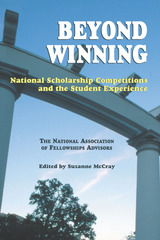 Beyond Winning: National Scholarship Competitions and the Student Experience
Suzanne McCray
University of Arkansas Press, 2005 Each year thousands of students apply for competitive national and international scholarships such as the Rhodes, Marshall, Gates Cambridge, and Fulbright. The competition for these awards is intense, and students look to scholarship advisors for support. Many universities have created an office or designated part of an office to assist these students, which has provided greater access for students who may not have applied previously or successfully. It has also increased the competition. The twelve essays in this collection from the 2003 National Association of Fellowships Advisors Conference held at the University of Denver. Essays by the heads of the Rhodes, Marshall, Gates, and Truman Scholarship foundations provide a sense of the philosophy and direction of their programs. The essays provide information on new initiatives, insights into the history and significance of the programs, and insider tips for application and interview preparation. Other essays focus on the advising and application process from successful advisors at various universities, how the U.K. higher educational system differs from that in the United States, and the key issue of ethics in the application process. All the essays demonstrate that the scholarship application experience itself is a valuable one that is more about learning and service than it is about winning.
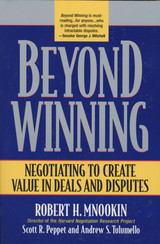 Beyond Winning: Negotiating to Create Value in Deals and Disputes
Robert H. Mnookin, Scott R. Peppet, and Andrew S. Tulumello
Harvard University Press, 2004 Conflict is inevitable, in both deals and disputes. Yet when clients call in the lawyers to haggle over who gets how much of the pie, traditional hard-bargaining tactics can lead to ruin. Too often, deals blow up, cases don’t settle, relationships fall apart, justice is delayed. Beyond Winning charts a way out of our current crisis of confidence in the legal system. It offers a fresh look at negotiation, aimed at helping lawyers turn disputes into deals, and deals into better deals, through practical, tough-minded problem-solving techniques.
In this step-by-step guide to conflict resolution, the authors describe the many obstacles that can derail a legal negotiation, both behind the bargaining table with one’s own client and across the table with the other side. They offer clear, candid advice about ways lawyers can search for beneficial trades, enlarge the scope of interests, improve communication, minimize transaction costs, and leave both sides better off than before. But lawyers cannot do the job alone. People who hire lawyers must help change the game from conflict to collaboration. The entrepreneur structuring a joint venture, the plaintiff embroiled in a civil suit, the CEO negotiating an employment contract, the real estate developer concerned with environmental hazards, the parent considering a custody battle—clients who understand the pressures and incentives a lawyer faces can work more effectively within the legal system to promote their own best interests. Attorneys exhausted by the trench warfare of cases that drag on for years will find here a positive, proven approach to revitalizing their profession.
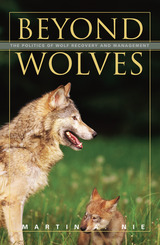 Beyond Wolves: The Politics Of Wolf Recovery And Management
Martin A. Nie
University of Minnesota Press, 2003 Looks at the next stages of the controversy over wolf recovery Since 1995, when the U.S. Fish and Wildlife Service released Canadian gray wolves into Yellowstone National Park as part of its wolf recovery program, reintroduction has been widely challenged in public forums and sensationalized in the media. This conflict has pitted western ranchers and property rights activists against environmental groups, highlighting starkly contrasting political perspectives. In this informed account, Martin A. Nie examines not only the future of wolf recovery but also the issues that will define debates around the politics of wildlife management, animal rights issues, and other flash points. The result is a revelatory look at the way the democratic process works when the subject is an environmental hot-button issue. Examining the wolf recovery program from a policy-making perspective, Nie looks at programs in Alaska, the Lake Superior region, the Northern Rockies, the Southwest, and New England and upstate New York. He analyzes the social, political, and cultural backdrop in the areas in which wolves have been reintroduced and explores such contentious issues as the role of science in public policy; the struggle between wilderness protection, resource management, and private property; and the use of stakeholders in environmental conflicts.For Nie, the debate over wolf recovery is above all a value-based political conflict that should take place in a more inclusive, participatory, and representative democratic arena. Wolves, Nie writes, are an important indicator species both biologically and politically, and in Beyond Wolves, he tells an important story of wolves and people, place and politics, that resonates far beyond the fate of America’s most misunderstood inhabitants.
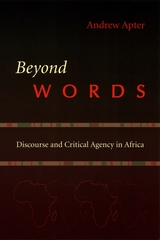 Beyond Words: Discourse and Critical Agency in Africa
Andrew Apter
University of Chicago Press, 2007 Even within anthropology, a discipline that strives to overcome misrepresentations of peoples and cultures, colonialist depictions of the so-called Dark Continent run deep. The grand narratives, tribal tropes, distorted images, and “natural” histories that forged the foundations of discourse about Africa remain firmly entrenched. In Beyond Words, Andrew Apter explores how anthropology can come to terms with the “colonial library” and begin to develop an ethnographic practice that transcends the politics of Africa’s imperial past.
The way out of the colonial library, Apter argues, is by listening to critical discourses in Africa that reframe the social and political contexts in which they are embedded. Apter develops a model of critical agency, focusing on a variety of language genres in Africa situated in rituals that transform sociopolitical relations by self-consciously deploying the power of language itself. To break the cycle of Western illusions in discursive constructions of Africa, he shows, we must listen to African voices in ways that are culturally and locally informed. In doing so, Apter brings forth what promises to be a powerful and influential theory in contemporary anthropology.
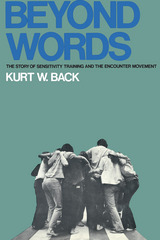 Beyond Words: Story of Sensitivity Training and the Encounter Movement
Kurt W. Back
Russell Sage Foundation, 1972 Sensitivity training, T-Groups, and encounter groups have become a way of life. Beyond Words traces the history of this movement, the background of its successes, its varieties, and its failures. Dr. Back's approach is neither one of wide-eyed admiration nor hostility. Instead, he has written a book that provides the first long, hard look at sensitivity training as a social phenomenon. From its fortuitous beginnings the movement is followed through its developments at Bethel, its growth across the country, its new centers in California, its spread to Europe. The novelty of this movement, an almost religious exercise based on the scientific ethos, is related to the peculiar conditions of the last quarter century. The movement has acquired its own mythos. Dr. Back examines the interplay of the conflicting aims of self-expression and change, and shows how these contradictory aims have affected the ramifications of the movement in theory, in management, in recreation, and in education. Results emerging from studies on effects of sensitivity training indicate a recurrent pattern of great immediate emphasis followed by little permanent beneficial effect. Finally, Beyond Words assesses the overall impact of the movement, its relation to science, its possible changes, and its portent as a symptom of the state of society. Dr. Back examines the interplay of the conflicting aims of self-expression and change, and shows how these contradictory aims have affected the ramifications of the movement in theory, in management, in recreation, and in education.
BG's ABCs: Tackling Football and Life
Written by Brandon Graham and Lesley Van Arsdall; Illustrated by Mr. Tom
Temple University Press, 2025 A is for attitude. B is for bravery. C is for confidence. That’s how Philadelphia Eagle Brandon Graham learned his ABCs. And now, with BG’s ABCs, you can too! In this charming alphabet book, Graham and Lesley Van Arsdall teach motivational words and leadership lessons to encourage dreams and educate young readers, helping the whole family set goals for hard work, imagination, and joy.
BG’s ABCs emphasizes a never give up mindset while also teaching lessons of kindness and respect. Using BG’s ABCs as a guide, young readers are sure to achieve victory while also developing a zest for life!
The Bhagavad Gītā
Franklin Edgerton
Harvard University Press, 1972 To most good Vishnuites, and to most Hindus, the Bhagavad Gītā is what the New Testament is to good Christians. It is their chief devotional book, and has been for centuries the principal source of religious inspiration for many millions of Indians.
In this two-volume edition, Volume I contains on facing pages a transliteration of original Sanskrit and the Franklin Edgerton’s close translation. Volume II is Mr. Edgerton’s interpretation in which he makes clear the historical setting of the poem and analyzes its influence on later literature and its place in Indian philosophy.
Sir Edwin Arnold’s beautiful translation, “The Song Celestial,” is also included in the second volume.
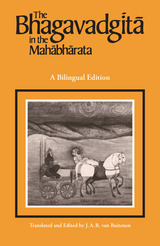 The Bhagavadgita in the Mahabharata
Edited by J. A. B. van Buitenen
University of Chicago Press, 1981 No other Sanskrit work approaches the Bhagavadgita in the influence it has exerted in the West. Philosophers such as Emerson and the other New England Transcendentalists were deeply affected by its insights, a dozen or more scholars, including Annie Besant and Mahatma Gandhi, have attempted its translation, and thousands of individuals struggling with the problems divided loyalties have found comfort and wisdom in its pages.
The Bhagavadgita ("Song of the Lord") tells of the young and virtuous Prince Arjuna who is driven to lead his forces into battle against an opposing army composed of close relatives and others whom he loves. The Lord Krsna, appearing in the poem as Arjuna's friend and charioteer, persuades him that he must do battle, and we see Arjuna changing from revulsion at the thought of killing members of his family to resignation and awareness of duty, to manly acceptance of his role as warrior and defender of his kingdom.
The Bhagavadgita is a self-contained episode in the Mahabharata, a vast collection of epics, legends, romances, theology, and metaphysical doctrine that reflects the history and culture of the whole of Hindu civilization. The present edition forms a part of J. A. B. van Buitenen's widely acclaimed translation of this great work. Here English and Sanskrit are printed on facing pages, enabling those with some knowledge of Sanskrit to appreciate van Buitenen's accurate rendering of the intimate, familial tone and directness of the original poem.
 The Bhaikṣukī Manuscript of the Candrālaṃkāra: Study, Script Tables, and Facsimile Edition
Dragomir Dimitrov
Harvard University Press This volume discusses the Bhaikṣukī manuscript of the Candrālaṃkāra (“Ornament of the Moon”), a commentary of the twelfth century based on the Cāndravyākaraṇa, Candragomin’s seminal Buddhist grammar of Sanskrit. The discovery of the Bhaikṣukī script and of all available written sources are described. The detailed study of this codex unicus of the Candrālaṃkāra is accompanied by a facsimile edition and extensive tables of the script, a long-felt desideratum in the field of palaeography. The Buddhist author of the commentary has been identified for the first time, and the nature of his treatise and its position in the Cāndra school of grammar have been expounded. The history of the manuscript and newly discovered traces of the Bhaikṣukī script in Tibet are discussed. This publication will serve as a prolegomenon necessary for the preparation of a critical edition of the Candrālaṃkāra, which until now was believed to have been lost irretrievably.
The Bhaikṣukī Manuscript of the Candrālaṃkāra will appeal to specialists with interests in a variety of fields such as Indian palaeography, grammar, Buddhism, history, and Indo-Tibetan studies.
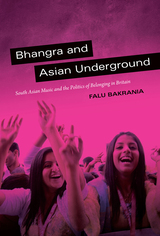 Bhangra and Asian Underground: South Asian Music and the Politics of Belonging in Britain
Falu Bakrania
Duke University Press, 2013 Asian Underground music—a fusion of South Asian genres with western breakbeats created for the dance club scene by DJs and musicians of Indian, Pakistani, and Bangladeshi descent—went mainstream in the U.K. in the late 1990s. Its success was unprecedented: British bhangra, a blend of Punjabi folk music with hip-hop musical elements, was enormously popular among South Asian communities but had yet to become mainstream. For many, the widespread attention to Asian Underground music signaled the emergence of a supposedly new, tolerant, and multicultural Britain that could finally accept South Asians. Interweaving ethnography and theory, Falu Bakrania examines the social life of British Asian musical culture to reveal a more complex and contradictory story of South Asian belonging in Britain. Analyzing the production of bhangra and Asian Underground music by male artists and its consumption by female club-goers, Bakrania shows that gender, sexuality, and class intersected in ways that profoundly shaped how young people interpreted “British” and “Asian” identity and negotiated, sometimes violently, contests about ethnic authenticity, sexual morality, individual expression, and political empowerment.
 Bhaviveka and His Buddhist Opponents: Chapters 4 and 5 of the Verses on the Heart of the Middle Way (Madhyamakahrdayakarikah) with the Commentary Entitled The Flame of Reason (Tarkajvala)
Malcolm David Eckel
Harvard University Press Bhāviveka (ca. 500–560 CE) lived at a time of unusual creativity and ferment in the history of Indian Buddhist philosophy. The Mahayana movement was emerging as a vigorous and self-conscious intellectual force, while the earlier traditions of the eighteen “schools” (nikaya) resisted the authority of the Mahayana and continued to elaborate the fundamental concepts of Buddhist thought.
Bhāviveka’s “Verses on the Heart of the Middle Way” (Madhyamakahrdayakārikā) with their commentary, known as “The Flame of Reason” (Tarkajvālā), give a unique and authoritative account of the intellectual differences that stirred the Buddhist community in this creative period.
Bhāviveka and His Buddhist Opponents gives a clear and accessible translation of Chapters 4 and 5 of this text: the chapters on the Śrāvakas, or eighteen schools, and the Yogācāra, Bhāviveka’s most important Mahayana opponents. The translation is introduced by an essay that situates Bhāviveka in the intellectual context of sixth-century India, and it is accompanied by copious notes, commenting on Bhāviveka’s sources and explaining his controversial method. The book also contains a critical edition of the Sanskrit text of Bhāviveka’s verses and the Tibetan translation of the verses and commentary.
 Bhāviveka on Sāmkhya and Vedānta: The Sāmkhya and Vedānta Chapters of the Madhyamakahrdayakārikā and Tarkajvālā
Olle Qvarnström
Harvard University Press For anyone interested in an epoch of almost unrivaled intellectual activity and debate in India, the sixth-century Madhyamakahrdayakārikā along with its auto-commentary, the Tarkajvālā, is an indispensable resource. This partly doxographical treatise, composed by the Madhyamaka philosopher Bhāviveka, is the earliest and most substantial work to present and critically examine Śrāvaka, Yogācāra, Sāmkhya, Vaiśesika, Vedānta, and Mīmāmsā in great detail. Bhāviveka’s text is of unique value in its attempt to identify a Madhyamaka approach to other schools of philosophy as well as in furnishing us with valuable information regarding early Indic systematic philosophy, including what appear to be extracts from original sources that are otherwise unavailable. Most probably it served as a Madhyamaka debate manual for those engaged in discussion with representatives of opposing philosophical schools. Bhāviveka’s treatment of Sāmkhya and Vedānta is of particular importance because of the scarcity of sources pertaining to the early formation and development of these systems of philosophy. The present book includes a critical edition and English translation of the Sāmkhya and Vedānta chapters of the Madhyamakahrdayakārikā and Tarkajvālā along with a historical introduction.
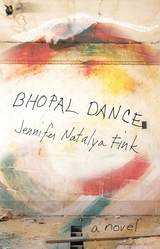 Bhopal Dance: A Novel
Jennifer Natalya Fink, Foreword by Mary Caponegro
University of Alabama Press, 2018 Winner of FC2's Catherine Doctorow Innovative Fiction Prize
An imaginative, erotic rethinking of Bhopal’s disaster—and perhaps our own
On the night of December 2, in the midst of the Reaganomic era, an explosion at an American-owned factory in Bhopal, India, released untold amounts of toxic gas on uncounted numbers of people, creating a human and environmental disaster of insurmountable proportions. Known as the Bhopal disaster, it once dominated international headlines, and is now barely remembered.
Yet Bhopal remains emblematic of all the many quickly forgotten disasters that followed, and of the permanent state of globalized disaster in which we now dwell. What does it mean when corporations instead of states control not only the means to create environmental disasters, but also the tools to bury them? How does one revolt against these unelected entities? How do our most private desires get shaped by this stateless horror? Jennifer Natalya Fink’s Bhopal Dance is an epic and epochal tale of such a horror and its buried consequences.
At the center of the novel is Cordelia, an owlish woman with a ménage of lovers, who leads a revolutionary Canadian political movement catalyzed by the Bhopal disaster, only to end up imprisoned with just a toilet to talk to. Who she hallucinates is her father. Who is her father. Who is the State. Who may be her mother. Or her twin/lover. Cordelia is a remarkable bird in her own right, and ‘owlishness’ is a feathery conceit deployed in both the book’s form and content, a way of exploring queer possibilities for altering the terms of one’s imprisonment. For setting corporatized corporeality alight. Ablaze. Pets and punk rock, dentists and dyslexia, Shakespeare and salsa: they all dance together here.
 Bianca
Eugenia Leigh
Four Way Books, 2023 “I thought I forgave you,” Eugenia Leigh tells the specter of her father in Bianca. “Then I took root and became / someone’s mother.” Leigh’s gripping second collection introduces us to a woman managing marriage, motherhood, and mental illness as her childhood abuse resurfaces in the light of “this honeyed life.” Leigh strives to reconcile the disconnect between her past and her present as she confronts the inherited violence mired in the body’s history. As she “choose[s] to be tender to [her] child—a choice / [her] mangled brain makes each day,” memories arise, asking the mother in her to tend, also, to the girl she once was. Thus, we meet her manic alter ego, whose history becomes the gospel of Bianca: “We all called her Bianca. My fever, my havoc, my tilt.” These poems recover and reconsider Leigh’s girlhood and young adulthood with the added context of PTSD and Bipolar Disorder. They document the labyrinth of a woman breaking free from the cycle of abuse, moving from anger to grief, from self-doubt to self-acceptance. Bianca is ultimately the testimony of one woman’s daily recommitment to this life. To living. “I expected to die much younger than I am now,” Leigh writes, in awe of the strangeness of now, of “every quiet and colossal joy.”
Bianca e Falliero, o sia Il Consiglio dei Tre: Melodramma in Two Acts by Felice Romani
Gioachino Rossini
University of Chicago Press, 1996 In 1819, a watershed year in the Milanese debates between "classicism" and "romanticism," Rossini prepared Bianca e Falliero, o sia Il consiglio dei Tre (Bianca and Falliero, or The Council of Three) for La Scala, where his opere serie had never fared well. Working with a confirmed "classicist" librettist, he created a traditionally structured bel canto tour-de-force that ran for thirty-nine performances—still a record for his serious operas at La Scala.
Heavily butchered in later productions, Bianca e Falliero soon disappeared from the stage, but its finest pieces remained in concert repertory for half a century. The critical edition—the first publication of the full score—restores the original Milan version. An appendix offers Rossini's vocal variants for the two lead roles.
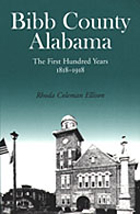 Bibb County, Alabama: The First Hundred Years
Rhoda C. Ellison
University of Alabama Press, 1984 This model county history chronicles one hundred years in the life of a representative Deep South county The history of Bibb County between 1818 and 1918 is in many ways representative of the experience of central Alabama during that period. Bibb County shares physical characteristics with the areas both to its north and to its south. In its northern section is a mineral district and in its southern valleys fertile farming country; therefore, its citizens have sometimes allied themselves with the hill counties and sometimes with their Black Belt neighbors. Both sections of the county developed in step with the surrounding counties. Bibb's foundries were established during the same time and by the same iron masters as Shelby County, and its coal mines in the same decade as Jefferson County. Its farmers planted the same crops and faced the same problems as those in Perry, Autauga, and Tuscaloosa counties. Like Tuscaloosa, Bibb endeavored to promote river transportation for both its industrial and its agricultural products. This carefully documented history is based on a variety of original sources, from personal letters to government records. It is generously illustrated with early maps and with old pictures of Bibb landmarks, many of which have now vanished.
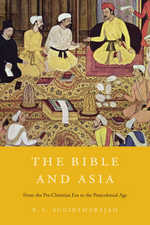 The Bible and Asia: From the Pre-Christian Era to the Postcolonial Age
R. S. Sugirtharajah
Harvard University Press, 2013 Though the Bible is a product of West Asia, its influence on Europe and the Americas has received far more attention than its complex career in the East. R. S. Sugirtharajah corrects this imbalance with an expansive new study of Asia's subversive and idiosyncratic relationship with the Bible. This is the story of missionaries, imperialists, exegetes, reformers, and nationalists who molded Biblical texts according to their own needs in order to influence religion, politics, and daily life from India to China.
When the Bible reached east and south Asia in the third century CE, its Christian scriptures already bore traces of Asian commodities and Indian moral stories. In China, the Bible merged with the teachings of Buddha and Lao Tzu to produce the Jesus Sutras. As he recounts the history of how Christianity was influenced by other Asian religions, Sugirtharajah deftly highlights the controversial issue of Buddhist and Vedic influence on Biblical religion.
Once used to justify European rule in Asia, the Bible has also served to promote the spiritual salvation of women, outcasts, and untouchables. The Bible has left a literary mark on Asia in two ways: through its influence on Asian writers and through the reinvigoration of modern Asian vernaculars when proselytizing missionaries introduced Western print culture to the East.
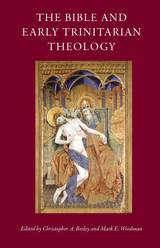 The Bible and Early Trinitarian Theology
Christopher A. Beeley
Catholic University of America Press, 2018 The past thirty years have seen an unprecedented level of interest in early Christian biblical interpretation, from major scholarly initiatives to more popular resources aimed at pastors and general readers. The fields of Biblical Studies and Patristics/Early Christian Studies each arrived at the study of early Christian biblical interpretation largely from their own standpoints, and they tend to operate in relative isolation from one another. This books aims to bring the two fields into closer conversation, in order to suggest new avenues into the study of the deeply biblical dimension of patristic theology as well as the contribution that patristic exegesis can make to contemporary views of how best to interpret the Bible.
Based on a multi-year consultation in the Society of Biblical Literature, The Bible and Early Trinitarian Theology features leading scholars from both fields, who bring new insights to the relationship between patristic exegesis and current strategies of biblical interpretation, specifically with reference to the doctrine of the Trinity. Following an account of how each field came to study patristic exegesis, the book offers new studies of Trinitarian theology in Old Testament, Johannine, and Pauline biblical texts and the patristic interpretation of them, combining the insights of modern historical criticism with classical historical theology. It promises to make a valuable contribution to both fields, suggesting several new avenue into the study of early biblical literature and the development of Trinitarian theology.
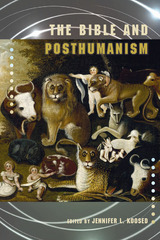 The Bible and Posthumanism
Jennifer L. Koosed
SBL Press, 2014
What does it mean, and what should it mean to be human?
In this collection of essays, scholars place the philosophies and theories of animal studies and posthumanism into conversation with biblical studies. Authors cross and disrupt boundaries and categories through close readings of stories where the human body is invaded, possessed, or driven mad. Articles explore the ethics of the human use of animals and the biblical contributions to the question. Other essays use the image of lions—animals that appear not only in the wild, but also in the Bible, ancient Near Eastern texts, and philosophy—to illustrate the potential these theories present for students of the Bible. Contributors George Aichele, Denise Kimber Buell, Benjamin H. Dunning, Heidi Epstein, Rhiannon Graybill, Jennifer L. Koosed, Eric Daryl Meyer, Stephen D. Moore, Hugh Pyper, Robert Paul Seesengood, Yvonne Sherwood, Ken Stone, and Hannah M. Strømmen present an open invitation for further work in the field of posthumanism.
Features:
- Coverage of texts that explore the boundaries between animal, human, and divinity
- Discussion of the term posthumanism and how it applies to biblical studies
- Essays engage Derrida, Foucault, Wolfe, Lacan, Žižek, Singer, Haraway, and others
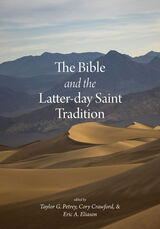 The Bible and the Latter-day Saint Tradition
Edited by Taylor G. Petrey, Cory Crawford, and Eric A. Eliason
University of Utah Press, 2022 Like other Christian denominations, the Church of Jesus Christ of Latter-day Saints (Mormons) has been engaged in the battle for the Bible since challenges to biblical authority began to exert significant influence in America toward the end of the nineteenth century. Other believing communities have responded with various reevaluations of the biblical text. Latter-day Saints have experimented with similar approaches, often taking liberal positions on biblical authority and conservative positions on history and authorship. However, Latter-day Saints accept additional scripture and embrace a theology notably distinct from traditional Christianity. Hence, they relate to the Bible differently from other Christians, creating gaps with mainstream biblical studies. This volume bridges that gap.
From comparing the Book of Mormon to the Bible or the Dead Sea Scrolls, to Mormon feminists’ views on the Gospels, this volume takes a comprehensive and inclusive approach to understanding Bible scholarship’s role in Mormon history, exploring these differences for both scholars and students. A diverse group of contributors presents an accessible resource to mediate between Latter-day Saint traditions and the broader context of biblical history, literature, and scholarship. Each essay provides a synopsis of relevant major scholarly views and delivers new insights into varied crosscurrents of biblical studies.
Bible and Transformation: The Promise of Intercultural Bible Reading
Hans de Wit
SBL Press, 2015 Engage the delightful and inspiring, sometimes rough and rocky road to inclusive and transformative Bible reading
This book offers the results of research within a new area of discipline—empirical hermeneutics in intercultural perspective. The book includes interpretations from the homeless in Amsterdam, to Indonesia, from African Xhosa readers to Norway, to Madagascar, American youths, Germany, Czech Republic, Colombia, and Haitian refugees in the Dominican Republic.
Features:
- Interpretations from ordinary readers in more than twenty-five countries
- Background introduction with history of the text
- Discussion of intertextual connections with Greco-Roman authors
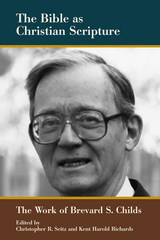 The Bible as Christian Scripture: The Work of Brevard S. Childs
Christopher R. Seitz
SBL Press, 2013 This memorial volume both displays and evaluates the canonical approach of Brevard S. Childs, whose attention to history through time animated his interest in the Bible’s use in the church through the ages up to and including the present. Just as Childs wrote on a wide range of topics canonical and theological—both Testaments, Isaiah and Exodus, the Pauline letters, the history of biblical interpretation, biblical theology, and historical, theological, and methodological questions—the contributors to this volume, seasoned colleagues as well as younger scholars who studied with Childs, offer an international collection of historical, theological, and New Testament essays as well as contributions focused on the Old Testament. The contributors are Stephen B. Chapman, Brevard S. Childs, Don Collett, Daniel R. Driver, Mark W. Elliott, Leonard G. Finn, Mark Gignilliat, Bernd Janowski, Jörg Jeremias, Leander E. Keck, Neil B. MacDonald, David L. Petersen, Murray A. Rae, C. Kavin Rowe, and Christopher R. Seitz.
 The Bible As It Was
James L. Kugel
Harvard University Press, 1999 This is a guide to the Hebrew Bible unlike any other. Leading us chapter by chapter through its most important stories--from the Creation and the Tree of Knowledge through the Exodus from Egypt and the journey to the Promised Land--James Kugel shows how a group of anonymous, ancient interpreters radically transformed the Bible and made it into the book that has come down to us today.
Was the snake in the Garden of Eden the devil, or the Garden itself "paradise"? Did Abraham discover monotheism, and was his son Isaac a willing martyr? Not until the ancient interpreters set to work. Poring over every little detail in the Bible's stories, prophecies, and laws, they let their own theological and imaginative inclinations radically transform the Bible's very nature. Their sometimes surprising interpretations soon became the generally accepted meaning. These interpretations, and not the mere words of the text, became the Bible in the time of Jesus and Paul or the rabbis of the Talmud.
Drawing on such sources as the Dead Sea Scrolls, ancient Jewish apocrypha, Hellenistic writings, long-lost retellings of Bible stories, and prayers and sermons of the early church and synagogue, Kugel reconstructs the theory and methods of interpretation at the time when the Bible was becoming the bedrock of Judaism and Christianity. Here, for the first time, we can witness all the major transformations of the text and recreate the development of the Bible "As It Was" at the start of the Common era--the Bible as we know it.
Bible Believers: Fundamentalists in the Modern World
Nancy Tatom Ammerman
Rutgers University Press, 1987 Bible believer (also Bible-believer,Bible-believing Christian,Bible-believing Church) is a self-description by conservative Christians to differentiate their teachings from others who see non- or extrabiblical tradition as higher or equal in authority. In normal usage, "Bible believer" means an individual or organisation that believes the Christian Bible is true in some significant way. However, this combination of words is given a unique meaning in fundamentalist Protestant circles, where it is equated with the belief that the Christian Bible "contains no theological contradictions, historical discrepancies, or other such 'errors'", otherwise known as biblical inerrancy.
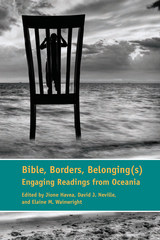 Bible, Borders, Belonging(s): Engaging Readings from Oceania
Jione Havea
SBL Press, 2014 Engaging voices crossing textual limits, race, and ethnic lines
In this collection of essays, scholars from Oceania open a new dialog regarding the vast, complex, and slippery nature of the Bible and the fluid meanings of borders and belongings. From belonging in a place, a group, or movement to belongings as material and cultural possessions, from borders of a text, discipline, or thought to borders of nations, communities, or bodies, the authors follow the currents of Oceania to the shores of Asia and beyond. Scholars contributing essays include Jeffrey W. Aernie, Merilyn Clark, Jione Havea, Gregory C. Jenks, Jeanette Mathews, Judith E. McKinlay, Monica Jyotsna Melanchthon, David J. Neville, John Painter, Kathleen P. Rushton, Ruth Sheridan, Nasili Vaka‘uta, and Elaine M. Wainwright. Michele A. Connolly, David M. Gunn, and Mark G. Brett provide responses to the essays.
Features:
- Discussion of the impacts of natural disasters and political and ecological upheavals on biblical interpretation and theological reflection
- Fourteen essays on texts in the Hebrew Bible and New Testament
- Three responses to the essays provide a range of views on the topics
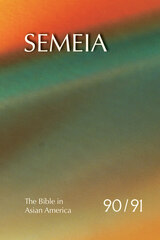 The Bible in Asian America
Tat-siong Benny Liew
SBL Press, 2002 In this issue of the journal Semeia, readers will find essays less concerned with what the Bible says about Asian American lives than by how Asian Americans read biblical texts. Pulling together Asian American historians, rhetoricians, sociologists, biblical scholars, and theologians, the collection questions assumed understandings and challenges accepted practices of established disciplines in ways that are both transgressive and transformative. Essays in the first section deal with the Bible’s role in constructing Asian American identity. The second section delves into how the Bible is read and interpreted in Asian American literature and churches. The third section includes a response. Contributors include Antony W. Alumkal, Rachel A. R. Bundang, Patrick S. Cheng, Peter Yuichi Clark, Eleazar S. Fernandez, Mary F. Foskett, Jane Naomi Iwamura, Russell M. Jeung, Eunjoo Mary Kim, Jung Ha Kim, Uriah (Yong-Hwan) Kim, Tat-siong Benny Liew, Leng Leroy Lim, Fumitaka Matsuoka, Russell G. Moy, Henry W. Rietz, Roy I. Sano, and Timothy Tseng.
The Bible in Greek: Translation, Transmission, and Theology of the Septuagint
Siegfried Kreuzer
SBL Press, 2015 Essential reading for scholars and students
This volume presents English and German papers that give an overview on important stages, developments, and problems of the Septuagint and the research related to it. Four sections deal with the cultural and theological background and beginnings of the Septuagint, the Old Greek and recensions of the text, the Septuagint and New Testament quotations, and a discussion of Papyrus 967 and Codex Vaticanus.
Features:
- A complete list of Kreuzer’s publications on the text and textual history of the Hebrew Bible and the Septuagint
- Criteria for analysis of the Antiochene/Lucianic Text and the Kaige-Recension
- A close examination of the origins and development of the Septuagint in the context of Alexandrian and early Jewish culture and learning
The Bible in the American Experience
Claudia Setzer
SBL Press, 2020 An interdisciplinary investigation of the Bible's place in American experience
Much has changed since the Society of Biblical Literature's Bible in American Culture series was published in the 1980s, but the influence of the Bible has not waned. In the United States, the stories, themes, and characters of the Bible continue to shape art, literature, music, politics, education, and social movements to varying degrees. In this volume, contributors highlight new approaches that move beyond simple citation of texts and explore how biblical themes infuse US culture and how this process in turn transforms biblical traditions.
Features
- An examination of changes in the production, transmission, and consumption of the Bible
- An exploration of how Bible producers disseminate US experiences to a global audience
- An assessment of the factors that produce widespread myths about and nostalgia for a more biblically grounded nation
The Bible in the Public Square: Its Enduring Influence in American Life
Mark A. Chancey
SBL Press, 2014 Explore perceptions and interpretations of scripture in American politics, identity, popular culture, and public education
Essays from the perspectives of American history, the history of ideas, film studies, visual studies, cultural studies, education, and church-state studies provide essential research for those interested in the intersection of the Bible and American culture. The contributors are Yaakov Ariel, Jacques Berlinerblau, Mark A. Chancey, Rubén Dupertuis, John Fea, Shalom Goldman, Charles C. Haynes, Carol Meyers, Eric M. Meyers, David Morgan, Adele Reinhartz, and David W. Stowe.
Features:
- Ten essays and an introduction present research from professors of biblical studies, Judaism, English, and history
- Articles relevant to scholars, students, and the general public
- Analysis of the tensions in American society regarding the Bible and its role in public life.
The Bible in the Sixteenth Century
David C. Steinmetz
Duke University Press, 1990 A distinguished group of authors here illuminate a broad spectrum of themes in the history of biblical interpretation. Originally published in 1990, these essays take as their common ground the thesis that the intellectual and religious life of the sixteenth century cannot be understood without attention to the preoccupation of sixteenth-century humanists and theologians with the interpretation of the Bible. Topics explored include Jewish exegesis and problems of Old Testament interpretation and the relationship between the Bible and social, political, and institutional history. Contributors. Irena Backus, Guy Bedouelle, Kalman P. Bland, Kenneth G. Hagen, Scott H. Hagen, Scott H. Hendrix, R. Gerald Hobbs, Jean-Claude Margolin, H. C. Erik Midelfort, Richard A. Muller, John B. Payne, David C. Steinmetz
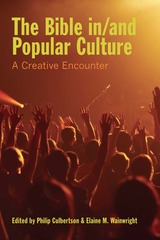 Bible in/and Popular Culture
Philip Culbertson
SBL Press, 2010 In popular culture, the Bible is generally associated with films: The Passion of the Christ, The Ten Commandments, Jesus of Montreal, and many others. Less attention has been given to the relationship between the Bible and other popular media such as hip-hop, reggae, rock, and country and western music; popular and graphic novels; animated television series; and apocalyptic fantasy. This collection of essays explores a range of media and the way the Bible features in them, applying various hermeneutical approaches, engaging with critical theory, and providing conceptual resources and examples of how the Bible reads popular culture—and how popular culture reads the Bible. This useful resource will be of interest for both biblical and cultural studies. The contributors are Elaine M. Wainwright, Michael Gilmour, Mark McEntire, Dan W. Clanton Jr., Philip Culbertson, Jim Perkinson, Noel Leo Erskine, Tex Sample, Roland Boer, Terry Ray Clark, Steve Taylor, Tina Pippin, Laura Copier, Jaap Kooijman, Caroline Vander Stichele, and Erin Runions.
The Bible of Dirty Jokes
Eileen Pollack
Four Way Books, 2018 When Ketzel Weinrach’s beloved brother Potsie goes missing in Las Vegas, she not only must try to find him, she must confront her family’s shady history and their ties to the legendary Jewish mob, Murder, Inc., as well as her troubling relationship to her cousin Perry (who runs a strip club on the outskirts of Vegas), her long and apparently not-so-loving marriage to her recently departed husband Morty Tittelman (a self-styled professor of dirty jokes and erotic folklore), and her own failed career as a stand-up comic.
The Bible on the Question of Homosexuality
Innocent Himbaza
Catholic University of America Press, 2012 The Bible on the Question of Homosexuality addresses the hotly debated topic of whether the Bible condemns homosexuality by a close reading of the biblical texts without taboo or prejudice, without personal or church interpretation
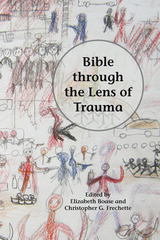 Bible through the Lens of Trauma
Elizabeth Boase
SBL Press, 2016 Explore emerging trends in trauma studies and biblical interpretation
In recent years there has been a surge of interest in trauma, trauma theory, and its application to the biblical text. This collection of essays explores the usefulness of using trauma theory as a lens through which to read the biblical texts. Each of the essays explores the concept of how trauma might be defined and applied in biblical studies. Using a range of different but intersection theories of trauma, the essays reflect on the value of trauma studies for offering new insights into the biblical text. Including contributions from biblical scholars, as well as systematic and pastoral theologians, this book provides a timely critical reflection on this emerging discussion.
Features:
Implications for how reading the biblical text through the lens of trauma can be fruitful for contemporary appropriation of the biblical text in pastoral and theological pursuits
Articles that integrate hermeneutics of trauma with classical historical-critical methods
Essays that address the relationship between individual and collective trauma
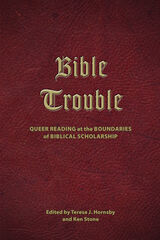 Bible Trouble: Queer Reading at the Boundaries of Biblical Scholarship
Teresa J. Hornsby
SBL Press, 2011 The essays in Bible Trouble all engage queer theories for purposes of biblical interpretation, a rare effort to date within biblical scholarship. The title phrase “Bible Trouble” plays on Judith Butler's Gender Trouble, gesturing toward a primary text for contemporary queer theory. The essays consider, among others, the Lazarus story, the Ethiopian eunuch, “gender trouble” in Judges 4 and 5, the Song of Songs, and an unorthodox coupling of the books of Samuel and the film Paris Is Burning. This volume “troubles” not only the boundaries between biblical scholarship and queer theory but also the boundaries between different frameworks currently used in the analysis of biblical literature, including sexuality, gender, race, class, history, and literature. The contributors are Ellen T. Armour, Michael Joseph Brown, Sean D. Burke, Heidi Epstein, Deryn Guest, Jione Havea, Teresa J. Hornsby, Lynn R. Huber, S. Tamar Kamionkowski, Joseph A. Marchal, Jeremy Punt, Erin Runions, Ken Stone, Gillian Townsley, Jay Twomey, and Manuel Villalobos.
The Bible Without Theology: The Theological Tradition and Alternatives to It
Robert A. Oden, Jr.
University of Illinois Press, 1987 In this thought-provoking volume, Robert A. Oden Jr. advocates stripping away the theological and historiographic biases that underlie modern biblical scholarship in order to arrive at a nontheological historical reading of the Bible. Oden calls into question a scholarly tradition that accepts biblical writers' views of themselves and their neighbors at face value and reproduces a view of Israelite religion as divinely guided and inherently superior.
Using cross-cultural and interdisciplinary methodology, Oden investigates three biblical issues--the clothing of Adam and Eve, Jacob's name change to Israel, and ritual prostitution and Deuteronomy--in light of extra-biblical evidence. He also challenges scholars' assumptions of Scripture as monotheistic and proposes treating biblical narrative as myth rather than as historical fact.
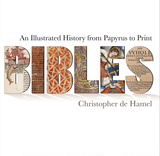 Bibles: An Illustrated History from Papyrus to Print
Christopher de Hamel
Bodleian Library Publishing, 2011 A unique visual history of the world’s best-selling book of all time, Bibles provides a rich snapshot of the biblical bookmaking tradition through images from fifty rare and important Bibles. As the captivating and colorful images collected here reveal, in many ways the history of the Bible mirrors the history of the book and publishing.
Presented chronologically, the Bibles provide a fascinating look into the book making techniques and characteristics of their time. From the fragile papyrus fragments of the ancient world to medieval illuminated manuscripts and glorious modern printed editions, each image is accompanied by a caption which explains its particular significance. In addition, each chapter includes a short introduction that contextualizes each book within its time period. Featuring many unusual examples—some of which have never been illustrated in print before—Bibles includes many of the great biblical texts of the Eastern and Western traditions, including the Magdalen Papyrus, the Laudian Acts, the Anglo-Saxon Exodus, St Margaret’s Gospel-book, the Douce Apocalypse, the Bible Moralisée (MS. Bodley 270b), the Kennicott Bible, the Guttenberg Bible, and the King James Bible.
Drawing exclusively from one of the finest collections of Bibles in the world, which is held at the Bodleian Library at Oxford University, this book tells the remarkable story of the development of the Bible across media, language, and provenance.
 Biblical and Pastoral Poetry
Alcimus Avitus
Harvard University Press, 2022 Alcimus Ecdicius Avitus, bishop of Vienne and a vigorous defender of Christian orthodoxy, was born into the senatorial aristocracy in southern Gaul in the mid-fifth century and lived until 518. The verse in Biblical and Pastoral Poetry was written in the late fifth or early sixth century. Avitus’s most famous work, the Spiritual History, narrates the biblical stories of creation, the Fall and expulsion from paradise, the Flood, and the Israelites’ escape from Egypt. He revitalizes Christian epic poetry, highlighting original sin and redemption and telling the history of Christian salvation with dramatic dialogue and rich description. In Consolatory Praise of Chastity—a verse treatise addressed to his sister, a consecrated virgin—illuminates the demands of the ascetic life from the perspective of a close family member. Avitus seeks to bolster his sister’s resolve with biblical examples of mental fortitude, constructing a robust model for female heroism. This volume presents new English translations of Avitus’s two extant poetic writings alongside the Latin texts.
Biblical and Theological Foundation of the Family
Joseph C. Atkinson
Catholic University of America Press, 2014 This ground-breaking work establishes a solid biblical and theological foundation on which a theology of the family can be constructed. It thus fills a critical lack in the current literature on the family. The wide range of sources, including Jewish, Catholic, Orthodox, and Protestant, give this work a genuine ecumenical dimension. Biblical and Theological Foundations of the Family will become indispensable for anyone wanting to engage in serious study of the structure and meaning of the family and its place in the salvific will of God.
Biblical Animality after Jacques Derrida
Hannah M. Strømmen
SBL Press, 2018 A new theoretical and exegetical angle on the Bible and animal studies According to Genesis, humans are made in God's image but animals are not. Hannah M. Strømmen challenges this view by critiquing the boundary between humans and animals in the Bible through the work of philosopher Jacques Derrida. Building on Derrida's The Animal That Therefore I Am, Strømmen brings to light significant moments where the lines between the divine, human, and animal are ambiguous in a rich range of biblical texts, from Noah as the first carnivorous man in Genesis 9 to Revelation's beasts. Features - A contribution to research on Jacques Derrida and deconstruction
- An examination of Derrida's work on the human/animal boundary
- Critical engagement with the way the Bible is frequently held up as a point of blame for anthropocentrism
 Biblical Families in Music: Conflict and Heterodoxy in Oratorios, 1670–1770
Robert L. Kendrick
University of Chicago Press, 2025 Examines how stories of biblical families were reconfigured and projected in the genre of the oratorio, a form of sacred opera, in the seventeenth and eighteenth centuries.
Based to a great extent on the Old Testament, the largely Catholic musical-dramatic genre was popular in Italy, Austria, and southern Germany in the seventeenth and eighteenth centuries. Biblical Families in Music reveals how difficult stories of fratricide, child sacrifice, death, and forbidden love performed a didactic function in oratorios, teaching early modern audiences about piety and the rules of proper family life.
In the century after 1670, the heavily adapted tales of Abraham and Isaac, Cain and Abel, and the Egyptian slave Hagar and her son Ishmael were set to music by figures such as Alessandro Scarlatti and Antonio Sacchini and performed during Lent in churches and other sacred spaces for an audience of court nobility, clergy, and the urban patriciate. By examining the resonance of Catholic oratorios within predominantly upper-class social realities, the book broadens our cultural understanding of the early modern European family and underscores the centrality of family and familial relation to social position, devotional taste, and identity.
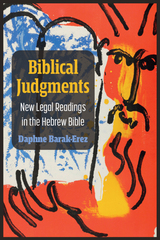 Biblical Judgments: New Legal Readings in the Hebrew Bible
Daphne Barak-Erez
University of Michigan Press, 2024 Biblical Judgments invites readers to consider today's timeless dilemmas of law and government, social justice, and human rights, through the perspective of a text that has helped shape western society: the Hebrew Bible. By focusing on biblical narratives and literature rather than on traditional interpretations of biblical law, Daphne Barak-Erez is able to look beyond historic norms to concentrate on what Old Testament stories can reveal about the "big" issues. She discusses questions such as: What can modern-day governmental regulation learn from the exercise of food rationing in Egypt as a response to Pharaoh's dream of a future famine? How does social distancing in the time of Covid-19 compare with people sent outside the camp as a precautionary measure against bible-era plagues? What can promoters of social justice glean from the demands made to Moses that daughters should also inherit from their father when biblical law did not recognize inheritance rights of women?
Rather than offering a historical study, Barak-Erez draws upon famous court decisions from around the world to root her analysis in modern law. Organized by subject matter, Biblical Judgments analyzes how the themes of law and government, judging and judges, human rights and social justice, criminal law, private law, and family and inheritance law are presented through a number of different stories. In recounting the compelling narratives of the Hebrew Bible, Biblical Judgments exposes their inherent legal tensions and what we can learn about legal dilemmas today.
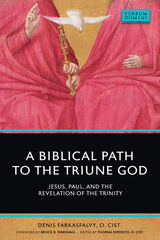 A Biblical Path to the Triune God: Jesus, Paul and the Revelation of the Trinity
Denis Farkasfalvy
Catholic University of America Press, 2021 This short volume, finished just before Denis Farkasfalvy’s death in 2020, serves effectively as his last theological testament. Throughout his scholarly career, Farkasfalvy aimed to reconcile and unite theological disciplines that had increasingly become isolated from each other, most notably the biblical, patristic, and systematic. In A Biblical Path to the Triune God, the Cistercian abbot identifies the earliest biblical witnesses to the Church’s teaching about God, formulated at the Council of Nicaea, as Father, Son, and Holy Spirit.
Jesus’ famous praise of the Father, found almost word-for-word in Matthew 11:25-27 and Luke 10:21-22, is Farkasfalvy’s point of departure for his bold assertion that in the earliest sources, we find abundant evidence that “it was not Jesus who revealed his own divine sonship; rather, the Father revealed it to those whom Jesus had chosen and were open to respond in faith.” Farkasfalvy demonstrates that Jesus reveals his relationship to the Father in terms of intimate and experiential knowledge, transforming the procreative metaphor of filiation from the physical (as in the Psalms and 2 Samuel 7) to the epistemological realm of knowledge, what he calls “love within cognitive dimensions.” Just decades after Jesus’ ministry, numerous independent apostolic witnesses, from the Synoptic Gospels and John to Paul (especially Romans 1:1-4 and Galatians 1:15-16), indicate a robust and widespread understanding of the Father’s self-disclosure in Jesus the Son.
Farkasfalvy concludes his brief but intense reflection by outlining how a single organic process of revelation binds together the Father and the Son, and then extends that loving communion to believers in the Spirit, a communion made possible only by the incarnate Son’s crucifixion and subsequent glorification. This book accomplishes the admirable feat of showing that far from being the invention of later centuries, the Trinitarian doctrine of the Church is firmly rooted in the very first reflections on Jesus’ ministry and mystery by the biblical authors.
 Biblical Peoples and Ethnicity: An Archaeological Study of Egyptians, Canaanite
Ann E. Killebrew
SBL Press, 2005 Ancient Israel did not emerge within a vacuum but rather came to exist alongside various peoples, including Canaanites, Egyptians, and Philistines. Indeed, Israel’s very proximity to these groups has made it difficult—until now—to distinguish the archaeological traces of early Israel and other contemporary groups. Through an analysis of the results from recent excavations in light of relevant historical and later biblical texts, this book proposes that it is possible to identify these peoples and trace culturally or ethnically defined boundaries in the archaeological record. Features of late second-millennium B.C.E. culture are critically examined in their historical and biblical contexts in order to define the complex social boundaries of the early Iron Age and reconstruct the diverse material world of these four peoples. Of particular value to scholars, archaeologists, and historians, this volume will also be a standard reference and resource for students and other readers interested in the emergence of early Israel.
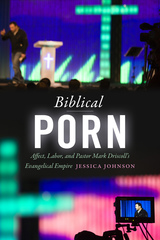 Biblical Porn: Affect, Labor, and Pastor Mark Driscoll's Evangelical Empire
Jessica Johnson
Duke University Press, 2018 Between 1996 and 2014, Mark Driscoll's Mars Hill Church multiplied from its base in Seattle into fifteen facilities spread across five states with 13,000 attendees. When it closed, the church was beset by scandal, with former attendees testifying to spiritual abuse, emotional manipulation, and financial exploitation. In Biblical Porn Jessica Johnson examines how Mars Hill's congregants became entangled in processes of religious conviction. Johnson shows how they were affectively recruited into sexualized and militarized dynamics of power through the mobilization of what she calls "biblical porn"—the affective labor of communicating, promoting, and embodying Driscoll's teaching on biblical masculinity, femininity, and sexuality, which simultaneously worked as a marketing strategy, social imaginary, and biopolitical instrument. Johnson theorizes religious conviction as a social process through which Mars Hill's congregants circulated and amplified feelings of hope, joy, shame, and paranoia as affective value that the church capitalized on to grow at all costs.
Biblical Religion and the Search for Ultimate Reality
Paul Tillich
University of Chicago Press, 1955 Dr. Tillich shows here that in spite of the contrast between philosophical and biblical language, it is neither necessary nor possible to separate them from each other. On the contrary, all the symbols used in biblical religion drive inescapably toward the philosophical quest for being. An important statement of a great theologian's position, this book presents an eloquent plea for the essential function of philosophy in religious thought.
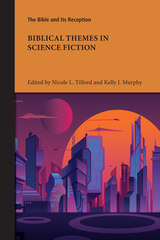 Biblical Themes in Science Fiction
Nicole L. Tilford
SBL Press, 2023 What does a first-generation female robot have in common with the biblical figure of Eve? Or an intergenerational spaceship with Noah’s ark? If a computer compiles a deceased person’s photographs and digital activities into a virtual avatar, is that a form of resurrection? Such seemingly unlikely scenarios are common in science fiction—and science fiction writers often draw on people, places, and events from biblical texts, assuming that audiences will understand the parallels. Biblical Themes in Science Fiction is a journey from creation to apocalypse where contributors Frank Bosman, Rhonda Burnette-Bletsch, Krista N. Dalton, Tom de Bruin, James F. McGrath, Kelly J. Murphy, Steven J. Schweitzer, Jason A. Staples, Nicole L. Tilford, Christine Wenderoth, and Jackie Wyse-Rhodes trace biblical themes as they appear in contemporary science fiction, including Doctor Who, Lilith’s Brood, The Handmaid’s Tale, Battlestar Galactica, and Fallout 3. Essays are supplemented by images and key science fiction sources for diving deeper into how the Bible influenced writers and creators. An afterword considers the imaginative impulses common to both science fiction and biblical texts.
 A Biblical Translation in the Making: The Evolution and Impact of Saadia Gaon’s Tafsīr
Richard C. Steiner
Harvard University Press, 2010 In his youth, R. Saadia Gaon (882–942 CE) dreamed of publishing a new translation of the Torah for Arabic-speaking Jews to replace the overly literal ones in vogue at the time. It would be a proper translation, conforming to the tenets of both traditional Judaism and contemporary philosophy—not to mention the canons of Arabic grammar and style. Saadia’s interest in this project was not purely academic. Rabbinic Judaism was under attack from Karaite and Muslim polemicists eager to win new converts, and Saadia felt that a new Arabic version of the Torah was needed to counter the attack. His dream was realized with the issuing of the Tafsīr, the most important Jewish Bible translation of the Middle Ages.
Richard C. Steiner traces the history of the Tafsīr—its ancient and medieval roots, its modest beginnings, its subsequent evolution, and its profound impact on the history of biblical exegesis. Among the many sources he uses to elucidate this history are two previously neglected manuscripts: a Christian Arabic translation of the Pentateuch from St. Catherine’s Monastery in the Sinai Desert, and a Judeo-Arabic annotated translation of Genesis from the Cairo Genizah. Steiner argues that the latter is a page from a copy of the first edition of the Tafsīr prepared while Saadia was a student in Tiberias, and the former is a copy of Hunayn b. Ishāq’s “lost” Arabic version of the Pentateuch (ninth century CE), containing a philosophical rendering of Genesis 1:1 adopted later by Saadia in the Tafsīr.
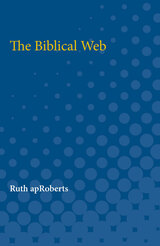 The Biblical Web
Ruth apRoberts
University of Michigan Press, 1994 The Bible is the most familiar text of Western culture, and the most ancient. The Bible constitutes the largest element of our collective inheritance—the vast web of meanings and metaphors in which we envision ourselves, our lives, and our culture. But is a purely literary study of the Bible possible? Ruth apRoberts argues that the answer is a decided yes in The Biblical Web. These lively and varied essays suggest that, even aside from its religious significance, the Bible has had a profound literary impact on Western culture.The author employs literary-critical methods to examine language, metaphor, translations, and levels of literary interpretation in the Bible. These methods allow us to see the language of the Bible as the prologue to religious interpretations. The essays cover a wide array of topics in Biblical study but are united in their focus on the particular distinction and power of the English translation and its resonances in Western literature.Topics such as the translation of Hebrew poetry gain immeasurably by apRoberts's new and important insights. She investigates the historical content of the best-known anthology of biblical quotations, the often-sung but rarely analyzed text of Handel's Messiah. The essay on the Book of Job as a Gödelian paradigm presents an original reading of that inexhaustible text, and another essay provides a study of England's great Bible critic, Robert Lowth. The final essay traces some little-known aspects and echoes of the Bible in English, from Matthew Arnold's edition of Isaiah to the poetry of A. E. Housman and G. M. Hopkins.The Biblical Web presents the Bible not as religious doctrine but as a text that is wonderfully varied, inconsistent, and frequently distinguished by great literary art. The Bible, she reminds us, is amassed out of translations, and translations and modifications of translations; it is a text that has metamorphosed countless times, and yet endures as a basis of western culture.
 Bibliografía Crítica de Ediciones del Quijote: Impresas desde 1605 hasta 1917
Juan Suñé Benages and Juan Suñé Fonbuena; edited by J. D. M. Ford and Carl Tilden Keller
Harvard University Press In 1917 there appeared in Barcelona a critical bibliography of the editions of Don Quixote compiled by Juan Sune Benages and his son, Juan Sune Fonbuena. We have now published a supplement to that bibliography, prepared jointly by the same father and son, who carried it down to the year 1917, after which date the father alone continued it, bringing it down to the year 1937. A long Preface by J.D.M. Ford gives an interesting account of the authors, and, by implication, some insight into the difficulties of literary labors in contemporary Spain. An Introduction by Sune Benages discusses the general problems of bibliography encountered in the 1369 editions of the Don Quixote published between 1605 and 1937. The bibliography itself presents annotated entries regarding editions in forty-two languages, including macaronic Latin, Italian, Bohemian, Finnish, Croatian, Esperanto, Yiddish, Gaelic, Arabic, Esthonian, Malay, and Sanskrit.
A Bibliographical Guide to Japanese Research on the Chinese Economy, 1958–1970
W. P. J. Hall
Harvard University Press, 1972 W. P. J. Hall originally compiled this bibliography as an aid for his own research on the Chinese economy and Sino–Japanese trading relations. Now offered as an invaluable guide for the scholars of China’s economy, the volume is divided into eleven sections. An extensive subject index and a complete listing of the contents of each book enables the non–Japanese-speaking reader to easily locate and have translated a specific number of pages on a particular topic.
Bibliographical Guide to the Study of the Literature of the USA, 5th ed., revised and enlarged
Clarence Gohdes and Sanford Marovitz
Duke University Press, 1984 The Bibliographical Guide remains the most useful handbook of its kind now available to scholars for research in the field. The fifth revised edition includes updating and considerable but highly selective expansion as well as a section on Women's Studies. This edition includes over 100 new editions as well as more than 750 additional studies and reference works for a total of approximately 1,900 reference items, all annotated with the exception of a few with explanatory subtitles.
A Bibliography of Chinese Language Materials on the People's Communes
Ma Wei-yi
University of Michigan Press, 1982 A research tool for scholars studying modern China, particularly those focusing on the post-1949 communal system and economy. The work includes full bibliographic references to some 2,800 essay, articles, pamphlets, and other materials in Chinese taken from more than 130 publications, primarily from mainland. The entries are arranged are arranged topically with annotations. Includes a geographic index to the communes referred to in the listed items.
 A Bibliography of East European Travel Writing on Europe
Wendy Bracewell
Central European University Press, 2008 The bibliography volume of the three-volume East Looks West: East European Travel Writing in Europe collates travel writing published in book form by east Europeans travelling in Europe from ca. 1550 to 2000. It is intended as a fundamental research tool, collecting together travel writings within each national/linguistic tradition, and enabling comparative analysis of such material. It fills an important gap in the existing reference literature, both in western and east European languages, and will be of use to those working in the growing fields of comparative travel writing, regional and national identities, and postcolonialism. These texts exist in surprisingly large numbers, and include writings of high literary quality as well as of historical interest, but they have been relatively little studied as a genre. Much of this material is rare and difficult to find, even in national libraries. As a result, there are few bibliographical surveys of the literature of east European travel and self-representation, and none that are region-wide or comparative in scope. This is the third volume of a three-part set of East Looks West.
Vol. 1. Orientations. An Anthology of East European Travel Writing on Europe.
Vol. 2. Undern Eastern Eyes. A Comparative Introduction to East European Travel Writing on Europe.
 A Bibliography of John Greenleaf Whittier
Thomas Franklin Currier
Harvard University Press Unquestionably Mr. Currier’s exhaustive bibliography must be consulted by everyone who wishes authoritative and documented data on the writings of John Greenleaf Whittier or who wishes to know why, when, and where his works were printed. It is far more than a mere bibliography; for in addition to listing, with all the detail and thoroughness required by the book collector and student of American literature and history, the actual printed publications of the poet and Abolitionist, it comprises a complete survey of Whittier’s literary life and labors. Mr. Currier has unearthed the innumerable broadside and leaflet printings of Whittier’s poems, has sifted the mass of anonymous works, and has arranged a chronological series of references to communications sent by Whittier to various newspapers with which he was not editorially connected. One section relates at length Whittier’s activities as editor of political newspapers; another is a list of books and articles that have been written about Whittier. All these items, however, are but random samplings from what may be considered a perfect example of bibliographical writing.
Bibliography of Michigan Archaeology
Alexis A. Praus
University of Michigan Press, 1964 For this volume, Alexis A. Praus compiled a bibliography of publications on Michigan archaeology. The sources listed are from public libraries and university libraries in Michigan, as well as the Chicago Public Library, the Boston Public Library, the Harvard Peabody Museum, and other collections.
 A Bibliography of Studies and Translations of Modern Chinese Literature, 1918–1942
Donald Gibbs and Yun-chen Li
Harvard University Press, 1975 This is the first complete bibliography of the developing field of Republican-period Chinese literature. The bibliography lists all studies in Western European languages, including doctoral and masters’ theses, as well as all known translations into English of Chinese literary works of the period 1918–1942.
The era between imperial China and Communist China is one of uniqueness in Chinese history, and is a pivotal period in more ways than we can yet realize. The novels, plays, poetry, and essays of this era, apart from their intrinsic interest, furnish Westerners with an inside view of how it felt to be Chinese during this troubled time. By means of this bibliography it will now be possible for teachers systematically to develop literature-in-translation courses or supplementary reading lists to enable those who do not read Chinese to penetrate areas of Chinese life heretofore closed off.
Bibliography of the Harvard Chiapas Project: The First Twenty Years, 1957–1977
Evon Z. Vogt
Harvard University Press, 1978 This volume publishes the complete annotated bibliography of the publications that resulted from the first 20 years of ethnological and archaeological work by faculty and graduate students in the Mexican state of Chiapas, sponsored by Harvard’s Peabody Museum and Department of Anthropology.
 Bicentennial: A Revolutionary History of the 1970s
Marc Stein
University of Chicago Press As the United States marks its semiquincentennial in 2026, renowned historian Marc Stein looks back at the politics of another landmark celebration during a time of striking similarities and surprising differences: the US bicentennial in 1976.
In the aftermath of Vietnam and Watergate, the bicentennial sparked an extraordinary national conversation about the country’s past, present, and future. As patriots, planners, profiteers, and protesters argued about how to commemorate the national birthday, they collectively reimagined the promises and perils of democracy during a transformational decade.
From award-winning historian Marc Stein, Bicentennial: A Revolutionary History of the 1970s is an original, illuminating, and insightful study of that era. While focusing on festivities and fights in the nation’s birthplace, Philadelphia, the book also explores the many proposed and abandoned celebrations that percolated up around the country, situating the bicentennial in local and national contexts. It tells a broadly democratic story of both the “official” bicentennial and counter-bicentennial activism, offering revolutionary perspectives on national politics, social movements, and popular culture. From the queer courtship of US President Richard Nixon and Philadelphia Mayor Frank Rizzo to parades and protests with millions of participants, and from a deadly outbreak of Legionnaires’ disease in Philadelphia’s most prestigious hotel to the establishment of groundbreaking African American, ethnic, and Jewish museums, the bicentennial reveals a kaleidoscope of American peculiarities, problems, and possibilities.
The lasting influence of 1976 on one of the nation’s great urban centers and the United States as a whole is undeniable. As the nation—once again enmeshed in political and social upheaval—celebrates its two-hundred-fiftieth birthday in 2026, there is no better time to look back at its two-hundredth and marvel at what has changed, and what has not.
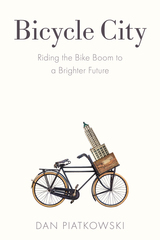 Bicycle City: Riding the Bike Boom to a Brighter Future
Dan Piatkowski
Island Press, 2024 It took an oil crisis in the 1970s for the Dutch to realize that they simply couldn´t afford to live without bicycles, and today the Dutch lead the world in urban cycling. Fifty years later, another crisis, the pandemic, has led to a boom in bicycling and a radical rethinking of the future of urban mobility, demonstrating the possibility of a car-free urban future. The pandemic “bikeboom” is one of the very few bright spots in an otherwise terrible time – and an opportunity we cannot waste. The climate crisis is all too real, the inequities in our cities too severe, to allow the US to backslide to the status quo of car-dependence.
In Bicycle City: Riding the Bike Boom to a Brighter Future cycling expert Daniel Piatkowski argues that the bicycle is the best tool that we have to improve our cities. The car-free urban future—where cities are vibrant, with access to everything we need close by—may be less bike-centric than we think. But bikes are a crucial first step to getting Americans out of cars. Bicycle City is about making cities better with bikes rather than for bikes.
Piatkowski offers a vision for the car-free urban future that so many Americans are trying to create, with no shortage of pragmatic lessons to get there. Electric bikes are demonstrating the ability of bikes to replace cars in more places and for more people. Cargo bikes, with electric assistance, are replacing SUVs for families and delivery trucks for freight. At the same time, mobility startups are providing new ownership models to make these new bikes easier to use and own, ushering in a new era of pedal-powered cities.
Bicycle City brings together the latest research with interviews, anecdotes, and case studies from around the world to show readers how to harness the post-pandemic bikeboom. Piatkowski illustrates how the future of bicycling will facilitate the necessary urban transitions to mitigate the impending climate crisis and support just and equitable transport systems.
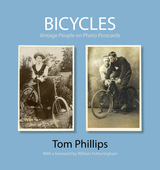 Bicycles: Vintage People on Photo Postcards
Tom Phillips
Bodleian Library Publishing, 2011 To celebrate the acquisition of the archive of distinguished artist Tom Phillips, the Bodleian Library asked the artist to assemble and design a series of books drawing on his themed collection of over 50,000 photographic postcards. These encompass the first half of the twentieth century, a period in which, thanks to the ever cheaper medium of photography, ordinary people could afford to purchase their own portraits. These portraits allowed individuals to create and embellish their own self images, presenting themselves as they wished to be seen within the trends and social mores of their time. Each book in the series contains two hundred images chosen from a visually rich vein of social history. Their back covers also feature thematically linked paintings, specially created for each title, from Phillips’s signature work, A Humument. Bicycles, as its title suggests, documents the great age of the safety bicycle, which was welcomed as a technology of emancipation for both women and men. Also included are portraits of competitive racers and newly pedaling toddlers.
These unique and visually stunning books offer a rich glimpse of forgotten times and will be greatly valued by art and history lovers alike. “These images are captivating visual vignettes. We may not know who the subjects are, but the postcards offer us a glimpse of their interests, their time, and their world. Tom Phillips's exceptional collection gives us a fascinating chance to retrieve something of these lives.”—Sandy Nairne, Director, National Portrait Gallery, London “Picture postcards from a century ago capture unique moments in time and place and are a wonderful social history record. Tom Phillips is adept at seeking out and choosing amazingly evocative postcard images.”—Brian Lund, editor, Picture Postcard Monthly
 Bicycling Through Dayton: Twenty-One Historical Tours
Kathleen Smythe
Ohio University Press, 2025 A guide to twenty-one historically themed bicycle tours in and around Dayton, Ohio Dayton boasts the largest contiguous bike trail network in the United States, and this guide for cycling enthusiasts and armchair travelers includes introductions to the city’s innovative cycling past and present, to beautiful country roads, and to vibrant urban landscapes. Bicycling Through Dayton is divided into three themes: “Sacred Ground,” “Changing the World,” and “Flying on a Bicycle.” In “Sacred Ground,” riders pass through many areas and structures, such as Fort Ancient, originally inhabited and cultivated by Native American people; the gravesite of Shawnee Chief Catecahassa, better known as Black Hoof; and the now vanished Randolph Settlement, where freed African American men and women in the 1840s were met with hostility upon arrival. Also included in this section are rides through majestic parks, colorful caves, and beautiful buildings, including Weaver Chapel at Wittenberg University. In “Changing the World,” tours focus on rides that highlight the richness of Ohio as a home of our nation’s educators, activists, engineers, innovators, and writers. “Flying on a Bicycle” pays homage to Ohio’s central role in the history of aviation and space exploration, featuring the birthplace of Orville and Wilbur Wright, the National Museum of the United States Air Force, and the home of Neil Armstrong. Readers can plan and export rides ahead of time using the QR code in the book to view turn-by-turn directions, detailed route maps, and photos of route sites. Bicycling Through Dayton helps cyclists and readers form a more intimate relationship with Ohio’s landscape by learning the history of Ohio and the people who came before us, all while enjoying a ride.
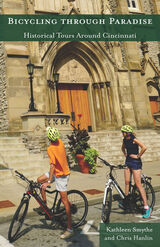 Bicycling Through Paradise: Historical Tours Around Cincinnati
Kathleen R. Smythe and Chris Hanlin
University of Cincinnati Press, 2025 Bicycling Through Paradise is a collection of twenty historically themed cycling tours broken into 10-mile segments centered around Cincinnati, Ohio. Written by two longtime cyclists—one a professor of history and one an architect—the book is an affectionate, intimate, and provocative reading of the local landscape and history from the perspectives of cycling and Cincinnati enthusiasts. Tours, navigated by Smythe and Hanlon, take cyclers past Native American sites, early settler homesteads, and locations made know through recent Ohio change-makers as navigated by the authors. With extensive details on routes and sites along the way, tours between 20 and 80 miles in length are designed for all levels of cyclists, and even the armchair explorer.
Riders and readers will visit towns called Edenton, Loveland, Felicity, and Utopia. Along the journey, they’ll encounter an abandoned Shaker village near the Whitewater Forest and a tiny dairy house called “Harmony Hill,” the oldest standing structure in Clermont County, Ohio. They’ll also take in the view from the top of a 2,000-year-old, 75-foot tall, conical Indian mound at Miamisburg. Riders can follow the Little Miami Scenic Trail and take a detour to a castle on the banks of the Little Miami River. Other sights include a full-scale replica of the tomb of Jesus in Northern Kentucky and the small pleasures of public parks, covered bridges, tree-lined streets, riverside travel, and one-room schoolhouses. And if all this isn’t exactly Paradise, well, it’s pretty close.
 Bicycling Through Paradise: Historical Tours Around Cincinnati, Updated and Revised
Kathleen Smythe and Chris Hanlin
Ohio University Press, 2025 A revised edition of the award-winning book of historically themed cycling tours in and around Cincinnati, Ohio Bicycling Through Paradise: Historical Rides Around Cincinnati includes nineteen historically themed cyclist tours for all abilities centered around Cincinnati, Ohio. Written by two longtime cyclists—one a professor of history and one an architect—this book dives into the details of local landscape and history encountered along the route. Rides combine familiar destinations like Lunken Airport, Eden Park, and Loveland Castle with lesser-known sites like Underground Railroad stations, ruined stone canal locks, and a nineteenth-century socialist commune, all located in and around the greater Cincinnati area. Stops along the way include public parks, covered bridges, and one-room schoolhouses. The book includes a QR code to link readers to a companion Community Page where cyclists will find downloadable turn-by-turn directions and wayfinding photos, plus a place for cyclists to share their feedback, making this book an interactive experience.
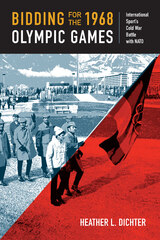 Bidding for the 1968 Olympic Games: International Sport's Cold War Battle with NATO
Heather L. Dichter
University of Massachusetts Press, 2021 Winner of the 2022 Lord Aberdare Literary Prize from the British Society of Sports History
During the Cold War, political tensions associated with the division of Germany came to influence the world of competitive sport. In the 1950s, West Germany and its NATO allies refused to recognize the communist East German state and barred its national teams from sporting competitions. The construction of the Berlin Wall in 1961 further exacerbated these pressures, with East German teams denied travel to several world championships. These tensions would only intensify in the run-up to the 1968 Olympics.
In Bidding for the 1968 Olympic Games, Heather L. Dichter considers how NATO and its member states used sport as a diplomatic arena during the height of the Cold War, and how international sport responded to political interference. Drawing on archival materials from NATO, foreign ministries, domestic and international sport functionaries, and newspapers, Dichter examines controversies surrounding the 1968 Summer and Winter Olympic Games, particularly the bidding process between countries to host the events. As she demonstrates, during the Cold War sport and politics became so intertwined that they had the power to fundamentally transform each other.
The Biden School and the Engaged University of Delaware, 1961-2021
Daniel Rich
University of Delaware Press, 2023 This book reviews the history of the Joseph R. Biden, Jr. School of Public Policy and Administration from 1961 to 2021. The focus is on the school’s accomplishments over its first sixty years, how they were achieved, and why they are significant. The analysis describes the challenges and opportunities that shaped the school’s development and its emergence as one of the nation’s leading public affairs schools. What began in 1961 as an experimental program supported by a single external grant emerged six decades later as one of the nation’s leading comprehensive schools of public affairs. That transformation unfolded during one of the most dynamic periods in the history of higher education when the public purpose of universities was expanded. The history of the Biden School is a story of institutional innovation, perseverance, adaptation, and resilience.
 Biennial Boom: Making Contemporary Art Global
Paloma Checa-Gismero
Duke University Press, 2024 In Biennial Boom, Paloma Checa-Gismero traces an archeology of contemporary art biennials to uncover the processes that prompted these exhibitions to become the global art world’s defining events at the end of the twentieth century. Returning to the early post-Cold War years, Checa-Gismero examines the early iterations of three well-known biennials at the borders of North Atlantic liberalism: the Bienal de La Habana, inSITE, and Manifesta. She draws on archival and oral history fieldwork in Cuba, Mexico, the US/Mexico borderlands, and the Netherlands, showing how these biennials reflected a post-Cold War optimism for a pacified world by which artistic and knowledge production would help mend social, political, and cultural divisions. Checa-Gismero argues that, in reflecting this optimism, biennials facilitated the conversion of subaltern aesthetic genealogies into forms that were legible to a nascent cosmopolitan global elite—all under the pretense of cultural exchange. By outlining how early biennials set the basis for what is now recognized as “global contemporary art,” Checa-Gismero intervenes in previous accounts of the contemporary art world in order to better understand how it became the exclusionary, rarified institution of today.
Bifacial Photovoltaics: Technology and systems
Joris Libal
The Institution of Engineering and Technology, 2025 Bifacial photovoltaic technology is transitioning from an emerging innovation to a mainstream solution within the solar industry. Bifacial modules are no longer considered a niche product, but are increasingly widely used in utility-scale, commercial and many other solar projects. The change is being driven by the ability of bifacial PV systems to significantly increase energy yield and reduce levelized cost of energy (LCOE). Double-glass bifacial modules, in particular, offer durability, long-term stability, and enhanced performance in diverse environmental conditions.
Bifacial Photovoltaics: Technology, applications and economics
Joris Libal
The Institution of Engineering and Technology, 2019 Bifacial photovoltaic (PV) modules are able to utilize light from both sides and can therefore significantly increase the electric yield of PV power plants, thus reducing the cost and improving profitability. Bifacial PV technology has a huge potential to reach a major market share, in particular when considering utility scale PV plants. Accordingly, bifacial PV is currently attracting increasing attention from involved engineers, scientists and investors.
 Bifurcated Politics: Evolution and Reform in the National Party Convention
Byron E. Shafer
Harvard University Press, 1988 Even today, when it is often viewed as an institution in decline, the national party convention retains a certain raw, emotional, populist fascination. Bifurcated Politics is a portrait of the postwar convention as a changing institution—a changing institution that still confirms the single most important decision in American politics.
With the 1988 elections clearly in mind, Byron E. Shafer examines the status of the national party convention, which is created and dispersed within a handful of days but nevertheless becomes a self-contained world for participants, reporters, and observers alike. He analyzes such dramatic developments as the disappearance of the contest over the presidential nomination and its replacement by struggles over the publicizing of various campaigns, the decline of party officials and the rise of the organized interests, and the large and growing disjunction between what is happening at the convention hall and what the public sees—between the convention on site and the convention on screen. He argues that, despite its declining status, the postwar convention has attracted—and mirrored—most of the major developments in postwar politics: the nationalization of that politics and the spread of procedural reform, a changing connection between the general public and political institutions, even the coming of a new and different sort of American politics.
Bifurcated Politics tells the story of most of the postwar conventions, along with the nominating campaigns that preceded them. But it also develops a picture of the changing American politics around those stories. It will become the definitive study of the national party convention.
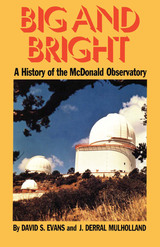 Big and Bright: A History of the McDonald Observatory
By David S. Evans and J. Derral Mulholland
University of Texas Press, 1986 By day, every year over 40,000 visitors pour in. Across the Rio Grande, a hundred miles away, Mexican mountaineers use the white domes as landmarks. By night, perched almost 7,000 feet above the sleeping, earthbound world, astronomers probe the secrets of the night sky. This is the University of Texas McDonald Observatory, one of the world's largest university-operated astronomical installations. Big and Bright: A History of the McDonald Observatory is the story of a remarkable collaboration between two major universities, one a prestigious private school, the other a growing southwestern state institution. The University of Chicago had astronomers, but its Yerkes Observatory was aging and underfunded; the University of Texas had money for an observatory but no working astronomer to staff it. Out of their mutual need, they formed a thirty-year compact for a joint venture. Unusual in its day, the Yerkes-McDonald connection presaged the future. In this arrangement, one can see some of the beginnings of today's consortium "big science." Now the McDonald Observatory's early history can be put in proper perspective. Blessed with a gifted and driving founding director, the world's (then) second-largest telescope, and an isolation that permitted it to be virtually the only major astronomical observatory that continued operations throughout World War II, the staff of McDonald Observatory helped lay the foundations of modern astrophysics during the 1940s. For over a decade after the war, a lonely mountaintop in West Texas was the mecca that drew nearly all the most important astronomers from all over the world. Based on personal reminiscences and archival material, as well as published historical sources, Big and Bright is one of the few histories of a major observatory, unique in its focus on the human side of the story.
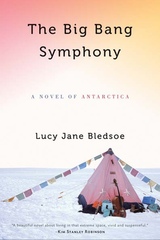 The Big Bang Symphony: A Novel of Antarctica
Lucy Jane Bledsoe
University of Wisconsin Press, 2010 Antarctica is a vortex that draws you back, season after season. The place is so raw and pure, all seal hide and crystalline iceberg. The fishbowl communities at McMurdo Station, South Pole Station, and in the remote field camps intensify relationships, jack all emotion up to a 10. The trick is to get what you need and then get out fast.
At least that’s how thirty-year-old Rosie Moore views it as she flies in for her third season on the Ice. She plans to avoid all entanglements, romantic and otherwise, and do her work as a galley cook. But when her flight crash-lands, so do all her plans.
Mikala Wilbo, a brilliant young composer whose heart—and music—have been frozen since the death of her partner, is also on that flight. She has come to the Ice as an artist-in-residence, to write music, but also to secretly check out the astrophysicist father she has never met.
Arriving a few weeks later, Alice Neilson, a graduate student in geology who thinks in charts and equations, is thrilled to leave her dependent mother and begin her career at last. But from the start she is aware that her post-doc advisor, with whom she will work in Antarctica, expects much more from their relationship.
As the three women become increasingly involved in each other’s lives, they find themselves deeply transformed by their time on the Ice. Each falls in love. Each faces challenges she never thought she would meet. And ultimately, each finds redemption in a depth and quality of friendship that only the harsh beauty of Antarctica can engender. Finalist, Lambda Literary Awards Finalist, Ferro-Grumley Award for LGBT Fiction, awarded by the Publishing Triangle Finalist, Northern California Independent Booksellers Association Honorable Mention, Foreword Magazine’s Gay/Lesbian Fiction Book of the Year Best Books for General Audiences, selected by the Public Library Association
 Big Belching Bog
Phyllis Root
University of Minnesota Press, 2010 Cold, wet, and acidic, bogs appear to be extremely hostile to life, yet numerous plants and animals have adapted in fascinating ways in order to survive there. In Big Belching Bog, Phyllis Root lets us in on the secrets of the mysterious bog, describing such special inhabitants as plants that eat insects, bog lemmings, and frogs that stay frozen through the winter and thaw out in the spring. But what's that coming up from the bottom of the bog?
The biggest bog secret of all, we learn, is the remarkable process of methane gas belching out of the bog. The gas is created by decaying peat moss and forms a bulge in the surface of the moss six inches or taller before breaking through. Does this "belch" make a sound? No one knows, says Root, because no one has ever heard it. In fact, bogs are known as some of the quietest places on earth. Maybe you will be the first to hear the big bog belch!
Illustrated by renowned woodcut artist Betsy Bowen, Big Belching Bog also contains a section of bog facts, including more information about the plants and animals mentioned in the book as well as tips for visiting a bog. Big Belching Bog will stir the imagination of young readers and teach them about the landscape and environment of these mysterious and, ahem, gassy places.
Big Bend: A Homesteader's Story
By J. O. Langford, with Fred Gipson.
University of Texas Press, 1952 To the wild and fabulous country where the Rio Grande makes its big bend, J. O. Langford came in 1909 with his wife and daughter in search of health and a home. High on a bluff overlooking the spot where Tornillo Creek pours its waters into the turbulent Rio Grande, the Langfords built their home, a rude structure of adobe blocks in a land reputed to be inhabited only by bandits and rattlesnakes. Big Bend is the story of the Langfords' life in the rugged and spectacularly beautiful country which they came to call their own. Langford's account is told with the help of Fred Gipson, author of Old Yeller and Hound Dog Man.
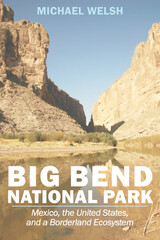 Big Bend National Park: Mexico, the United States, and a Borderland Ecosystem
Michael Welsh
University of Nevada Press, 2021 Known as a place of stark beauty, dramatic geographic dimension, and challenging desert terrain, Big Bend National Park is located in West Texas on the north bank of the Rio Grande, adjacent to the Mexican states of Coahuila and Chihuahua. Although a place of natural grandeur, the unique location of this 118-mile long, 1.5 million-acre corridor has led to many challenges between the United States and Mexico, two nations who share one ecosystem but inhabit different political worlds.
Big Bend National Park explores the cultural and diplomatic history of this transborder region that was designated a national park on the US side and the site of a long-hoped-for “international peace park” on the other. Michael Welsh demonstrates the challenges faced and lessons learned by both the US and Mexico as they struggled against political and environmental vicissitudes in their attempts to realize the creation of a shared frontier.
Geopolitical and environmental conflicts such as Cold War fears, immigration, the war on drugs, international water rights, and more stringent American border security measures after 9/11 all hindered relations between the two countries. But more recently, renewed cooperation and ongoing diplomatic relations have led to new developments. Mexican park personnel began assisting American officials with efforts to re-wild the American side of the river with animal species that had been eliminated, and the Obama administration relaxed some post-9/11 restrictions, allowing American visitors to cross over to the Mexican park and its nearby towns.
The ambition of developing a park for peace has yet to materialize, even as individuals and their governments continue to work toward an accord. Big Bend National Park provides a greater understanding of this complex borderland and hopes to help fulfill the aspiration of creating a shared ecosystem and the dream of a park for peace.
Big Bill of Chicago
Lloyd Wendt and Herman Kogan
Northwestern University Press, 2005 Winner of 2006 Illinois State Historical Society Book Award-Certificate of Excellence
To some he was a humanitarian and builder. Others scorned him as a fake and friend of gangsters with "the carcass of a rhinoceros and the brain of a baboon." This rollicking history traces the rise of William Hale "Big Bill" Thompson, Chicago's famous reform mayor, from his upper class roots to his years as a teenaged cowboy, from his fame as a star athlete to the years as a master politician in a world where the ward boss ruled and whiskey for the voters cost a quarter a shot. Big Bill of Chicago profiles the whole brawling arena of city politics from the turn of the century to the Prohibition Era. It is a primer in the way American politics worked-and works-and a map along the countless winding ways even the dirtiest deal can lead to something great.
 Big Bill Thompson, Chicago, and the Politics of Image
Douglas Bukowski
University of Illinois Press, 1998 There are politics, politicians, and scandals, but only in Chicago can any combination of these spark the kind of fireworks they do. And no other American city has had a mayor like William Hale "Big Bill" Thompson, not in any of his political incarnations. A brilliant chameleon of a politician, Thompson could move from pro- to anti-prohibition, from opposing the Chicago Teachers Federation to opposing a superintendent hostile to it, from being anti-Catholic to winning, in huge numbers, the Catholic vote. Shape-shifter extraordinaire, Thompson stayed in power by repeatedly altering his political image. In Big Bill Thompson, Chicago, and the Politics of Image, Douglas Bukowski captures the essence of this wily urban politico as no other biographer or historian has. Using materials accessible only thanks to the Freedom of Information Act, Bukowski has fashioned an unforgettable story of a volatile Chicago leader and his era. And he does it with such grace and in such an irresistible style that readers will yearn to visit the local speakeasy and lift a glass to colorful politicians gone by.
Big Blue Train: Poems
Paul Zimmer
University of Arkansas Press, 1993 In his latest collection, Paul Zimmer reaches toward new territory: he takes on grand themes while searching for resonating philosophical insights.
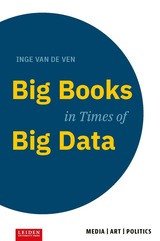 Big Books in Times of Big Data
Inge Van de Ven
Leiden University Press, 2019 Big Books in Times of Big Data examines recent trends of size and scale in the novel in terms of the shift from the bound book to the newer materialities of the digital. Using a wide-ranging international archive of hefty tomes by authors such as Mark Z. Danielewski, Roberto Bolaño, Elena Ferrante, and Karl Ove Knausgård, George R.R. Martin, Jonathan Franzen, and William T. Vollmann, Van de Ven reflects on the place of big book-bound literature in a media genealogy which includes film and television but also online databases, social media, selfies, and Global Information Systems. This study makes a case for the cultural agency of the big book—as a material object and a discursive phenomenon, entangled in complex ways with questions of canonicity, mediality, gender, and power. Van de Ven takes us into a contested bookish terrain beyond the 1,000-page mark, where issues of scale and readerly comprehension clash with authorial aggrandizement and the pleasures of ‘binging’ and serial consumption.
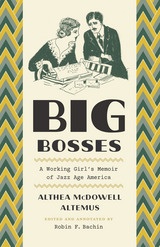 Big Bosses: A Working Girl’s Memoir of Jazz Age America
Althea McDowell Altemus
University of Chicago Press, 2016 Sharp, resourceful, and with a style all her own, Althea Altemus embodied the spirit of the independent working woman of the Jazz Age. In her memoir, Big Bosses, she vividly recounts her life as a secretary for prominent (but thinly disguised) employers in Chicago, Miami, and New York during the late teens and 1920s. Alongside her we rub elbows with movie stars, artists, and high-profile businessmen, and experience lavish estate parties that routinely defied the laws of Prohibition.
Beginning with her employment as a private secretary to James Deering of International Harvester, whom she describes as “probably the world’s oldest and wealthiest bachelor playboy,” Altemus tells us much about high society during the time, taking us inside Deering’s glamorous Miami estate, Vizcaya, an Italianate mansion worthy of Gatsby himself. Later, we meet her other notable employers, including Samuel Insull, president of Chicago Edison; New York banker S. W. Straus; and real estate developer Fred F. French. We cinch up our trenchcoats and head out sleuthing in Chicago, hired by the wife of a big boss to find out how he spends his evenings (with, it turns out, a mistress hidden in an apartment within his office, no less). Altemus was also a struggling single mother, a fact she had to keep secret from her employers, and she reveals the difficulties of being a working woman at the time through glimpses into women’s apartments, their friendships, and the dangers—sexual and otherwise—that she and others faced. Throughout, Altemus entertains with a tart and self-aware voice that combines the knowledge of an insider with the wit and clarity of someone on the fringe.
Anchored by extensive annotation and an afterword from historian Robin F. Bachin, which contextualizes Altemus’s narrative, Big Bosses provides a one-of-a-kind peek inside the excitement, extravagances, and the challenges of being a working woman roaring through the ’20s.
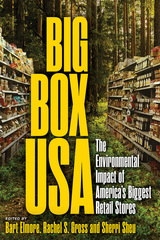 Big Box USA: The Environmental Impact of America’s Biggest Retail Stores
Bart Elmore
University of Wyoming Press, 2023 Big Box USA presents a new look at how the big box retail store has dramatically reshaped the US economy and its ecosystems in the last half century. From the rural South to the frigid North, from inside stores to ecologies far beyond, this book examines the relationships that make up one of the most visible features of late twentieth-century and early twenty-first-century American life.
The rise of big box retail since the 1960s has transformed environments on both local and global scales. Almost everyone has explored the aisles of big box stores. The allure of “everyday low prices” and brightly colored products of every kind connect shoppers with a global marketplace. Contributors join a growing conversation between business and environmental history, addressing the ways American retail institutions have affected physical and cultural ecologies around the world. Essays on Walmart, Target, Cabela’s, REI, and Bass Pro Shops assess the “bigness” of these superstores from “smokestacks to coat racks” and contend that their ecological impacts are not limited to the footprints of parking lots and manufacturing but also play a didactic role in educating consumers about their relationships with the environment.
A model for historians seeking to bring business and environmental histories together in their analyses of merchant capital’s role in the landscapes of everyday life and how it has remade human relationships with nature, Big Box USA is a must-read for students and scholars of the environment, business, sustainability, retail professionals, and a general audience.
 The Big Boxcar
Alfred Maund
University of Illinois Press, 1957 Five men and a woman, all African Americans, huddle in the rattling darkness of a boxcar headed north, away from a brutal South, seeking freedom and opportunity. They are joined by a white intruder whose own quest puts them all in great danger. Like Chaucer's pilgrims in The Canterbury Tales, each of these travelers has a story to tell, and these stories—of humor and humiliation, of prostitution and pride, of love and murder—unfold in the course of the journey. They reveal the lives and secrets of the tellers and give this transient community self-respect and solidarity as it hurtles toward arrest or worse.
The Big Boxcar, written from a totally black perspective by a white author, bears witness to the structural racism of a social order that sets ordinary people of different colors against each other to the disadvantage of all. Alan Wald's introduction documents Maund's life of activism and his uncompromising commitment to social emancipation.
Big Brother and the Grim Reaper: Political Life After Death
Benjamin Ginsberg
Michigan State University Press, 2024 States are thought only to exercise power over the land of the living. Benjamin Ginsberg argues otherwise, exploring the state’s reach into the realm of the Grim Reaper, bureaucratizing death to strengthen the state’s hold on life. He notes that increasingly institutions are using the regulation of death as an essential source of power. They do this by not only threatening death to their enemies but also securing loyalty and obedience by extending citizens’ lives and promising to effectuate the postmortem fulfillment of citizens’ antemortem desires. The state treats the loyal dead with respect, sometimes offering them a place in the secular afterlife of honor and memory, while consigning the faithless to the void.
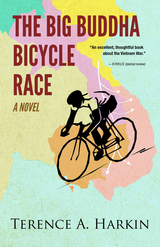 The Big Buddha Bicycle Race: A Novel
Terence A. Harkin
Ohio University Press, 2017 Silver Medalist in Literary Fiction, 2020 Military Writers Society of America Awards Brendan Leary, assigned to an Air Force photo squadron an hour from L.A., thinks he has it made. But when the U.S. invades Cambodia and he joins his buddies who march in protest, he is shipped off to an obscure air base in upcountry Thailand. There, he finds himself flying at night over the Ho Chi Minh Trail in a secret war that turns the mountains of Laos into a napalm-scorched moonscape. As the emotional vise tightens, his moral fiber crumbles and he sinks ever deeper into a netherworld of drugs, sex, and booze. When a visit by Nixon looms, Brendan dreams up an all-squadron bicycle race to build morale, win hearts and minds in rural Thailand, and make him and his underpaid buddies a pile of money. The Big Buddha Bicycle Race is a last gasp of hope that turns into a unifying adventure—until the stakes turn out to be far higher than anyone imagined. The Big Buddha Bicycle Race is a new take on the Vietnam War. A caper on the surface, it is also a tribute to the complex culture and history of Southeast Asia and a sober remembrance of those groups who have been erased from American history—the brash active-duty soldiers who risked prison by taking part in the GI antiwar movement, the gutsy air commandos who risked death night after night flying over the Ho Chi Minh Trail, and the people of Laos, whose lives and land were devastated in ways that have yet to be fully acknowledged in Western accounts of the war.
 Big Business and the State: Changing Relations in Western Europe
Raymond Vernon
Harvard University Press, 1974 In the past decade remarkable changes have taken place in the relations between big business and government in Western Europe. Large corporations have always been intimately linked to their governments—sometimes carrying out national policies, frequently influencing those policies. Recently, however, more and more national enterprises have become multinational enterprises whose aims diverge increasingly from those of the states in which they originated. In addition, the growth of the European Economic Community has outdated customary ways of doing business for large corporations while creating new opportunities for them.
A number of significant insights and interpretations result from this timely book. The interests of the big firms of Western Europe are becoming increasingly worldwide and less concerned with Europe; inter-European collaboration among them has been largely disappointing in furthering European goals; emphasis on creativity and innovation in big business has given way to the diversion of financial resources to declining industries; and lip service to promoting transnational collaboration notwithstanding, governments have preferred to back national standard bearers in key industries. No less important, the political role of large economic groups has been enhanced and that of parliament weakened or altogether circumvented.
 Big Business in China: Sino–Foreign Rivalry in the Cigarette Industry, 1890–1930
Sherman Cochran
Harvard University Press, 1980 This is the first major study in Chinese business history based largely on business's own records. It focuses on the battle for the cigarette market in early twentieth-century China between the British-American Tobacco Company, based in New York and London, and its leading Chinese rival, Nanyang Brothers Tobacco Company, whose headquarters were in Hong Kong and Shanghai.
From its founding in 1902, the British-American Tobacco Company maintained a lucrative monopoly of the market until 1915, when Nanyang entered China and extended tis operations into the country's major markets despite the use of aggressive tactics against it. Both companies grew rapidly during the 1920s, and competition between them reached its peak, but by 1930 Nanyang weakened, bringing an end to serious commercial rivalry. Though less competitive, both companies continued to trade in China until their Sino-foreign rivalry ended altogether with the founding of the People's Republic in 1949.
Debate over international commercial rivalries has often been conducted broadly in terms of imperialist exploitation and economic nationalism. This study shows the usefulness and limitations of these terms for historical purposes and contributes to the separate but related debate over the significance of entrepreneurial innovation in Chinese economic history. By analyzing the foreign Chinese companies' business practices and by describing their involvement in diplomatic incidents, boycotts, strikes, student protests, relations with peasant tobacco growers, dealings with the Kuomintang and Chinese Communist Party, and a host of other activities, the author brings to light the roles that big businesses played not only in China's economy but also in its politics, society, and foreign affairs.
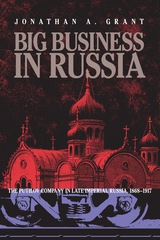 Big Business in Russia: The Putilov Company in Late Imperial Russia, 1868–1917
Jonathan A. Grant
University of Pittsburgh Press, 1999 Jonathan A. Grant has written a highly original study of the Putilov works—the most famous industrial conglomerate in the Russian Empire during the late nineteenth and early twentieth centuries. With the emergence of a capitalist system in the Russian federation in the 1990s, scholarly debate over the nature of Russian capitalism has been revived, and with this study, Grant issues a major challenge to the conventional wisdom on the nature of the Russian economy in the years before the Bolshevik revolution. Grant argues that the Putilov Company, which manufactured arms for the Russian state and a wide range of heavy industrial equipment for civilian use, adopted business practices that resembled the experiences of large machinery and armaments manufacturers in Britain, France, the Austro-Hungarian Empire, and Germany. This interpretation runs directly counter to the traditional and widely held view that Russian capitalism was shaped by the tsarist state's orders and subsidies and that the tsarist system was incompatible with the development of modern capitalism. Grant makes direct comparisons between Putilov and the famous western firm of Krupp and Vickers, illustrating similar business decisions made by both companies in terms of diversification of the product line and a penchant for private (as opposed to state) markets for primary income.
Grant has gone beyond Soviet works on the Putilov plant, examining archival documents of the company and offering critical comments on both Soviet and Western scholarship on Russian economic and social history from the perspective of this important industrial enterprise. Grant not only repeatedly demonstrates that the Putilov firm responded effectively to the changing market for its wide range of industrial products but also shows that the tsarist regime provided far more of the "systemic regularity" needed for capitalist development than generally believed. Grant's work is a significant contribution to this ongoing debate, offering a much-needed case study of Russian business history and a comparative study that extends across national boundaries. Big Business in Russia is essential reading for graduate students in Russian and European history and will also appeal to American and European business leaders eager to understand the historical background of the current economic challenges facing Russia.
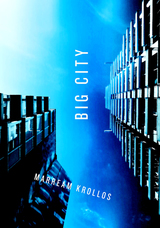 Big City
Marream Krollos
University of Alabama Press, 2018 A fiction of the city as a chorus of voices, an entity that is both one and many
Marream Krollos’s Big City is astructurally innovative work of prose composed of vignettes, verse, dialogues, monologues, and short stories. Alone, they are fragments, but together they offer a glimpse of the human condition and form a harmonized narrative of desire, loneliness, and beauty. Through language that builds, destroys, and violates, Krollos maps the geography of our contemporary condition, a haunting meditation on human togetherness and isolation.
Krollos plays with the tension between the voice of the lonely “I” produced by the urban experience and the polyphony of the city itself. A city is a chorus and a collection of traces; it is a way of being with others and the concretization of the social divisions that keep people apart. As a lifelong city dweller, Krollos is obsessed with the way that cities shape our experiences of the world, our ideas about inside and outside and self and other.
By mapping the emotional highs and lows of particular (though often anonymous) beings, the book creates a geography of the urban consciousness. The sensation of reading this lyric work of fiction is akin to how one experiences an attentive walk in an unknown city: one becomes attuned to the tenor of its many voices, how the languages lift and flourish, and how the micro and macro became integrally linked.
 Big Culture: Toward an Aesthetics of Magnitude
David Wittenberg
University of Chicago Press, 2025 A philosophical exploration of our relationship to large objects and their outsized psychological effects.
Big Culture asks a simple question: why do big things give us big feelings? Skyscrapers, disasters, and other large phenomena can elicit fear, attraction, and awe. David Wittenberg argues that these feelings cannot be explained through objects’ size alone. Instead, he contends that an encounter with bigness is a primal, even violent sensation like little else that we experience in our well-proportioned adult lives.
Drawing on examples as commonplace and as singular as atomic bombs, cinematic effects, pornographic “macrophilia,” monstrous creatures, and more, Wittenberg demonstrates how big things tap into our earliest experiences of the world, reigniting our most fundamental feelings about reality. In doing so, Wittenberg offers a new aesthetics of magnitude and of the special role that bigness plays in our everyday perception of objects and images.
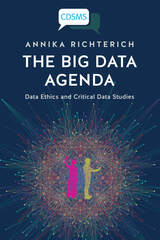 The Big Data Agenda: Data Ethics and Critical Data Studies
Annika Richterich
University of Westminster Press, 2018 This book highlights that the capacity for gathering, analysing, and utilising vast amounts of digital (user) data raises significant ethical issues. Annika Richterich provides a systematic contemporary overview of the field of critical data studies that reflects on practices of digital data collection and analysis. The book assesses in detail one big data research area: biomedical studies, focused on epidemiological surveillance. Specific case studies explore how big data have been used in academic work. The Big Data Agenda concludes that the use of big data in research urgently needs to be considered from the vantage point of ethics and social justice. Drawing upon discourse ethics and critical data studies, Richterich argues that entanglements between big data research and technology/ internet corporations have emerged. In consequence, more opportunities for discussing and negotiating emerging research practices and their implications for societal values are needed. An electronic version of this book is freely available, thanks to the support of libraries working with Knowledge Unlatched. KU is a collaborative initiative designed to make high quality books Open Access for the public good. More information about the initiative and details about KU's Open Access programme can be found at www.knowledgeunlatched.org.
Big Data and Software Defined Networks
Javid Taheri
The Institution of Engineering and Technology, 2018 Big Data Analytics and Software Defined Networking (SDN) are helping to drive the management of data and usage of the extraordinary increase of computer processing power provided by Cloud Data Centres (CDCs). SDN helps CDCs run their services more efficiently by enabling managers to configure, manage, secure, and optimize the network resources very quickly. Big-Data Analytics in turn has entered CDCs to harvest the massive computing powers and deduct information that was never reachable by conventional methods.
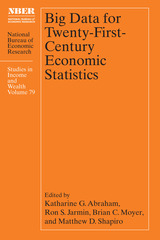 Big Data for Twenty-First-Century Economic Statistics
Edited by Katharine G. Abraham, Ron S. Jarmin, Brian C. Moyer, and Matthew D. Shapiro
University of Chicago Press, 2022 The papers in this volume analyze the deployment of Big Data to solve both existing and novel challenges in economic measurement.
The existing infrastructure for the production of key economic statistics relies heavily on data collected through sample surveys and periodic censuses, together with administrative records generated in connection with tax administration. The increasing difficulty of obtaining survey and census responses threatens the viability of existing data collection approaches. The growing availability of new sources of Big Data—such as scanner data on purchases, credit card transaction records, payroll information, and prices of various goods scraped from the websites of online sellers—has changed the data landscape. These new sources of data hold the promise of allowing the statistical agencies to produce more accurate, more disaggregated, and more timely economic data to meet the needs of policymakers and other data users. This volume documents progress made toward that goal and the challenges to be overcome to realize the full potential of Big Data in the production of economic statistics. It describes the deployment of Big Data to solve both existing and novel challenges in economic measurement, and it will be of interest to statistical agency staff, academic researchers, and serious users of economic statistics.
Big Data Recommender Systems: Algorithms, Architectures, Big Data, Security and Trust, Volume 1
Osman Khalid
The Institution of Engineering and Technology, 2019 First designed to generate personalized recommendations to users in the 90s, recommender systems apply knowledge discovery techniques to users’ data to suggest information, products, and services that best match their preferences. In recent decades, we have seen an exponential increase in the volumes of data, which has introduced many new challenges.
Big Data Recommender Systems: Application Paradigms, Volume 2
Osman Khalid
The Institution of Engineering and Technology, 2019 First designed to generate personalized recommendations to users in the 90s, recommender systems apply knowledge discovery techniques to users’ data to suggest information, products, and services that best match their preferences. In recent decades, we have seen an exponential increase in the volumes of data, which has introduced many new challenges.
Big Data Recommender Systems: Recent trends and advances
Osman Khalid
The Institution of Engineering and Technology, 2019 This timely volume combines experimental and theoretical research on big data recommender systems to help computer scientists develop new concepts and methodologies for complex applications. It includes original scientific contributions in the form of theoretical foundations, comparative analysis, surveys, case studies, techniques and tools. The authors give special attention to key topics such as data filtering and cleaning techniques for recommendations, novelty and diversity, privacy issues, security threats and their mitigation, trust, cold start, sparsity, scalability, application domains, and recommender system evaluations.
Big Data-Enabled Internet of Things
Muhammad Usman Shahid Khan
The Institution of Engineering and Technology, 2020 The fields of Big Data and the Internet of Things (IoT) have seen tremendous advances, developments, and growth in recent years. The IoT is the inter-networking of connected smart devices, buildings, vehicles and other items which are embedded with electronics, software, sensors and actuators, and network connectivity that enable these objects to collect and exchange data. The IoT produces a lot of data. Big data describes very large and complex data sets that traditional data processing application software is inadequate to deal with, and the use of analytical methods to extract value from data. This edited book covers analytical techniques for handling the huge amount of data generated by the Internet of Things, from architectures and platforms to security and privacy issues, applications, and challenges as well as future directions.
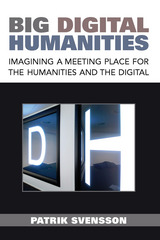 Big Digital Humanities: Imagining a Meeting Place for the Humanities and the Digital
Patrik Svensson
University of Michigan Press, 2016 Big Digital Humanities has its origins in a series of seminal articles Patrik Svensson published in the Digital Humanities Quarterly between 2009 and 2012. As these articles were coming out, enthusiasm around Digital Humanities was acquiring a great deal of momentum and significant disagreement about what did or didn’t “count” as Digital Humanities work. Svensson’s articles provided a widely sought after omnibus of Digital Humanities history, practice, and theory. They were informative and knowledgeable and tended to foreground reportage and explanation rather than utopianism or territorial contentiousness. In revising his original work for book publication, Svensson has responded to both subsequent feedback and new developments.
Svensson’s own unique perspective and special stake in the Digital Humanities conversation comes from his role as director of the HUMlab at Umeå University. HUMlab is a unique collaborative space and Digital Humanities center, which officially opened its doors in 2000. According to its own official description, the HUMlab is an open, creative studio environment where “students, researchers, artists, entrepreneurs and international guests come together to engage in dialogue, experiment with technology, take on challenges and move scholarship forward.” It is this last element “moving scholarship forward” that Svensson argues is the real opportunity in what he terms the “big digital humanities,” or digital humanities as practiced in collaborative spaces like the HUMlab, and he is uniquely positioned to take an account of this evolving dimension of Digital Humanities practice.
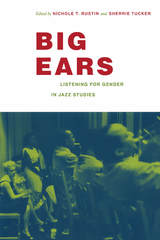 Big Ears: Listening for Gender in Jazz Studies
Nichole T. Rustin and Sherrie Tucker, eds.
Duke University Press, 2008 In jazz circles, players and listeners with “big ears” hear and engage complexity in the moment, as it unfolds. Taking gender as part of the intricate, unpredictable action in jazz culture, this interdisciplinary collection explores the terrain opened up by listening, with big ears, for gender in jazz. Essays range from a reflection on the female boogie-woogie pianists who played at Café Society in New York during the 1930s and 1940s to interpretations of how the jazzman is represented in Dorothy Baker’s novel Young Man with a Horn (1938) and Michael Curtiz’s film adaptation (1950). Taken together, the essays enrich the field of jazz studies by showing how gender dynamics have shaped the production, reception, and criticism of jazz culture. Scholars of music, ethnomusicology, American studies, literature, anthropology, and cultural studies approach the question of gender in jazz from multiple perspectives. One contributor scrutinizes the tendency of jazz historiography to treat singing as subordinate to the predominantly male domain of instrumental music, while another reflects on her doubly inappropriate position as a female trumpet player and a white jazz musician and scholar. Other essays explore the composer George Russell’s Lydian Chromatic Concept as a critique of mid-twentieth-century discourses of embodiment, madness, and black masculinity; performances of “female hysteria” by Les Diaboliques, a feminist improvising trio; and the BBC radio broadcasts of Ivy Benson and Her Ladies’ Dance Orchestra during the Second World War. By incorporating gender analysis into jazz studies, Big Ears transforms ideas of who counts as a subject of study and even of what counts as jazz. Contributors: Christina Baade, Jayna Brown, Farah Jasmine Griffin, Monica Hairston, Kristin McGee, Tracy McMullen, Ingrid Monson, Lara Pellegrinelli, Eric Porter, Nichole T. Rustin, Ursel Schlicht, Julie Dawn Smith, Jeffrey Taylor, Sherrie Tucker, João H. Costa Vargas
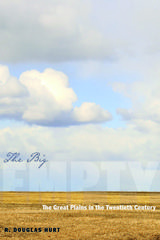 The Big Empty: The Great Plains in the Twentieth Century
R. Douglas Hurt
University of Arizona Press, 2011 The Great Plains, known for grasslands that stretch to the horizon, is a difficult region to define. Some classify it as the region beginning in the east at the ninety-eighth or one-hundredth meridian. Others identify the eastern boundary with annual precipitation lines, soil composition, or length of the grass. In The Big Empty, leading historian R. Douglas Hurt defines this region using the towns and cities—Denver, Lincoln, and Fort Worth—that made a difference in the history of the environment, politics, and agriculture of the Great Plains.
Using the voices of women homesteaders, agrarian socialists, Jewish farmers, Mexican meatpackers, New Dealers, and Native Americans, this book creates a sweeping survey of contested race relations, radical politics, and agricultural prosperity and decline during the twentieth century. This narrative shows that even though Great Plains history is fraught with personal and group tensions, violence, and distress, the twentieth century also brought about compelling social, economic, and political change.
The only book of its kind, this account will be of interest to historians studying the region and to anyone inspired by the story of the men and women who found an opportunity for a better life in the Great Plains.
A Big Enough Lie: A Novel
Eric Bennett
Northwestern University Press, 2015 Awaiting a TV talk show appearance, John Townley is quaking with dread. He has published a best-selling memoir about the Iraq War, a page-turner climaxing in atrocity. In a green room beyond the soundstage, he braces himself to confront the charismatic soldier at the violent heart of it. But John has never actually seen the man before—nor served in Iraq, nor the military. Even so, and despite the deception, he knows his fabricated memoir contains stunning truths. By turns comic, suspenseful, bitingly satirical, and emotionally potent, A Big Enough Lie pits personal mistruths against national ones of life-and-death consequence. Tracking a writer from the wilds of Florida to New York cubicles to Midwestern workshops to the mindscapes of Baghdad—and from love to heartbreak to solitary celebrity—Bennett’s novel probes our endlessly frustrated desire to grab hold of something (or somebody) true.
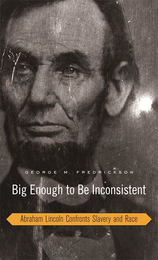 Big Enough to Be Inconsistent: Abraham Lincoln Confronts Slavery and Race
George M. Fredrickson
Harvard University Press, 2008 “Cruel, merciful; peace-loving, a fighter; despising Negroes and letting them fight and vote; protecting slavery and freeing slaves.” Abraham Lincoln was, W. E. B. Du Bois declared, “big enough to be inconsistent.” Big enough, indeed, for every generation to have its own Lincoln—unifier or emancipator, egalitarian or racist. In an effort to reconcile these views, and to offer a more complex and nuanced account of a figure so central to American history, this book focuses on the most controversial aspect of Lincoln’s thought and politics—his attitudes and actions regarding slavery and race. Drawing attention to the limitations of Lincoln’s judgment and policies without denying his magnitude, the book provides the most comprehensive and even-handed account available of Lincoln’s contradictory treatment of black Americans in matters of slavery in the South and basic civil rights in the North.
George Fredrickson shows how Lincoln’s antislavery convictions, however genuine and strong, were held in check by an equally strong commitment to the rights of the states and the limitations of federal power. He explores how Lincoln’s beliefs about racial equality in civil rights, stirred and strengthened by the African American contribution to the northern war effort, were countered by his conservative constitutional philosophy, which left this matter to the states. The Lincoln who emerges from these pages is far more comprehensible and credible in his inconsistencies, and in the abiding beliefs and evolving principles from which they arose. Deeply principled but nonetheless flawed, all-too-human yet undeniably heroic, he is a Lincoln for all generations.
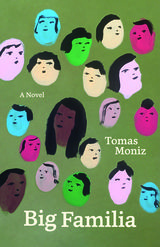 Big Familia: A Novel
Tomas Moniz
Acre Books, 2019 Big Familia follows Juan Gutiérrez, a self-employed single father, as he navigates a tumultuous year of inescapable change. His daughter, Stella, is on the verge of moving away to college; his lover, Jared, is pressing him for commitment; and his favorite watering hole—a ramshackle dive presided over by Bob the Bartender—is transforming into a karaoke hotspot. The story is set in a neighborhood that is also changing, gentrification inciting the ire of the established community.
Upon the unexpected death of one of the bar’s regulars, Juan is sent reeling, and a series of upheavals follow as he both seeks and spurns intimacy, pondering the legacy of distant parents and a failed marriage and grappling with his sexuality—all the while cycling and dating, drinking at Nicks Lounge, and parenting a determined and defiant child-become-woman.
When his incarcerated father dies and Stella reveals she’s pregnant, Juan is forced to examine the emotional bonds that both hold and hinder him, to reassess his ideas of commitment, of friendship, of love. His encounters with various characters—his mother, his ex-wife, a middle-aged punker, an aspiring acupuncturist, a dapper veteran—lead Juan to the realization that he himself must change to thrive.
This is a story of making family and making mistakes, of rending and of mending. As a Latinx queer father with a mixed-race daughter, Juan exemplifies the ways identity connects and divides us. With wit, insight, and tenderness, Big Familia explores the complexities of desire, devotion, and the mysteries of the heart.
 Big Feelings: Queer and Feminist Indie Rock After Riot Grrrl
Dan DiPiero
University of Michigan Press, 2025 In the past decade, a distinctive resurgence of indie music has seen young, queer, and feminist artists reformulating the genre with strategic reappropriations of ’90s grunge and 2000s-era pop. Big Feelings offers a nuanced analysis of these musicians and the socio-political crises informing their sounds. Dan DiPiero situates this new wave of indie music within the context of the emotional sensibilities and social orientations of a young generation flattened by an endless stream of everyday traumas. Listening closely to Soccer Mommy, Indigo De Souza, Jay Som, SASAMI, The Ophelias, Vagabon, boygenius, and more, Big Feelings traces points of resonance and connection that help fans perceive politics where it might first appear absent.
By bringing listeners’ experiences into the analysis, DiPiero shows how indie rock feminisms have shifted since the 1990s, rejecting overt political messages in favor of sonic catharsis, and reflecting the complex, ambivalent feeling of being young while the world burns. In reprising the sounds of an alt-rock associated in public consciousness with white male pain, Big Feelings doubles down on the stereotypical association between femininity and emotionality to perform whole spectrums of feeling in varied states of overwhelm. In doing so, these artists draw attention to overlooked histories of women and queer musicians who have been forging indie rock all along, while also remaking how the music matters in the present.
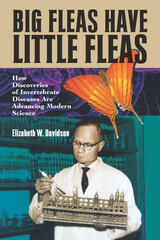 Big Fleas Have Little Fleas: How Discoveries of Invertebrate Diseases Are Advancing Modern Science
Elizabeth W. Davidson
University of Arizona Press, 2006 Ever since Louis Pasteur saved the French silk industry by identifying a disease affecting silkworms, scientists have focused their attention on smaller and smaller organisms. Once upon a time, the rhinoceros beetle threatened the coconut plantations of Polynesia until scientists discovered the virus that would control it. In more modern times, the first experimental vaccine for HIV was produced using recombinant baculovirus introduced into insect eggs. Meanwhile, soybeans, corn, and cotton are protected from insects by genes from one insecticidal bacterium, Bacillus thuringiensis—and a related strain might hold clues for combating West Nile virus and malaria.
In this book, Elizabeth Davidson shares amazing stories about diseases of insects and other invertebrates important to people—and about the scientists who learned to use those diseases to control pests and create products beneficial to humans. Focusing on insect-microbial interactions crucial to public health, she tells detective stories ranging across global history, from the silkworm farms of nineteenth-century Japan to the research labs of modern America. In these fascinating accounts, Davidson shows us how human health often comes down to a contest of bug against bug. Even habitats seething with bacteria, such as the runoff from cattle farms or sewage treatment plants, are also teeming with invertebrate life—animals that, like ourselves, have ways of fighting infection.
Scientific curiosity about what allows creatures as simple as water fleas to survive in such polluted environments has led to the discovery of chemicals with remarkable properties and potential usefulness to humankind. From diseases of shellfish to parasites of bees, Davidson opens a window on a world most of us never stop to consider—but which matters to all of us more than we might ever imagine. In our present era of pandemic scares, Big Fleas Have Little Fleas is a sweeping historical review that’s as timely as tomorrow’s headlines, showing us that the most exciting discoveries can emerge from the smallest sources.
Big Game in Alaska: A History of Wildlife and People
Morgan Sherwood
University of Alaska Press, 2008 With the Klondike gold rush, a struggle erupted in Alaska between the protection of big game animals and man’s economic ambitions, a riveting story chronicled by Morgan Sherwood in Big Game in Alaska.
In concise and clear prose, Sherwood charts the history of this environmental and political conflict, examining the creation of the Alaska Game Commission in the early 1930s, the use of distorted science and menacing technologies, the antipathy of farmers and fishermen toward animals, and the prevailing belief in man’s right to shoot wild animals at will. An incisive historical study of the flawed attempts to govern big game predation, Big Game in Alaska will be essential reading for historians and environmentalists alike.
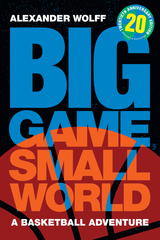 Big Game, Small World: A Basketball Adventure
Alexander Wolff
Duke University Press, 2022 During the late 1990s, eminent basketball journalist Alexander Wolff traveled the globe to determine how a game invented by a Canadian clergyman became an international phenomenon. Big Game, Small World presents Wolff’s dispatches from sixteen countries spread across five continents and multiple US states. In them, he asks: What can the game tell us about the world? And what can the world tell us about the game? Whether traveling to Bhutan to challenge its king to a pickup game, exploring the women’s game in Brazil, or covering the Afrobasket tournament in Luanda, Angola, during a civil war, Wolff shows how basketball has the power to define an individual, a culture, and even a country. This updated twentieth anniversary edition features a new preface in which Wolff outlines the contemporary rise of athlete-activists while discussing the increasing dominance within the NBA of marquee international players like Luka Dončić and Giannis Antetokounmpo. A loving celebration of basketball, Big Game, Small World is one of the most insightful books ever written about the game.
 A Big History of North America: From Montezuma to Monroe
Kevin Jon Fernlund
University of Missouri Press, 2023 The special relationship between the United Kingdom, an established and secure power, and the United States, a rising one, began after the War of 1812, as the former enemies sought accommodation with, rather than the annihilation of, one another. At the same time, Mexico, also a rising power, was not so fortunate. Its relationship with Spain, an established but declining power, turned hostile with Spain’s final exit from North America after Mexico’s War of Independence, leaving its former colony isolated, internally unstable, and vulnerable to external attack. Significantly, Mexico posed little threat to its northern neighbor. By the third decade of the eighteenth century, then, the fate of North America was largely discernable.
Nevertheless, the three-century journey to get to this point had been anything but predictable. The United States’ rise as a regional power was very much conditioned by constantly shifting transcontinental, transpacific, and above all transatlantic factors, all of which influenced North America’s three interactive cultural spheres: the Indigenous, the Hispano, and the Anglo. And while the United States profoundly shaped the history of Canada and Mexico, so, too, did these two transcontinental countries likewise shape the course of U.S. history.
In this ground-breaking work, Kevin Fernlund shows us that any society’s social development is directly related to its own social power and, just as crucially, to the protective extension or destructive intrusion of the social power of other societies.
Big House, Little House, Back House, Barn: The Connected Farm Buildings of New England
Thomas C. Hubka
University Press of New England, 2004 “Big house, little house, back house, barn”—this rhythmic cadence was sung by nineteenth-century children as they played. It also portrays the four essential components of the farms where many of them lived. The stately and beautiful connected farm buildings made by nineteenth-century New Englanders stand today as a living expression of a rural culture, offering insights into the people who made them and their agricultural way of life. A visual delight as well as an engaging tribute to our nineteenth-century forebears, this book has become one of the standard works on regional farmsteads in America.
Big House, Little House, Back House, Barn: The Connected Farm Buildings of New England
Thomas C. Hubka
Brandeis University Press, 2022 A classic work on farm buildings made by nineteenth-century New Englanders refreshed with a new introduction.
Big House, Little House, Back House, Barn portrays the four essential components of the stately and beautiful connected farm buildings made by nineteenth-century New Englanders that stand today as a living expression of a rural culture, offering insights into the people who made them and their agricultural way of life. A visual delight as well as an engaging tribute to our nineteenth-century forebears, this book, first published nearly forty years ago, has become one of the standard works on regional farmsteads in America. This new edition features a new preface by the author.
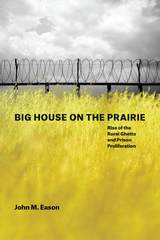 Big House on the Prairie: Rise of the Rural Ghetto and Prison Proliferation
John M. Eason
University of Chicago Press, 2017 For the past fifty years, America has been extraordinarily busy building prisons. Since 1970 we have tripled the total number of facilities, adding more than 1,200 new prisons to the landscape. This building boom has taken place across the country but is largely concentrated in rural southern towns.
In 2007, John M. Eason moved his family to Forrest City, Arkansas, in search of answers to key questions about this trend: Why is America building so many prisons? Why now? And why in rural areas? Eason quickly learned that rural demand for prisons is complicated. Towns like Forrest City choose to build prisons not simply in hopes of landing jobs or economic wellbeing, but also to protect and improve their reputations. For some rural leaders, fostering a prison in their town is a means of achieving order in a rapidly changing world. Taking us into the decision-making meetings and tracking the impact of prisons on economic development, poverty, and race, Eason demonstrates how groups of elite whites and black leaders share power. Situating prisons within dynamic shifts that rural economies are undergoing and showing how racially diverse communities lobby for prison construction, Big House on the Prairie is a remarkable glimpse into the ways a prison economy takes shape and operates.
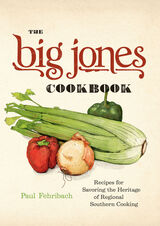 The Big Jones Cookbook: Recipes for Savoring the Heritage of Regional Southern Cooking
Paul Fehribach
University of Chicago Press, 2015 An original look at southern heirloom cooking with a focus on history, heritage, and variety.
You expect to hear about restaurant kitchens in Charleston, New Orleans, or Memphis perfecting plates of the finest southern cuisine—from hearty red beans and rice to stewed okra to crispy fried chicken. But who would guess that one of the most innovative chefs cooking heirloom regional southern food is based not in the heart of biscuit country, but in the grain-fed Midwest—in Chicago, no less? Since 2008, chef Paul Fehribach has been introducing Chicagoans to the delectable pleasures of Lowcountry cuisine, while his restaurant Big Jones has become a home away from home for the city’s southern diaspora. From its inception, Big Jones has focused on cooking with local and sustainably grown heirloom crops and heritage livestock, reinvigorating southern cooking through meticulous technique and the unique perspective of its Midwest location. And with The Big Jones Cookbook, Fehribach brings the rich stories and traditions of regional southern food to kitchens everywhere.
Fehribach interweaves personal experience, historical knowledge, and culinary creativity, all while offering tried-and-true takes on everything from Reezy-Peezy to Gumbo Ya-Ya, Chicken and Dumplings, and Crispy Catfish. Fehribach’s dishes reflect his careful attention to historical and culinary detail, and many recipes are accompanied by insights about their origins. In addition to the regional chapters, the cookbook features sections on breads, from sweet potato biscuits to spoonbread; pantry put-ups like bread and butter pickles and chow-chow; cocktails, such as the sazerac; desserts, including Sea Island benne cake; as well as an extensive section on snout-to-tail cooking, including homemade Andouille and pickled pigs’ feet.
Proof that you need not possess a thick southern drawl to appreciate the comfort of creamy grits and the skill of perfectly fried green tomatoes, The Big Jones Cookbook will be something to savor regardless of where you set your table.
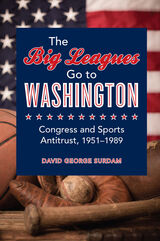 The Big Leagues Go to Washington: Congress and Sports Antitrust, 1951-1989
David George Surdam
University of Illinois Press, 2015 Between 1951 and 1989, Congress held a series of hearings to investigate the antitrust aspects of professional sports leagues. Among the concerns: ownership control of players, restrictions on new franchises, territorial protection, and other cartel-like behaviors.
In The Big Leagues Go to Washington, David Surdam chronicles the key issues that arose during the hearings and the ways opposing sides used economic data and theory to define what was right, what was feasible, and what was advantageous to one party or another. As Surdam shows, the hearings affected matters as fundamental to the modern game as broadcasting rights, player drafts and unions, league mergers, and the dominance of the New York Yankees. He also charts how lawmakers from the West and South pressed for the relocation of ailing franchises to their states and the ways savvy owners dodged congressional interference when they could and adapted to it when necessary.
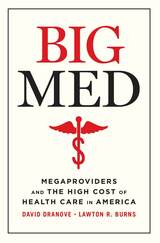 Big Med: Megaproviders and the High Cost of Health Care in America
David Dranove and Lawton Robert Burns
University of Chicago Press, 2021 There is little debate that health care in the United States is in need of reform. But where should those improvements begin? With insurers? Drug makers? The doctors themselves? In Big Med, David Dranove and Lawton Robert Burns argue that we’re overlooking the most ubiquitous cause of our costly and underperforming system: megaproviders, the expansive health care organizations that have become the face of American medicine. Your local hospital is likely part of one. Your doctors, too. And the megaproviders are bad news for your health and your wallet.
Drawing on decades of combined expertise in health care consolidation, Dranove and Burns trace Big Med’s emergence in the 1990s, followed by its swift rise amid false promises of scale economies and organizational collaboration. In the decades since, megaproviders have gobbled up market share and turned independent physicians into salaried employees of big bureaucracies, while delivering on none of their early promises. For patients this means higher costs and lesser care. Meanwhile, physicians report increasingly low morale, making it all but impossible for most systems to implement meaningful reforms.
In Big Med, Dranove and Burns combine their respective skills in economics and management to provide a nuanced explanation of how the provision of health care has been corrupted and submerged under consolidation. They offer practical recommendations for improving competition policies that would reform megaproviders to actually achieve the efficiencies and quality improvements they have long promised.
This is an essential read for understanding the current state of the health care system in America—and the steps urgently needed to create an environment of better care for all of us.
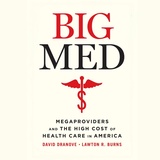 Big Med: Megaproviders and the High Cost of Health Care in America
David Dranove and Lawton Robert Burns
University of Chicago Press, 2021 This is an auto-narrated audiobook edition of this book. There is little debate that health care in the United States is in need of reform. But where should those improvements begin? With insurers? Drug makers? The doctors themselves? In Big Med, David Dranove and Lawton Robert Burns argue that we’re overlooking the most ubiquitous cause of our costly and underperforming system: megaproviders, the expansive health care organizations that have become the face of American medicine. Your local hospital is likely part of one. Your doctors, too. And the megaproviders are bad news for your health and your wallet.
Drawing on decades of combined expertise in health care consolidation, Dranove and Burns trace Big Med’s emergence in the 1990s, followed by its swift rise amid false promises of scale economies and organizational collaboration. In the decades since, megaproviders have gobbled up market share and turned independent physicians into salaried employees of big bureaucracies, while delivering on none of their early promises. For patients this means higher costs and lesser care. Meanwhile, physicians report increasingly low morale, making it all but impossible for most systems to implement meaningful reforms.
In Big Med, Dranove and Burns combine their respective skills in economics and management to provide a nuanced explanation of how the provision of health care has been corrupted and submerged under consolidation. They offer practical recommendations for improving competition policies that would reform megaproviders to actually achieve the efficiencies and quality improvements they have long promised.
This is an essential read for understanding the current state of the health care system in America—and the steps urgently needed to create an environment of better care for all of us.
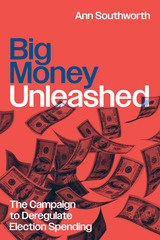 Big Money Unleashed: The Campaign to Deregulate Election Spending
Ann Southworth
University of Chicago Press, 2023 The story of how the First Amendment became an obstacle to campaign finance regulation—a history that began much earlier than most imagine. Americans across party lines believe that public policy is rigged in favor of those who wield big money in elections. Yet, legislators are restricted in addressing these concerns by a series of Supreme Court decisions finding that campaign finance regulations violate the First Amendment. Big Money Unleashed argues that our current impasse is the result of a long-term process involving many players. Naturally, the justices played critical roles—but so did the attorneys who hatched the theories necessary to support the legal doctrine, the legal advocacy groups that advanced those arguments, the wealthy patrons who financed these efforts, and the networks through which they coordinated strategy and held the Court accountable. Drawing from interviews, public records, and archival materials, Big Money Unleashed chronicles how these players borrowed a litigation strategy pioneered by the NAACP to dismantle racial segregation and used it to advance a very different type of cause.
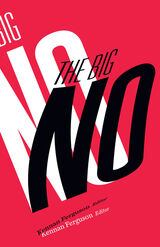 The Big No
Kennan Ferguson
University of Minnesota Press, 2021 What it means to celebrate the potential and the power of no
What does it mean to refuse? To not participate, to not build a better world, to not come up with a plan? To just say “no”? Against the ubiquitous demands for positive solutions, action-oriented policies, and optimistic compromises, The Big No refuses to play. Here leading scholars traverse the wide range of political action when “no” is in the picture, analyzing topics such as collective action, antisocialism, empirical science, the negative and the affirmative in Deleuze and Derrida, the “real” and the “clone,” Native sovereignty, and Afropessimism. In his introduction, Kennan Ferguson sums up the concept of the “Big No,” arguing for its political importance. Whatever its form—he identifies various strains—the Big No offers power against systems of oppression. Joshua Clover argues for the importance of Marx and Fanon in understanding how people are alienated and subjugated. Theodore Martin explores the attractions of antisociality in literature and life, citing such novelists as Patricia Highsmith and Richard Wright. François Laruelle differentiates nonphilosophy from other forms of French critical theory. Katerina Kolozova applies this insight to the nature of reality itself, arguing that the confusion of thought and reality leads to manipulation, automation, and alienation. Using poetry and autobiography, Frank Wilderson shows how Black people—their bodies and being—are displaced in politics, replaced and erased by the subjectivities of violence, suffering, and absence. Andrew Culp connects these themes of negativity, comparing and contrasting the refusals of antiphilosophy and Afropessimism. Thinking critically usually demands alternatives: how would you fix things? But, as The Big No shows, being absolutely critical—declining the demands of world-building—is one necessary response to wrong, to evil. It serves as a powerful reminder that the presumption of political action is always positive. Contributors: Joshua Clover, U of California Davis and U of Copenhagen; Andrew Culp, California Institute of the Arts; Katerina Kolozova, Institute of Social Sciences and Humanities Skopje; Theodore Martin, U of California, Irvine; Anthony Paul Smith, La Salle U; Frank B. Wilderson III, U of California, Irvine.
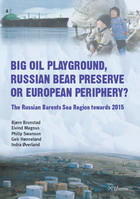 Big Oil Playground, Russian Bear Preserve or European Periphery?: The Russian Barents Sea Region towards 2015
Bjørn Brunstad, Eivind Magnus, Philip Swanson, Geir Hønneland, and Indra Øverlan
Eburon Academic Publishers, 2005 In the far northwestern corner of Russia lies the Barents Sea: a rich region of natural resources that has yet to be fully exploited. Future actions taken in Barents will create major environmental, political, and economic ripples around the globe. Big Oil Playground, Russian Bear Preserve or European Periphery? explores three plausible and thought-provoking scenarios for the region's future over the next two decades.
The volume considers whether the international energy industry will transform Barents into a "big oil playground," if environmental protection rules will make it a "Russian bear preserve," or if integration into world trade will put it on the "European periphery." The result is a valuable resource for understanding the changing dynamics and challenges in modern public planning and a globalized economy.
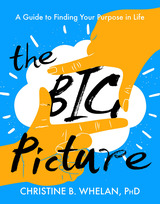 The Big Picture: A Guide to Finding Your Purpose in Life
Christine B. Whelan
Templeton Press, 2016 “If young adults could be guided in the right direction for a life journey of meaning and purpose, we would be grooming the leaders of tomorrow for a better world. This book is the perfect guide.” —Deepak Chopra, MD, FACP, founder of the Chopra Center for Wellbeing What am I going to do for the rest of my life? This question is familiar for young people at a turning point—whether it’s facing the end of high school, college, graduate school, or just a dead-end job. Maybe they have the degree they want but don’t know where to start their job search. Perhaps they’re still choosing a major and, given the range—from “Biochemistry” to “Adventure Education”—are lost in the options. Maybe they’re facing a mountain of debt but don’t want to get locked into a job they hate. While other books might advise writing resumes or preparing for interviews, they only go so far. Young people want more than just another job—they want a life, and a meaningful one at that. Enter The Big Picture. Created by the leading authority on self-help research and reviewed by over six hundred college students, Dr. Christine B. Whelan’s The Big Picture offers a guide to discovering one’s talents, dreams, and desires that can lead one to a fulfilling career but fulfilling life. It guides young people to take a step back and look at the “big picture” of who they are, what they want, and why they’re here. Through quizzes and questionnaires which college students have vetted, Whelan guides the reader through “big picture” questions like, - What are my talents—and how can I use those to help others and create meaning?
- How have my life experiences shaped who I am and what I can give?
- What do I value—and how can I be happy while being true to those values?
Although there are endless books on finding a job, this is the first book that presents research-based and tested material to help young people answer the question, What will I do with my life? The Big Picture provides the resources needed to find—and live—a purposeful life. An excellent gift for a graduate or a guide for yourself.
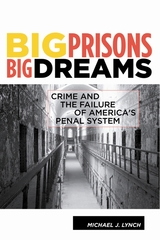 Big Prisons, Big Dreams: Crime and the Failure of America's Penal System
Michael J. Lynch
Rutgers University Press, 2007 The American prison system has grown tenfold since the 1970s, but crime rates in the United States have not decreased. This doesn't surprise Michael J. Lynch, a critical criminologist, who argues that our oversized prison system is a product of our consumer culture, the public's inaccurate beliefs about controlling crime, and the government's criminalizing of the poor.
While deterrence and incapacitation theories suggest that imprisoning more criminals and punishing them leads to a reduction in crime, case studies, such as one focusing on the New York City jail system between 1993 and 2003, show that a reduction in crime is unrelated to the size of jail populations. Although we are locking away more people, Lynch explains that we are not targeting the worst offenders. Prison populations are comprised of the poor, and many are incarcerated for relatively minor robberies and violence. America's prison expansion focused on this group to the exclusion of corporate and white collar offenders who create hazardous workplace and environmental conditions that lead to deaths and injuries, and enormous economic crimes. If America truly wants to reduce crime, Lynch urges readers to rethink cultural values that equate bigger with better.
 The Big Question
David Lehman
University of Michigan Press, 1995 David Lehman's second book in the Poets on Poetry series confirms his stature as one of our leading literary figures. He is also a literary critic with a rare ability to elucidate thorny ideas and controversial issues in a way that is both entertaining and instructive.
The Big Question leads off with a major essay explaining and exploring the concept of postmodernism. The next sections include pieces about poetry and fiction, lives and letters, and criticism and controversy.
Other "big questions" addressed include political correctness, the genre of literary biography, academic life and deconstruction. There is a humorous piece on poetry "slams" and the whole "downtown" poetry scene, a feisty op-ed column (on the deconstruction of the Gettysburg Address), a pair of wickedly satirical poems, as well as a group of exceptional book reviews.
The subjects covered range from Philip Larkin to Philip Roth- from the greatest poetry hoax of the twentieth century (which took place in Australia during World War II) to Charles Dickens's unfinished last novel- and from nineteenthth-century American poetry to the political career of Martin Heidegger.
David Lehman is a poet and author of Signs of the Times: Deconstruction and the Fall of Paul de Man. He is series editor of the celebrated Best American Poetry anthology.
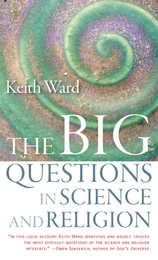 The Big Questions in Science and Religion
Keith Ward
Templeton Press, 2008 Can religious beliefs survive in the scientific age? Are they resoundingly outdated? Or, is there something in them of great importance, even if the way they are expressed will have to change given new scientific context? These questions are among those at the core of the science-religion dialogue. In The Big Questions in Science and Religion, Keith Ward, an Anglican priest who was once an atheist, offers compelling insights into the often contentious relationship between diverse religious views and new scientific knowledge. He identifies ten basic questions about the nature of the universe and human life. Among these are: •Does the universe have a goal or purpose? •Do the laws of nature exclude miracles? •Can science provide a wholly naturalistic explanation for moral and religious beliefs? •Has science made belief in God obsolete? Are there any good science-based arguments for God? With his expertise in the study of world religions, Ward considers concepts from Buddhism, Confucianism, Taoism, Islam, Hinduism, Judaism, and Christianity, while featuring the speculations of cosmologists, physicians, mathematicians, and philosophers. In addition, Ward examines the implications of ancient laws and modern theories and evaluates the role of religious experience as evidence of a nonphysical reality. Writing with enthusiasm, passion, and clarity, Keith Ward conveys the depth, difficulty, intellectual excitement, and importance of the greatest intellectual and existential questions of the modern scientific age.
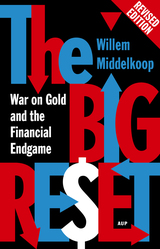 The Big Reset Revised Edition: War on Gold and the Financial Endgame
Willem Middelkoop
Amsterdam University Press, 2016 "Willem Middelkoop and The Big Reset is right in the thick of the action! Great book; awesome statistical reference to go along with the analysis.
- James Rickards on the first edition. Rickards is the author of The Death of Money and Currency Wars, a National Bestseller.
A system reset seems imminent. The world's financial system will need to find a new anchor before the year 2020. Since the beginning of the credit crisis, the US realized the dollar will lose its role as the world's reserve currency, and has been planning for a monetary reset. According to Willem Middelkoop, this reset will be designed to keep the US in the driver's seat, allowing the new monetary system to include significant roles for other currencies such as the euro and China's renminbi.
PREPARE FOR THE COMING RESET
In all likelihood gold will be re-introduced as one of the pillars of this next phase in the global financial system. The prediction is that gold could be revalued at $ 7,000 per troy ounce. By looking past the American 'smokescreen' surrounding gold and the dollar long ago, China and Russia have been accumulating massive amounts of gold reserves, positioning themselves for a more prominent role in the future to come. The reset will come as a shock to many. The Big Reset will help everyone who wants to be fully prepared.
This fully revised edition of Middelkoop's book takes into account developments since its original publication, which have only strengthened the case for the coming return of gold.
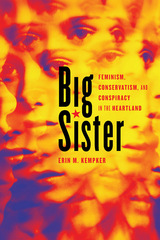 Big Sister: Feminism, Conservatism, and Conspiracy in the Heartland
Erin M. Kempker
University of Illinois Press, 2018 The mid-Seventies represented a watershed era for feminism. A historic National Women's Conference convened in Houston in 1977. The Equal Rights Amendment inched toward passage. Conservative women in the Midwest, however, saw an event like the International Year of the Woman not as a celebration, but as part of a conspiracy that would lead to radicalism and one-world government. Erin M. Kempker delves into how conspiracy theories affected--and undermined--second wave feminism in the Midwest. Focusing on Indiana, Kempker views this phenomenon within the larger history of right-wing fears of subversion during the Cold War. Feminists and conservative women each believed they spoke in women's best interests. Though baffled by the conservative dread of "collectivism," feminists compromised by trimming radicals from their ranks. Conservative women, meanwhile, proved adept at applying old fears to new targets. Kemper's analysis places the women's opposing viewpoints side by side to unlock the differences that separated the groups, explain one to the other, and reveal feminism's fate in the Midwest.
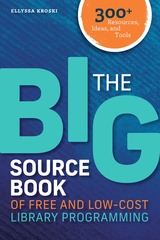 The Big Sourcebook of Free and Low-Cost Library Programming: 300+ Resources, Ideas, and Tools
Ellyssa Kroski
American Library Association, 2024 There’s no need to spend hours trying to come up with creative programming ideas—bestselling library activity guru Kroski has already done all the hard work for you! Largely drawn from contributions by library workers across the country, this e-book is a cornucopia of ready-to-go activities, easily accessible resources, and adaptable tools for inspiring countless fun and engaging programs at your library. Best of all, these exciting low cost/no-cost library programs can be implemented using only free resources. Offering a broad selection of ideas for adults, tweens, and younger children that can be tailored to a variety of contexts, inside this sourcebook you’ll discover - seniors and older adult programming resources on such topics as genealogy, financial literacy, lifelong learning, gardening, and health and wellness;
- career, ESL/literacy, and "just for fun" programs and book clubs perfect for adults;
- young adult programming resources such as the Book to Action toolkit, YALSA’s Teen Programming Guidelines, literacy and educational resources, computers and coding activities, live action roleplaying games (LARPS), and many more;
- free resources to teach financial responsibility to toddlers, lesson plans from NASA, resources to host an Earth Day event incorporating a “free trees for kids” program, StoryWalks and more ideas for children;
- makerspace, STEM, and art programming resources;
- Pinterest boards, idea lists, writing prompts, coloring pages, free books, and passive programming downloadables and printables;
- information about more than two dozen grant opportunities for funding programs; and
- planning templates, marketing tips, assessment resources, and tools for brainstorming and productivity.
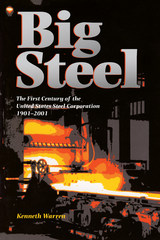 Big Steel: The First Century of the United States Steel Corporation 1901-2001
Kenneth Warren
University of Pittsburgh Press, 2001
At its formation in 1901, the United States Steel Corporation was the earth’s biggest industrial corporation, a wonder of the manufacturing world. Immediately it produced two thirds of America’s raw steel and thirty percent of the steel made worldwide. The behemoth company would go on to support the manufacturing superstructure of practically every other industry in America. It would create and sustain the economies of many industrial communities, especially Pittsburgh, employing more than a million people over the course of the century.
A hundred years later, the U.S. Steel Group of USX makes scarcely ten percent of the steel in the United States and just over one and a half percent of global output. Far from the biggest, the company is now considered the most efficient steel producer in the world. What happened between then and now, and why, is the subject of Big Steel, the first comprehensive history of the company at the center of America’s twentieth-century industrial life.
Granted privileged and unprecedented access to the U.S. Steel archives, Kenneth Warren has sifted through a long, complex business history to tell a compelling story. Its preeminent size was supposed to confer many advantages to U.S. Steel—economies of scale, monopolies of talent, etc. Yet in practice, many of those advantages proved illusory. Warren shows how, even in its early years, the company was out-maneuvered by smaller competitors and how, over the century, U.S. Steel’s share of the industry, by every measure, steadily declined.
Warren’s subtle analysis of years of internal decision making reveals that the company’s size and clumsy hierarchical structure made it uniquely difficult to direct and manage. He profiles the chairmen who grappled with this “lumbering giant,” paying particular attention to those who long ago created its enduring corporate culture—Charles M. Schwab, Elbert H. Gary, and Myron C. Taylor.
Warren points to the way U.S. Steel’s dominating size exposed it to public scrutiny and government oversight—a cautionary force. He analyzes the ways that labor relations affected company management and strategy. And he demonstrates how U.S. Steel suffered gradually, steadily, from its paradoxical ability to make high profits while failing to keep pace with the best practices. Only after the drastic pruning late in the century—when U.S. Steel reduced its capacity by two-thirds—did the company become a world leader in steel-making efficiency, rather than merely in size.
These lessons, drawn from the history of an extraordinary company, will enrich the scholarship of industry and inform the practice of business in the twenty-first century.
 The Big Story: The Oral History of Philadelphia TV News
David Grzybowski
Temple University Press, 2025 “He was much like the Walter Cronkite of Philadelphia.”—Ed Rendell, former Philadelphia Mayor and Pennsylvania Governor, about Jim Gardner, the trusted voice of WPVI’s Action News for 47 years
“We were the only station that stayed on the air continuously. We even pre-empted the CBS evening news.”—Larry Kane, anchor at WCAU, about covering the MOVE bombing
“The highs of working during the pandemic were keeping people informed of this deadly virus and what they had to do to take care of themselves and each other.”—Ukee Washington, KYW anchor, on the pandemic
The Big Story is David Grzybowski’s engrossing oral history of Philadelphia TV news from the perspective of reporters, photographers, producers, and news directors. Covering all the big stories from the late 1970s through the present, this fast-paced running commentary reflects on the uncertainty of the Three Mile Island disaster, the thrill of the Live Aid concert, the “Storm of the Century” (that wasn’t), and the championship victories of the Phillies and the Eagles, among other notable events, local, national, and global.
The Big Story features more than 200 interviews, including anecdotes from seasoned Philadelphia anchors Jim Gardner, Larry Kane, Lisa Thomas-Laury, Mike Jerrick, Vai Sikahema, Tamala Edwards, Pat Ciarrocchi, and Cecily Tynan, among others, about their experience on and off the job. Decision makers reflect on how to cover hot news stories such as Pennsylvania State Treasure R. Budd Dwyer’s on-air suicide. (“It was a big bloody horrifying mess,” according to Chris Wagner, WPVI anchor.)
Grzybowski highlights the Mummers, the launch of Good Day Philadelphia, off-the-air scandals, and how the Action News style secured a loyal following with Philadelphians while the Eyewitness News format competed hard to gain ratings. But the Big Story is how The Big Story provides compelling stories about Philadelphia’s news breakers and newsmakers.
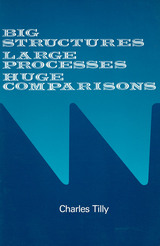 Big Structures, Large Processes, Huge Comparisons
Charles Tilly
Russell Sage Foundation, 1984 This bold and lively essay is one of those rarest of intellectual achievements, a big small book. In its short length are condensed enormous erudition and impressive analytical scope. With verve and self-assurance, it addresses a broad, central question: How can we improve our understanding of the large-scale processes and structures that transformed the world of the nineteenth century and are transforming our world today? Tilly contends that twentieth-century social theories have been encumbered by a nineteenth century heritage of "pernicious postulates." He subjects each misleading belief to rigorous criticism, challenging many standard social science paradigms and methodologies. As an alternative to those timeless, placeless models of social change and organization, Tilly argues convincingly for a program of concrete, historically grounded analysis and systematic comparison. To illustrate the strategies available for such research, Tilly assesses the works of several major practitioners of comparative historical analysis, making skillful use of this selective review to offer his own speculative, often unconventional accounts of our recent past. Historically oriented social scientists will welcome this provocative essay and its wide-ranging agenda for comparative historical research. Other social scientists, their graduate and undergraduate students, and even the interested general reader will find this new work by a major scholar stimulating and eminently readable. This is the second of five volumes commissioned by the Russell Sage Foundation to mark its seventy-fifth anniversary. "In this short, brilliant book Tilly suggests a way to think about theories of historical social change....This book should find attentive readers both in undergraduate courses and in graduate seminars. It should also find appreciative readers, for Tilly is a writer as well as a scholar." —Choice
 The Big Sugar: A Brigid Reardon Mystery
Mary Logue
University of Minnesota Press, 2024 A grisly death near her new homestead draws Brigid Reardon into a complicated mystery soon after her arrival in Cheyenne, Wyoming, in 1881
After the harrowing events that entangled her in Deadwood, Brigid Reardon just wants to move west and get on with her new life in America. But shortly after traveling to Cheyenne to join her brother Seamus, she finds herself caught up in another deadly mystery—beginning with her discovery of a neighbor’s body on the plains near their homes. Was Ella murdered? Are either of the two men in Ella’s life responsible? With Seamus away on a cattle drive, her friend Padraic possibly succumbing to a local’s charms, and the sheriff seemingly satisfied with Ella’s fate, it falls to Brigid to investigate what really happened, which puts her in the crosshairs of one of Cheyenne’s cattle barons, called “big sugars” in these parts. All she really wants is something better than a crumbling, soddy homestead on the desolate plains of Wyoming—and maybe, just maybe, she wants Padraic—but life, it seems, has other plans: this young immigrant from Ireland is going to be a detective on the western frontier of 1880s America, even if it kills her. Loosely based on the true story of Ellen Watson in Cheyenne in 1889, The Big Sugar continues the adventure begun in Mary Logue’s celebrated mystery The Streel, which introduced a “gritty, charming, clever protagonist” (Kirkus Reviews). With a faultless sense of history, a keen eye for suspense, and a poet’s way with prose, Mary Logue all but guarantees that readers, like Brigid, will find the mystery at the heart of The Big Sugar downright irresistible.
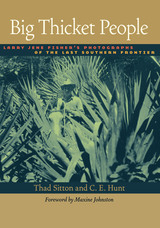 Big Thicket People: Larry Jene Fisher's Photographs of the Last Southern Frontier
By Thad Sitton and C.E. Hunt
University of Texas Press, 2008 Living off the land—hunting, fishing, and farming, along with a range of specialized crafts that provided barter or cash income—was a way of life that persisted well into the twentieth century in the Big Thicket of southeast Texas. Before this way of life ended with World War II, professional photographer Larry Jene Fisher spent a decade between the 1930s and 1940s photographing Big Thicket people living and working in the old ways. His photographs, the only known collection on this subject, constitute an irreplaceable record of lifeways that first took root in the southeastern woodlands of the colonial United States and eventually spread all across the Southern frontier. Big Thicket People presents Fisher's photographs in suites that document a wide slice of Big Thicket life-people, dogs, camps, deer hunts, farming, syrup mills, rooter hogs and stock raising, railroad tie making, barrel stave making, chimney building, peckerwood sawmills, logging, turpentining, town life, church services and picnics, funerals and golden weddings, and dances and other amusements. Accompanying each suite of images is a cultural essay by Thad Sitton, who also introduces the book with a historical overview of life in the Big Thicket. C. E. Hunt provides an informative biography of Larry Jene Fisher.
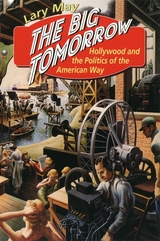 The Big Tomorrow: Hollywood and the Politics of the American Way
Lary May
University of Chicago Press, 2000 In this daring reexamination of the connections between national politics and Hollywood movies, Lary May offers a fresh interpretation of American culture from the New Deal through the Cold War—one in which a populist, egalitarian ethos found itself eventually supplanted by a far different view of the nation. "One of the best books ever written about the movies." —Tom Ryan, The Age
"The most exhilarating work of revisionist film history since Pauline Kael's Citizen Kane. . . . May's take on what movies once were (energizing, as opposed to enervating), and hence can become again, is enough to get you believing in them again as one of the regenerative forces America so sorely needs."—Jay Carr, Boston Globe
"A startling, revisionist history of Hollywood's impact on politics and American culture. . . . A convincing and important addition to American cultural criticism."—Publishers Weekly
"A controversial overview of 30 years of American film history; must reading for any serious student of the subject."—Choice
"A provocative social history of Hollywood's influence in American life from the 1930s to the 1950s. May argues persuasively that movies in the period offered a good deal of tough criticism of economic and social conditions in U.S. society. . . . May challenges us to engage in some serious rethinking about Hollywood's impact on American society in the middle of the twentieth century."—Robert Brent Toplin, American Historical Review
Big Top Boss: JOHN RINGLING NORTH AND THE CIRCUS
David Lewis Hammarstrom
University of Illinois Press, 1992 This first balanced picture of circus
king John Ringling North explored the remarkable career of the man who ran Ringling
Bros. and Barnum & Baily for thirty years. David Lewis Hammarstrom details
how North guided the circus through adversities ranging from depressions and
wars to crippling labor strikes and rapidly changing trends in American entertainment.
Hammarstrom interviewed a host of circus figures including North himself; his
formers, directors, and department heads who were involved with the circus when
North owned and operated it.
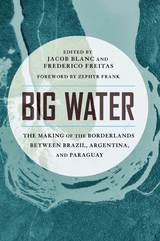 Big Water: The Making of the Borderlands Between Brazil, Argentina, and Paraguay
Edited by Jacob Blanc and Frederico Freitas; Foreword by Zephyr Frank
University of Arizona Press, 2018 Big Water explores four centuries of the overlapping histories of Brazil, Argentina, and Paraguay (the Triple Frontier), and the colonies that preceded them. Examining an important area that includes some of the first national parks established in Latin America and one of the world’s largest hydroelectric dams, this transnational approach illustrates how these three nation-states have interacted over time.
From the Jesuit reductions in the seventeenth century to the flows of capital and goods accelerated by contemporary trade agreements, the Triple Frontier region has proven fundamental to the development of Brazil, Argentina, and Paraguay, as well as to the Southern Cone and South America itself. Although historians from each of these three countries have tended to construct narratives that stop at their respective borders, the contributors call for a reinterpretation that goes beyond the material and conceptual boundaries of the Triple Frontier. In offering a transnational approach, Big Water helps transcend nation-centered blind spots and approach new understandings of how space and society have developed throughout Latin America.
These essays complicate traditional frontier histories and balance the excessive weight previously given to empires, nations, and territorial expansion. Overcoming stagnant comparisons between national cases, the research explores regional identity beyond border and geopolitical divides. Thus, Big Water focuses on the uniquely overlapping character of the Triple Frontier and emphasizes a perspective usually left at the periphery of national histories.
Contributors
Shawn Michael Austin
Jacob Blanc
Bridget María Chesterton
Christine Folch
Zephyr Frank
Frederico Freitas
Michael Kenneth Huner
Evaldo Mendes da Silva
Eunice Sueli Nodari
Graciela Silvestri
Guillermo Wilde
Daryle Williams
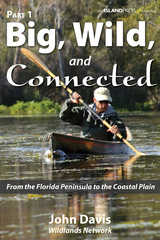 Big, Wild, and Connected: Part 1: From the Florida Peninsula to the Coastal Plain
John Davis
Island Press, 2013 This E-ssential is a three-part series that covers John Davis's epic journey from Florida to Maine. In 2011, with support from the Wildlands Network, Davis traveled 7,600 miles in 10 months from Florida to Maine by foot, bicycle, skis, and canoe/kayak. His extensive travels were motivated by wanting to answer the question “Is it possible in the twenty-first century to identify and protect a continental-long wildlife corridor that could help to protect eastern nature into the future?” John paints a vivid picture of the physical challenges of the trek, such as climbing the highest point in South Carolina with a heavily loaded bike and trying to consume the 8,000 calories per day he needed to fuel himself for the journey. As readers adventure with Davis, they will also share his evolving understanding of what it would take to implement an Eastern Wildway. Eastern wildlife, both seen and unseen, from Florida panthers to North Carolina’s red wolves to the ghosts of cougars farther north, are the real focus of this adventure as John explores how such wildness can coexist with human development in the most populated regions of the United States. The science and conservation of large-scale connectivity are brought to life by his travels—offering unique insights into the challenges and opportunities for creating an Eastern Wildway. This is a must-read for enthusiasts of hiking narratives, as well as professionals and students interested in issues related to large-scale connectivity. Compelling photographs and other graphics complement John’s fascinating story.
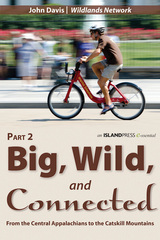 Big, Wild, and Connected: Part 2: From the Central Appalachians to the Catskill Mountains
John Davis
Island Press, 2013 This E-ssential is a three-part series that covers John Davis's epic journey from Florida to Maine. In 2011, with support from the Wildlands Network, Davis traveled 7,600 miles in 10 months from Florida to Maine by foot, bicycle, skis, and canoe/kayak. His extensive travels were motivated by wanting to answer the question “Is it possible in the twenty-first century to identify and protect a continental-long wildlife corridor that could help to protect eastern nature into the future?”
John paints a vivid picture of the physical challenges of the trek, such as climbing the highest point in South Carolina with a heavily loaded bike and trying to consume the 8,000 calories per day he needed to fuel himself for the journey. As readers adventure with Davis, they will also share his evolving understanding of what it would take to implement an Eastern Wildway.
Eastern wildlife, both seen and unseen, from Florida panthers to North Carolina’s red wolves to the ghosts of cougars farther north, are the real focus of this adventure as John explores how such wildness can coexist with human development in the most populated regions of the United States. The science and conservation of large-scale connectivity are brought to life by his travels—offering unique insights into the challenges and opportunities for creating an Eastern Wildway. This is a must-read for enthusiasts of hiking narratives, as well as professionals and students interested in issues related to large-scale connectivity. Compelling photographs and other graphics complement John’s fascinating story.
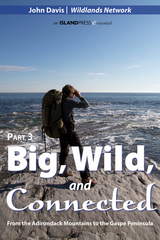 Big, Wild, and Connected: Part 3: From the Adirondack Mountains to the Gaspé Peninsula
John Davis
Island Press, 2013 This E-ssential is a three-part series that covers John Davis's epic journey from Florida to Maine. In 2011, with support from the Wildlands Network, Davis traveled 7,600 miles in 10 months from Florida to Maine by foot, bicycle, skis, and canoe/kayak. His extensive traveles were motivated by wanting to answer the question “Is it possible in the twenty-first century to identify and protect a continental-long wildlife corridor that could help to protect eastern nature into the future?”
John paints a vivid picture of the physical challenges of the trek, such as climbing the highest point in South Carolina with a heavily loaded bike and trying to consume the 8,000 calories per day he needed to fuel himself for the journey. As readers adventure with Davis, they will also share his evolving understanding of what it would take to implement an Eastern Wildway.
Eastern wildlife, both seen and unseen, from Florida panthers to North Carolina’s red wolves to the ghosts of cougars farther north, are the real focus of this adventure as John explores how such wildness can coexist with human development in the most populated regions of the United States. The science and conservation of large-scale connectivity are brought to life by his travels—offering unique insights into the challenges and opportunities for creating an Eastern Wildway. This is a must-read for enthusiasts of hiking narratives, as well as professionals and students interested in issues related to large-scale connectivity. Compelling photographs and other graphics complement John’s fascinating story.
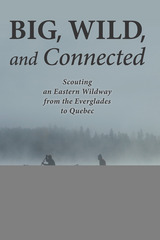 Big, Wild, and Connected: Scouting an Eastern Wildway from the Everglades to Quebec
John Davis
Island Press, 2015 In 2011, adventurer and conservationist John Davis walked, cycled, skied, canoed, and kayaked on an epic 10-month, 7,600-mile journey that took him from the keys of Florida to a remote seashore in northeastern Quebec. Davis was motivated by a dream: to see a continent-long corridor conserved for wildlife in the eastern United States, especially for the large carnivores so critical to the health of the land.
In Big, Wild, and Connected, we travel the Eastern Wildway with Davis, viscerally experiencing the challenges large carnivores, with their need for vast territories, face in an ongoing search for food, water, shelter, and mates. On his self-propelled journey, Davis explores the wetlands, forests, and peaks that are the last strongholds for wildlife in the East. This includes strategically important segments of disturbed landscapes, from longleaf pine savanna in the Florida Panhandle to road-latticed woods of Pennsylvania. Despite the challenges, Davis argues that creation of an Eastern Wildway is within our reach and would serve as a powerful symbol of our natural and cultural heritage.
Big, Wild, and Connected reveals Eastern landscapes through wild eyes, a reminder that, for the creatures with which we share the land, movement is as essential to life as air, water, and food. Davis’ journey shows that a big, wild, and connected network of untamed places is the surest way to ensure wildlife survival through the coming centuries.
The Big Wild Soul of Terrence Cole: An Eclectic Collection to Honor Alaska’s Public Historian
Edited by Frank Soos and Mary Ehrlander
University of Alaska Press, 2019 This collection of essays honors beloved Alaska historian Terrence Cole upon his retirement. Contributors include former students and colleagues whose personal and professional lives he has touched deeply. The pieces range from appreciative reflections on Cole’s contributions in teaching, research, and service, to topics he encouraged his students to pursue, plus pieces he inspired directly or indirectly. It is an eclectic collection that spans the humanities and social sciences, each capturing aspects of the human experience in Alaska’s vast and variable landscape. Together the essays offer readers complementary perspectives that will delight Cole’s many fans—and gain him new ones.
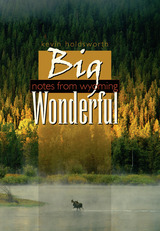 Big Wonderful: Notes from Wyoming
Kevin Holdsworth
University Press of Colorado, 2006 In this unconventional memoir, Kevin Holdsworth vividly portrays life in remote, unpredictable country and ruminates on the guts - or foolishness - it takes to put down roots and raise a family in a merciless environment.
Growing up in Utah, Holdsworth couldn't wait to move away. Once ensconced on the East Coast, however, he found himself writing westerns and dreaming of the mountains he'd skied and climbed. Fed up with city life, he moved to a small Wyoming town.
In Big Wonderful, he writes of a mountaineering companion's death, the difficult birth of his son, and his father's terminal illness - encounters with mortality that sharpened his ideas about risk, care, and commitment. He puts a new spin on mountaineering literature, telling wild tales from his reunion with the mountains but also relating the surprising willpower it took to turn back from risks he would have taken before he became a father. He found he needed courage to protect and engage deeply with his family, his community, and the wild places he loves.
Holdsworth's essays and poems are rich with anecdotes, characters, and vivid images. Readers will feel as if they themselves watched a bear destroy an entire expedition's food, walked with his great-great-grandmother along the icy Mormon Trail, and tried to plant a garden in Wyoming's infamous wind.
Readers who love the outdoors will enjoy this funny and touching take on settling down and adventuring in the West's most isolated country.
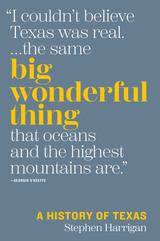 Big Wonderful Thing: A History of Texas
By Stephen Harrigan
University of Texas Press, 2019 2020 Philosophical Society of Texas Nonfiction Book Prize
2019 Nonfiction Book Award Finalist, Writers’ League of Texas
2021 Citation from the San Antonio Conservation Society "Harrigan, surveying thousands of years of history that lead to the banh mi restaurants of Houston and the juke joints of Austin, remembering the forgotten as well as the famous, delivers an exhilarating blend of the base and the ignoble, a very human story indeed. [ Big Wonderful Thing is] as good a state history as has ever been written and a must-read for Texas aficionados.”—Kirkus, Starred Review The story of Texas is the story of struggle and triumph in a land of extremes. It is a story of drought and flood, invasion and war, boom and bust, and the myriad peoples who, over centuries of conflict, gave rise to a place that has helped shape the identity of the United States and the destiny of the world. “I couldn’t believe Texas was real,” the painter Georgia O’Keeffe remembered of her first encounter with the Lone Star State. It was, for her, “the same big wonderful thing that oceans and the highest mountains are.” Big Wonderful Thing invites us to walk in the footsteps of ancient as well as modern people along the path of Texas’s evolution. Blending action and atmosphere with impeccable research, New York Times best-selling author Stephen Harrigan brings to life with novelistic immediacy the generations of driven men and women who shaped Texas, including Spanish explorers, American filibusters, Comanche warriors, wildcatters, Tejano activists, and spellbinding artists—all of them taking their part in the creation of a place that became not just a nation, not just a state, but an indelible idea. Written in fast-paced prose, rich with personal observation and a passionate sense of place, Big Wonderful Thing calls to mind the literary spirit of Robert Hughes writing about Australia or Shelby Foote about the Civil War. Like those volumes, it is a big book about a big subject, a book that dares to tell the whole glorious, gruesome, epically sprawling story of Texas.
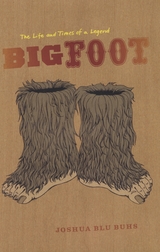 Bigfoot: The Life and Times of a Legend
Joshua Blu Buhs
University of Chicago Press, 2009 Last August, two men in rural Georgia announced that they had killed Bigfoot. The claim drew instant, feverish attention, leading to more than 1,000 news stories worldwide—despite the fact that nearly everyone knew it was a hoax. Though Bigfoot may not exist, there’s no denying Bigfoot mania. With Bigfoot, Joshua Blu Buhs traces the wild and wooly story of America’s favorite homegrown monster. He begins with nineteenth-century accounts of wildmen roaming the forests of America, treks to the Himalayas to reckon with the Abominable Snowman, then takes us to northern California in 1958, when reports of a hairy hominid loping through remote woodlands marked Bigfoot’s emergence as a modern marvel. Buhs delves deeply into the trove of lore and misinformation that has sprung up around Bigfoot in the ensuing half century. We meet charlatans, pseudo-scientists, and dedicated hunters of the beast—and with Buhs as our guide, the focus is always less on evaluating their claims than on understanding why Bigfoot has inspired all this drama and devotion in the first place. What does our fascination with this monster say about our modern relationship to wilderness, individuality, class, consumerism, and the media? Writing with a scientist’s skepticism but an enthusiast’s deep engagement, Buhs invests the story of Bigfoot with the detail and power of a novel, offering the definitive take on this elusive beast.
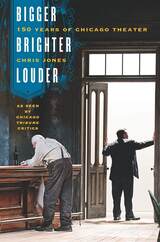 Bigger, Brighter, Louder: 150 Years of Chicago Theater as Seen by "Chicago Tribune" Critics
Chris Jones
University of Chicago Press, 2013 The first known Chicago Tribune theater review appeared on March 25, 1853. An anonymous notice, it shared the page with two other announcements—one about a pair of thousand-pound hogs set to be slaughtered and another trumpeting the largest load of lumber ever to leave Chicago. “And thus Chicago’s priorities were starkly laid out right there on that page,” begins Chris Jones in the introduction to this eyewitness cultural history. “Hog butcher for the world and windy self-promoter, specializing in commerce-driven superlatives. The arts came a poor third. Critics, and the artists they covered, would rail against that perceived set of civic priorities for years.” The Chicago of today, on the other hand, is regarded as one of the world’s premier cities for theater, and no one has had a more consistent front-row seat to its ascendance than the Chicago Tribune theater critics. Bigger, Brighter, Louder weaves together more than 150 years of Tribune reviews into a compelling narrative, pairing full reviews with commentary and history. With a sharp eye for telling details and a keen sense of historical context, Jones, longtime chief Tribune theater critic, takes readers through decades of highs and lows, successes and failures. The book showcases fascinating early reviews of actors and shows that would go on to achieve phenomenal success, including a tryout of A Raisin in the Sun with newcomer Sidney Poitier and the first major review of The Producers. It also delves into the rare and the unusual, such as a previously unpublished Tennessee Williams interview and a long conversation with Edward Albee’s mother. With reviews from Claudia Cassidy, Peregine Pickle, William Leonard, and more, many never collected before, Bigger, Brighter, Louder offers a unique lasting record of an ephemeral art and a riveting look at the history behind Chicago’s rise to theatrical greatness.
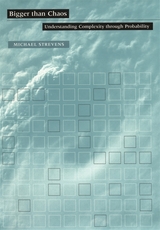 Bigger than Chaos: Understanding Complexity through Probability
Michael Strevens
Harvard University Press, 2003 Many complex systems—from immensely complicated ecosystems to minute assemblages of molecules—surprise us with their simple behavior. Consider, for instance, the snowflake, in which a great number of water molecules arrange themselves in patterns with six-way symmetry. How is it that molecules moving seemingly at random become organized according to the simple, six-fold rule? How do the comings, goings, meetings, and eatings of individual animals add up to the simple dynamics of ecosystem populations? More generally, how does complex and seemingly capricious microbehavior generate stable, predictable macrobehavior?
In this book, Michael Strevens aims to explain how simplicity can coexist with, indeed be caused by, the tangled interconnections between a complex system’s many parts. At the center of Strevens’s explanation is the notion of probability and, more particularly, probabilistic independence. By examining the foundations of statistical reasoning about complex systems such as gases, ecosystems, and certain social systems, Strevens provides an understanding of how simplicity emerges from complexity. Along the way, he draws lessons concerning the low-level explanation of high-level phenomena and the basis for introducing probabilistic concepts into physical theory.
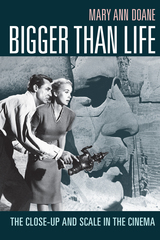 Bigger Than Life: The Close-Up and Scale in the Cinema
Mary Ann Doane
Duke University Press, 2021 In Bigger Than Life Mary Ann Doane examines how the scalar operations of cinema, especially those of the close-up, disturb and reconfigure the spectator's sense of place, space, and orientation. Doane traces the history of scalar transformations from early cinema to the contemporary use of digital technology. In the early years of cinema, audiences regarded the monumental close-up, particularly of the face, as grotesque and often horrifying, even as it sought to expose a character's interiority through its magnification of detail and expression. Today, large-scale technologies such as IMAX and surround sound strive to dissolve the cinematic frame and invade the spectator's space, “immersing” them in image and sound. The notion of immersion, Doane contends, is symptomatic of a crisis of location in technologically mediated space and a reconceptualization of position, scale, and distance. In this way, cinematic scale and its modes of spatialization and despatialization have shaped the modern subject, interpolating them into the incessant expansion of commodification.
|
|
